Dynabook UPP350BT Notebook PC with Bluetooth. Portégé 3500 User Manual cvr Guam
Toshiba Corporation Notebook PC with Bluetooth. Portégé 3500 cvr Guam
Dynabook >
Contents
- 1. Notebook user manual
- 2. Bluetooth portion of user manual with RF exposure information
Notebook user manual
TOSHIBA 3500
Portable Personal Computer
User’s Manual
Copyright
© 2002 by TOSHIBA Corporation. All rights reserved. Under the copyright laws,
this manual cannot be reproduced in any form without the prior written permission
of TOSHIBA. No patent liability is assumed, with respect to the use of the informa-
tion contained herein.
TOSHIBA 3500 Portable Personal Computer User’s Manual
First edition November 2002
Disclaimer
This manual has been validated and reviewed for accuracy. The instructions and
descriptions it contains are accurate for the TOSHIBA 3500 Portable Personal
Computer at the time of this manual’s production. However, succeeding computers
and manuals are subject to change without notice. TOSHIBA assumes no liability
for damages incurred directly or indirectly from errors, omissions or discrepancies
between the computer and the manual.
Trademarks
Intel and Pentium are registered trademarks and SpeedStep is a trademark of Intel
Corporation.
Windows and Microsoft are registered trademarks of Microsoft Corporation.
Photo CD is a trademark of Eastman Kodak.
Other trademarks and registered trademarks not listed above may be used in this
manual.
FCC information
Product Name : Portégé 3500
Model number : PP350
FCC notice "Declaration of Conformity
Information"
This equipment has been tested and found to comply with the limits for a Class B
digital device, pursuant to part 15 of the FCC rules. These limits are designed to
provide reasonable protection against harmful interference in a residential installa-
tion. This equipment generates, uses and can radiate radio frequency energy and, if
not installed and used in accordance with the instructions, may cause harmful
interference to radio communications. However, there is no guarantee that interfer-
ence will not occur in a particular installation. If this equipment does cause harmful
interference to radio or television reception, which can be determined by turning the
equipment off and on, the user is encouraged to try to correct the interference by
one or more of the following measures:
❑Reorient or relocate the receiving antenna.
❑Increase the separation between the equipment and receiver.
❑Connect the equipment into an outlet on a circuit different from that to which
the receiver is connected.
❑Consult the dealer or an experienced radio/TV technician for help.
WARNING: Only peripherals complying with the FCC class B limits may
be attached to this equipment. Operation with non-compliant peripher-
als or peripherals not recommended by TOSHIBA is likely to result in
interference to radio and TV reception. Shielded cables must be used
between the external devices and the computer’s external monitor port,
USB port and microphone jack. Changes or modifications made to this
equipment, not expressly approved by TOSHIBA or parties authorized by
TOSHIBA could void the user’s authority to operate the equipment. The
modular cable that comes with the computer must be used to connect a
modem. Connect the end of the modular cable with the core to the
computer.
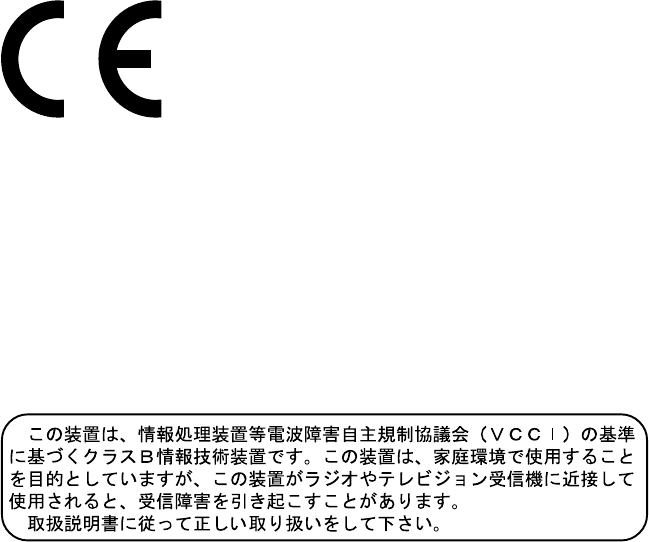
FCC conditions
This device complies with part 15 of the FCC Rules. Operation is subject to the
following two conditions:
1. This device may not cause harmful interference.
2. This device must accept any interference received, including interference that
may cause undesired operation.
Contact
Address: TOSHIBA America Information Systems, Inc.
9740 Irvine Boulevard
Irvine, California 92618-1697
Telephone: (949) 583-3000
EU Declaration of Conformity
TOSHIBA declares, that the product: PP350* conforms to the following Standards:
Supplementary Information: “The product complies with the requirements
of the Low Voltage Directive 73/23/EEC, the
EMC Directive 89/336/EEC and/or the R&TTE
Directive 1999/05/EEC.”
This product is carrying the CE-Mark in accordance with the related European
Directives. Responsible for CE-Marking is TOSHIBA Europe, Hammfelddamm 8,
41460 Neuss, Germany.
VCCI Class B Information
Modem warning notice
Conformity Statement
The equipment has been approved to [Commission Decision “CTR21”] for pan-
European single terminal connection to the Public Switched Telephone Network
(PSTN).
However, due to differences between the individual PSTNs provided in different
countries/regions the approval does not, of itself, give an unconditional assurance
of successful operation on every PSTN network termination point.
In the event of problems, you should contact your equipment supplier in the first
instance.
Network Compatibility Statement
This product is designed to work with, and is compatible with the following
networks. It has been tested to and found to conform with the additional require-
ments conditional in EG 201 121.
Germany ATAAB AN005,AN006,AN007,AN009,AN010 and
DE03,04,05,08,09,12,14,17
Greece ATAAB AN005,AN006 and GR01,02,03,04
Portugal ATAAB AN001,005,006,007,011 and P03,04,08,10
Spain ATAAB AN005,007,012, and ES01
Switzerland ATAAB AN002
All other countries/regions ATAAB AN003,004
Specific switch settings or software setup are required for each network, please refer
to the relevant sections of the user guide for more details.
The hookflash (timed break register recall) function is subject to separate national
type approvals. It has not been tested for conformity to national type regulations,
and no guarantee of successful operation of that specific function on specific
national networks can be given.

Japan regulations
Region selection
If you are using the computer in Japan, technical regulations described in the
Telecommunications Business Law require that you select the Japan region mode. It
is illegal to use the modem in Japan with any other selection.
Redial
Up to two redial attempts can be made. If more than two redial attempts are made,
the modem will return Black Listed. If you are experiencing problems with the
Black Listed code, set the interval between redials at one minute or longer.
Japan’s Telecommunications Business Law permits up to two redials on analogue
telephones, but the redials must be made within a total of three minutes.
The internal modem is approved by Japan Approvals Institute for Telecommunica-
tions Equipment.
A00-0940JP
Pursuant to FCC CFR 47, Part 68:
When you are ready to install or use the modem, call your local telephone company
and give them the following information:
❑The telephone number of the line to which you will connect the modem
❑The registration number that is located on the device
The FCC registration number of the modem will be found on either the device which
is to be installed, or, if already installed, on the bottom of the computer outside of
the main system label.
❑The Ringer Equivalence Number (REN) of the modem, which can vary. For the
REN of your modem, refer to your modem’s label.
The modem connects to the telephone line by means of a standard jack called the
USOC RJ11C.
Type of service
Your modem is designed to be used on standard-device telephone lines. Connec-
tion to telephone company-provided coin service (central office implemented
systems) is prohibited. Connection to party lines service is subject to state tariffs. If
you have any questions about your telephone line, such as how many pieces of
equipment you can connect to it, the telephone company will provide this informa-
tion upon request.
Telephone company procedures
The goal of the telephone company is to provide you with the best service it can. In
order to do this, it may occasionally be necessary for them to make changes in their
equipment, operations, or procedures. If these changes might affect your service or
the operation of your equipment, the telephone company will give you notice in
writing to allow you to make any changes necessary to maintain uninterrupted
service.
If problems arise
If any of your telephone equipment is not operating properly, you should immedi-
ately remove it from your telephone line, as it may cause harm to the telephone
network. If the telephone company notes a problem, they may temporarily discon-
tinue service. When practical, they will notify you in advance of this disconnection.
If advance notice is not feasible, you will be notified as soon as possible. When
you are notified, you will be given the opportunity to correct the problem and
informed of your right to file a complaint with the FCC. In the event repairs are ever
needed on your modem, they should be performed by TOSHIBA Corporation or an
authorized representative of TOSHIBA Corporation.
Disconnection
If you should ever decide to permanently disconnect your modem from its present
line, please call the telephone company and let them know of this change.
Fax branding
The Telephone Consumer Protection Act of 1991 makes it unlawful for any person
to use a computer or other electronic device to send any message via a telephone
fax machine unless such message clearly contains in a margin at the top or bottom
of each transmitted page or on the first page of the transmission, the date and time it
is sent and an identification of the business, other entity or individual sending the
message and the telephone number of the sending machine or such business, other
entity or individual. In order to program this information into your fax modem, you
should complete the setup of your fax software before sending messages.
Instructions for IC CS-03 certified equipment
1 The Industry Canada label identifies certified equipment. This certification
means that the equipment meets certain telecommunications network protective,
operational and safety requirements as prescribed in the appropriate Terminal
Equipment Technical Requirements document(s). The Department does not
guarantee the equipment will operate to the user’s satisfaction.
Before installing this equipment, users should ensure that it is permissible to be
connected to the facilities of the local telecommunications company. The
equipment must also be installed using an acceptable method of connection.
The customer should be aware that compliance with the above conditions may
not prevent degradation of service in some situations. Repairs to certified
equipment should be coordinated by a representative designated by the
supplier. Any repairs or alterations made by the user to this equipment, or
equipment malfunctions, may give the telecommunications company cause to
request the user to disconnect the equipment.
Users should ensure for their own protection that the electrical ground connec-
tions of the power utility, telephone lines and internal metallic water pipe system,
if present, are connected together. This precaution may be particularly important
in rural areas.
CAUTION: Users should not attempt to make such connections them-
selves, but should contact the appropriate electric inspection authority,
or electrician, as appropriate.
2 The user manual of analog equipment must contain the equipment’s Ringer
Equivalence Number (REN) and an explanation notice similar to the following:
The Ringer Equivalence Number (REN) of the modem, which can vary. For the
REN of your modem, refer to your modem’s label.
NOTICE: The Ringer Equivalence Number (REN) assigned to each
terminal device provides an indication of the maximum number of
terminals allowed to be connected to a telephone interface. The termina-
tion on an interface may consist of any combination of devices subject
only to the requirement that the sum of the Ringer Equivalence Numbers
of all the devices does not exceed 5.
3The standard connecting arrangement (telephone jack type) for this equipment is
jack type(s): USOC RJ11C.
The IC registration number of the modem is shown below.
Canada: 1353 11026A
Notes for Users in Australia and New Zealand
Modem warning notice for Australia
Modems connected to the Australian telecoms network must have a valid Austel
permit. This modem has been designed to specifically configure to ensure compli-
ance with Austel standards when the country/region selection is set to Australia.
The use of other country/region setting while the modem is attached to the
Australian PSTN would result in you modem being operated in a non-compliant
manner. To verify that the country/region is correctly set, enter the command ATI
which displays the currently active setting.
To set the country/region permanently to Australia, enter the following command
sequence:
AT%TE=1
ATS133=1
AT&F
AT&W
AT%TE=0
ATZ
Failure to set the modem to the Australia country/region setting as shown above
will result in the modem being operated in a non-compliant manner. Consequently,
there would be no permit in force for this equipment and the Telecoms Act 1991
prescribes a penalty of $12,000 for the connection of non-permitted equipment.
Notes for use of this device in New Zealand
❑The grant of a Telepermit for a device in no way indicates Telecom acceptance
of responsibility for the correct operation of that device under all operating
conditions. In particular the higher speeds at which this modem is capable of
operating depend on a specific network implementation which is only one of
many ways of delivering high quality voice telephony to customers. Failure to
operate should not be reported as a fault to Telecom.
❑In addition to satisfactory line conditions a modem can only work properly if:
a/ it is compatible with the modem at the other end of the call and
b/ the application using the modem is compatible with the application at the
other end of the call - e.g., accessing the Internet requires suitable
software in addition to a modem.
❑This equipment shall not be used in any manner which could constitute a
nuisance to other Telecom customers.
❑Some parameters required for compliance with Telecom’s PTC Specifications
are dependent on the equipment (PC) associated with this modem. The
associated equipment shall be set to operate within the following limits for
compliance with Telecom Specifications:
a/ There shall be no more than 10 call attempts to the same number within
any 30 minute period for any single manual call initiation, and
b/ The equipment shall go on-hook for a period of not less than 30 seconds
between the end of one attempt and the beginning of the next.
c/ Automatic calls to different numbers shall be not less than 5 seconds
apart.
❑Immediately disconnect this equipment should it become physically damaged,
and arrange for its disposal or repair.
❑The correct settings for use with this modem in New Zealand are as follows:
ATB0 (CCITT operation)
AT&G2 (1800 Hz guard tone)
AT&P1 (Decadic dialing make-break ratio =33%/67%)
ATS0=0 (not auto answer)
ATS10=less than 150 (loss of carrier to hangup delay, factory default of 15
recommended)
ATS11=90 (DTMF dialing on/off duration=90 ms)
ATX2 (Dial tone detect, but not (U.S.A.) call progress detect)
❑When used in the Auto Answer mode, the S0 register must be set with a value
of 3 or 4. This ensures:
(a) a person calling your modem will hear a short burst of ringing before the
modem answers. This confirms that the call has been successfully
switched through the network.
(b) caller identification information (which occurs between the first and
second ring cadences) is not destroyed.
❑The preferred method of dialing is to use DTMF tones (ATDT...) as this is
faster and more reliable than pulse (decadic) dialing. If for some reason you
must use decadic dialing, your communications program must be set up to
record numbers using the following translation table as this modem does not
implement the New Zealand “Reverse Dialing” standard.
Number to be dialed: 0 1 2 3 4 5 6 7 8 9
Number to program into computer: 0 9 8 7 6 5 4 3 2 1
Note that where DTMF dialing is used, the numbers should be entered
normally.
❑The transmit level from this device is set at a fixed level and because of this
there may be circumstances where the performance is less than optimal. Before
reporting such occurrences as faults, please check the line with a standard
Telepermitted telephone, and only report a fault if the phone performance is
impaired.
❑It is recommended that this equipment be disconnected from the Telecom line
during electrical storms.
❑When relocating the equipment, always disconnect the Telecom line connec-
tion before the power connection, and reconnect the power first.
❑This equipment may not be compatible with Telecom Distinctive Alert ca-
dences and services such as FaxAbility.
NOTE THAT FAULT CALLOUTS CAUSED BY ANY OF THE ABOVE
CAUSES MAY INCUR A CHARGE FROM TELECOM
General conditions
As required by PTC 100, please ensure that this office is advised of any changes to
the specifications of these products which might affect compliance with the relevant
PTC Specifications.
The grant of this Telepermit is specific to the above products with the marketing
description as stated on the Telepermit label artwork. The Telepermit may not be
assigned to other parties or other products without Telecom approval.
A Telepermit artwork for each device is included from which you may prepare any
number of Telepermit labels subject to the general instructions on format, size and
colour on the attached sheet.
The Telepermit label must be displayed on the product at all times as proof to
purchasers and service personnel that the product is able to be legitimately
connected to the Telecom network.
The Telepermit label may also be shown on the packaging of the product and in the
sales literature, as required in PTC 100.
The charge for a Telepermit assessment is $337.50. An additional charge of $337.50
is payable where an assessment is based on reports against non-Telecom New
Zealand Specifications. $112.50 is charged for each variation when submitted at the
same time as the original.
An invoice for $NZ1237.50 will be sent under separate cover.

xiii
Table of Contents
Preface
Manual contents .................................................................................xix
Conventions .........................................................................................xx
Abbreviations ........................................................................................ xx
Icons .................................................................................................... xx
Keys .................................................................................................... xx
Key operation ...................................................................................... xxi
Display ................................................................................................ xxi
Messages ........................................................................................... xxi
General Precautions
Stress injury ..................................................................................... xxiii
Heat injury........................................................................................ xxiii
Pressure or impact damage ........................................................... xxiii
PC card overheating ........................................................................xxiv
Chapter 1 Introduction
Equipment checklist .......................................................................... 1-1
Features ............................................................................................. 1-3
Special features................................................................................. 1-7
Utilities................................................................................................ 1-9
Options ............................................................................................. 1-11
Chapter 2 The Grand Tour
Front with the display closed ............................................................ 2-1
Left side............................................................................................... 2-2
Right side ............................................................................................ 2-4
Back side ............................................................................................. 2-4
Underside ............................................................................................ 2-5
Front with the display open ............................................................... 2-6
Indicators............................................................................................. 2-8
AC adaptor ........................................................................................ 2-11
xiv
Chapter 3 Getting Started
Setting up your work space ............................................................... 3-2
General conditions .............................................................................. 3-2
Placement of computer ....................................................................... 3-2
Seating and posture ............................................................................ 3-3
Lighting ............................................................................................... 3-4
Work habits ........................................................................................ 3-4
Opening the computer in Tablet PC mode ...................................... 3-5
Connecting the AC adaptor ............................................................... 3-6
Opening the display ........................................................................... 3-8
Turning on the power ........................................................................ 3-9
Starting up for the first time............................................................. 3-10
Turning off the power ...................................................................... 3-10
Shut Down mode (Boot mode) .......................................................... 3-10
Hibernation mode .............................................................................. 3-11
Standby mode .................................................................................. 3-13
Restarting the computer .................................................................. 3-14
Restoring the preinstalled software
from the Product Recovery CD-ROM ........................................ 3-15
Chapter 4 Operating Basics
Using the Touch Pad .......................................................................... 4-1
Using the Pen (Stylus) ........................................................................ 4-2
Installing the pen ................................................................................. 4-4
Removing the pen ............................................................................... 4-5
Pen actions......................................................................................... 4-6
Single tap ........................................................................................... 4-6
Double tap .......................................................................................... 4-6
Tap and hold ....................................................................................... 4-6
Drag .................................................................................................... 4-6
Drag and drop ..................................................................................... 4-6
Replacing the pen tip .......................................................................... 4-7
Changing to the Tablet PC mode...................................................... 4-8
Changing to the PC mode ............................................................... 4-11
Using the USB FDD Kit ..................................................................... 4-11
Connecting 3 1/2" diskette drive ........................................................ 4-12
Disconnecting 3 1/2" diskette drive ................................................... 4-13
Diskette care .................................................................................... 4-13
Wireless communications ................................................................ 4-14
xv
Wireless LAN.................................................................................... 4-14
Bluetooth wireless technology ........................................................... 4-14
Wireless communication switch ........................................................ 4-15
Wireless communication Indicator .................................................... 4-15
LAN .................................................................................................... 4-16
LAN cable types ............................................................................... 4-16
Connecting LAN cable ...................................................................... 4-16
Disconnecting LAN cable .................................................................. 4-17
Using the microphone ...................................................................... 4-18
Modem............................................................................................... 4-18
Region selection ............................................................................... 4-19
Properties menu................................................................................ 4-20
Connecting........................................................................................ 4-21
Disconnecting ................................................................................... 4-22
Cleaning the computer .................................................................... 4-22
Moving the computer ....................................................................... 4-22
Heat dispersal ................................................................................... 4-23
Chapter 5 The Keyboard
Typewriter keys .................................................................................. 5-1
F1 … F12 function keys ...................................................................... 5-2
Soft keys: Fn key combinations......................................................... 5-2
Emulating keys on enhanced keyboard ............................................... 5-2
Hotkeys .............................................................................................. 5-4
Fn Sticky key ..................................................................................... 5-6
Windows special keys ........................................................................ 5-7
Keypad overlay................................................................................... 5-7
Turning on the overlays ....................................................................... 5-7
Temporarily using normal keyboard (overlay on) .................................. 5-8
Temporarily using overlay (overlay off) ................................................. 5-9
Temporarily changing modes ............................................................... 5-9
Generating ASCII characters ............................................................. 5-9
xvi
Chapter 6 Power and Power-Up Modes
Power conditions................................................................................ 6-1
Power indicators ................................................................................ 6-3
Battery indicators................................................................................ 6-3
DC IN indicator .................................................................................... 6-3
Power indicator ................................................................................... 6-4
Battery types ....................................................................................... 6-4
Battery Pack....................................................................................... 6-4
Real time clock battery ....................................................................... 6-5
Care and use of the Battery Pack ..................................................... 6-5
Safety precautions.............................................................................. 6-6
Charging the batteries ......................................................................... 6-9
Monitoring battery capacity ............................................................... 6-10
Maximizing battery operating time .................................................... 6-11
Retaining data with power off ............................................................. 6-12
Extending battery life ........................................................................ 6-12
Replacing the Battery Pack ............................................................. 6-13
Removing the Battery Pack ............................................................... 6-13
Installing the Battery Pack ................................................................ 6-15
Starting the computer by password ................................................ 6-16
Tablet PC mode ................................................................................ 6-16
Power-up modes .............................................................................. 6-17
Windows utilities ............................................................................... 6-17
Hotkeys ............................................................................................ 6-17
Panel power off ................................................................................ 6-17
System Auto Off ................................................................................ 6-17
Chapter 7 HW Setup and Passwords
HW Setup ............................................................................................ 7-1
Accessing HW Setup .......................................................................... 7-1
HW Setup window............................................................................... 7-1
Supervisor password .......................................................................... 7-9
Chapter 8 Optional Devices
PC cards .............................................................................................. 8-2
Installing a PC card ............................................................................. 8-2
Removing a PC card ........................................................................... 8-4
SD cards .............................................................................................. 8-5
Installing an SD card ........................................................................... 8-5
xvii
Removing an SD card.......................................................................... 8-6
Compact Flash .................................................................................... 8-7
Installing a Compact Flash module ..................................................... 8-7
Removing a Compact Flash module .................................................... 8-8
Memory expansion ........................................................................... 8-10
Removing and installing memory module in Slot A............................ 8-11
Installing memory module in Slot B ................................................... 8-15
Removing memory module in Slot B.................................................. 8-17
Battery Pack...................................................................................... 8-18
Universal AC Adaptor ....................................................................... 8-18
Battery Charger ................................................................................ 8-18
USB FDD Kit ...................................................................................... 8-19
External monitor ............................................................................... 8-19
Security lock ..................................................................................... 8-20
Chapter 9 Troubleshooting
Problem solving process .................................................................... 9-1
Preliminary checklist........................................................................... 9-1
Analyzing the problem ........................................................................ 9-2
Hardware and system checklist......................................................... 9-3
System start-up .................................................................................. 9-3
Self test .............................................................................................. 9-4
Power ................................................................................................. 9-4
Password ............................................................................................ 9-7
Keyboard ............................................................................................ 9-8
LCD panel ........................................................................................... 9-8
Hard disk drive .................................................................................... 9-9
Diskette drive .................................................................................... 9-10
Infrared port ....................................................................................... 9-10
Pointing device .................................................................................. 9-11
PC card ............................................................................................ 9-14
SD card ............................................................................................ 9-14
Compact Flash ................................................................................. 9-15
Monitor ............................................................................................. 9-15
Sound system .................................................................................. 9-16
USB .................................................................................................. 9-16
Modem ............................................................................................. 9-17
LAN .................................................................................................. 9-19
Wireless LAN.................................................................................... 9-19
xviii
Bluetooth .......................................................................................... 9-20
TOSHIBA support ............................................................................. 9-21
Before you call ................................................................................. 9-21
Where to write .................................................................................. 9-21
Appendixes
Appendix A
Specifications ................................................................................... A-1
Appendix B
Display Controller and Modes ......................................................... B-1
Appendix C
AT Commands .................................................................................. C-1
Appendix D
S-registers ......................................................................................... D-1
Appendix E
V.90 .....................................................................................................E-1
Appendix F
Wireless LAN ...................................................................................... F-1
Appendix G
AC Power Cord and Connectors...................................................... G-1
Appendix H
Internal Modem Guide ..................................................................... H-1
Appendix I
Parts Numbers .................................................................................... I-1
Glossary
Index

xix
Preface
Congratulations on your purchase of the TOSHIBA 3500 computer. This powerful,
lightweight notebook computer is designed to provide years of reliable, high-
performance computing.
This manual tells how to set up and begin using your TOSHIBA 3500 computer. It
also provides detailed information on configuring your computer, basic operations
and care, using optional devices and troubleshooting.
If you are a new user of computers or if you’re new to portable computing, first read
over the Introduction and The Grand Tour chapters to familiarize yourself with the
computer’s features, components and accessory devices. Then read Getting Started
for step-by-step instructions on setting up your computer.
If you are an experienced computer user, please continue reading the preface to
learn how this manual is organized, then become acquainted with this manual by
browsing through its pages. Be sure to look over the Special features section of the
Introduction, to learn about features that are uncommon or unique to the computers
and carefully read HW Setup and Passwords. If you are going to install PC cards or
connect external devices such as a monitor, be sure to read Chapter 8, Optional
Devices.
Manual contents
This manual is composed of nine chapters, nine appendixes, a glossary, and an
index.
Chapter 1, Introduction, is an overview of the computer’s features, capabilities, and
options.
Chapter 2, The Grand Tour, identifies the components of the computer and briefly
explains how they function.
Chapter 3, Getting Started, provides a quick overview of how to begin operating
your computer in PC mode and Tablet PC mode and gives tips on safety and
designing your work area.
Chapter 4, Operating Basics, includes instructions on using the following devices:
Touch Pad (Pen (Stylus)), external diskette drive, wireless communication features,
LAN and internal modem.

xx
User's Manual
Chapter 5, The Keyboard, describes special keyboard functions including the
keypad overlay and hotkeys.
Chapter 6, Power and Power-Up Modes, gives details on the computer’s power
resources and battery save modes.
Chapter 7, HW Setup and Passwords, explains how to configure the computer using
the HW Setup program. It also tells how to set a password.
Chapter 8, Optional Devices, describes the optional hardware available.
Chapter 9, Troubleshooting, provides helpful information on how to perform some
diagnostic tests, and suggests courses of action if the computer doesn’t seem to be
working properly.
The Appendixes provide technical information about your computer.
The Glossary defines general computer terminology and includes a list of acronyms
used in the text.
The Index quickly directs you to the information contained in this manual.
Conventions
This manual uses the following formats to describe, identify, and highlight terms
and operating procedures.
Abbreviations
On first appearance, and whenever necessary for clarity, abbreviations are enclosed
in parentheses following their definition. For example: Read Only Memory
(ROM). Acronyms are also defined in the Glossary.
Icons
Icons identify ports, dials, and other parts of your computer. The indicator panel
also uses icons to identify the components it is providing information on.
Keys

xxi
The keyboard keys are used in the text to describe many computer operations. A
distinctive typeface identifies the key top symbols as they appear on the keyboard.
For example, Enter identifies the Enter key.
Key operation
Some operations require you to simultaneously use two or more keys. We identify
such operations by the key top symbols separated by a plus sign (+). For example,
Ctrl + C means you must hold down Ctrl and at the same time press C. If three
keys are used, hold down the first two and at the same time press the third.
ABC When procedures require an action such as clicking an icon or entering
text, the icon’s name or the text you are to type in is represented in the
type face you see to the left.
Display
ABC Names of Windows® or icons or text generated by the computer that
appears on its display screen is presented in the type face you see to the
left.
Messages
Messages are used in this manual to bring important information to your attention.
Each type of message is identified as shown below.
CAUTION: Pay attention! A caution informs you that improper use of
equipment or failure to follow instructions may cause data loss or
damage your equipment.
NOTE: Please read. A note is a hint or advice that helps you make best
use of your equipment.
Conventions

xxii
User's Manual

xxiii
General Precautions
TOSHIBA computers are designed to optimize safety, minimize strain and withstand
the rigors of portability. However, certain precautions should be observed to further
reduce the risk of personal injury or damage to the computer.
Be certain to read the general precautions below and to note the cautions included
in the text of the manual.
Stress injury
Carefully read the Instruction Manual for Safety & Comfort. It contains information
on prevention of stress injuries to your hands and wrists than can be caused by
extensive keyboard use. Chapter 3, Getting Started, also includes information on
work space design, posture and lighting that can help reduce physical stress.
Heat injury
GAvoid prolonged physical contact with the bottom of the computer. If the
computer is used for long periods, its surface can become very warm. While the
temperature will not feel hot to the touch, if you maintain physical contact with
the computer for a long time (if you rest the computer on your lap, for example)
your skin might suffer low-heat injury.
GIf the computer has been used for a long time, avoid direct contact with the
metal plate supporting the I/O ports. It can become hot.
GThe surface of the AC adaptor can become hot when in use. This condition
does not indicate a malfunction. If you need to transport the AC adaptor,
disconnect it and let it cool before moving it.
GDo not lay the AC adaptor on a material that is sensitive to heat. The material
could be damaged.
Pressure or impact damage
Do not apply heavy pressure to the computer or subject it to strong impact.
Excessive pressure or impact can cause damage to computer components or
otherwise cause malfunctions.

User's Manual
xxiv
PC card overheating
Some PC cards can become hot with prolonged use. Overheating of a PC card can
result in errors or instability in the PC card operation. Also be careful when you
remove a PC card that has been used for a long time.

I
NTRODUCTION
Chapter 1
Introduction
Equipment checklist ........................................................................... 1-1
Features .............................................................................................. 1-3
Special features.................................................................................. 1-7
Utilities................................................................................................. 1-9
Options .............................................................................................. 1-11

INTRODUCTION

1-1
I
NTRODUCTION
Chapter 1
Introduction
This chapter provides an equipment checklist, and it identifies the computer’s
features, options and accessories.
CAUTION: Some of the features described in this manual may not
function properly if you use an operating system that was not preinstalled
by TOSHIBA.
Equipment checklist
Carefully unpack your computer. Save the box and packing materials for future use.
Check to make sure you have all the following items:
❑PORTÉGÉ 3500 Portable Personal Computer
❑Universal AC Adaptor and power cord
❑Pen (Stylus)
❑Modular cable
Windows XP Tablet PC Edition
❑The following software is preinstalled:
•Microsoft® Windows XP Tablet PC Edition
• TOSHIBA Modem driver
• TOSHIBA Display driver
• TOSHIBA Touch Pad driver
• TOSHIBA Sound driver
• TOSHIBA Bluetooth drivers (Can be used only in Bluetooth models)
• TOSHIBA Wireless LAN Driver
• TOSHIBA Software Modem Driver
• TOSHIBA SD card Driver
• TOSHIBA Utilities
• TOSHIBA Hotkey Utility for Display Devices
•TOSHIBA Power Saver

1-2
User's Manual
INTRODUCTION
•TOSHIBA Common Modules
• TOSHIBA Console
• TOSHIBA Network Device Switch
• TOSHIBA Skins for Windows Media Player
•Online manual
•Sensiva Symbol CommanderTM
❑Documentation:
•PORTÉGÉ 3500 Portable Personal Computer User’s Manual
•Microsoft Windows XP Tablet PC Edition manual package
•Instruction Manual for Safety & Comfort
•End User License Agreement
•International Limited Warranty (ILW) Instruction
(This instruction is included only with computers sold in ILW supported
areas.)
❑Product Recovery CD-ROM (contains TOSHIBA Management Console, which
is not preinstalled)

1-3
I
NTRODUCTION
Features
The computer uses TOSHIBA’s advanced Large Scale Integration (LSI),
Complementary Metal-Oxide Semiconductor (CMOS) technology extensively to
provide compact size, minimum weight, low power usage, and high reliability. This
computer incorporates the following features and benefits:
Processor
Built-in Mobile Intel® Pentium® III processor 1.33 GHz - M with
Enhanced Intel® SpeedStep™ Technology incorporates a
math coprocessor and 32 KB cache.
Memory
Built-in SDR (S Data Rate) modules are available in 128 or 256 or
512 MB. Memory modules can be installed in the two
memory slots for a maximum of 1 GB system memory.
Expansion slot The computer has two slots for Random Access Memory
(RAM) cards. System memory up to 1 GB can be installed.
Level 2 cache A 512 KB level 2 cache is provided to maximize perfor-
mance.
Video RAM Video display uses 16 MB of system memory as video
RAM.
Disks
Internal hard disk Available in four sizes.
20.0 billion bytes (18.63 GB)
30.0 billion bytes (27.94 GB)
40.0 billion bytes (37.25 GB)
60.0 billion bytes (55.88 GB)
Display
The computer’s LCD panel supports high-resolution video graphics. The screen
can be set at a wide range of viewing angles for maximum comfort and readability.
Features
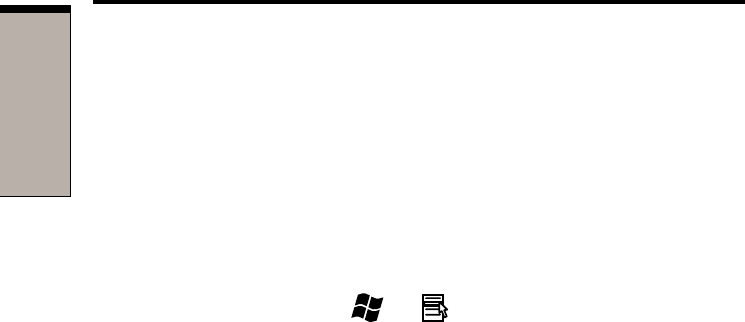
1-4
User's Manual
INTRODUCTION
Built-in 12.1" XGA-TFT, 1024 horizontal x 768 vertical pixels, up
to 16 M colors. This resolution can be changed in Tablet
PC mode. Refer to xxxxxxx for the details.
Graphics controller A 128-bit graphics controller maximizes display
performance. Refer to Appendix B for more information.
Keyboard
Built-in 84 keys or 85 keys, compatible with IBM enhanced
keyboard, embedded numeric overlay, dedicated cursor
control, and keys.
Touch pad
Built-in A touch pad and control buttons in the palm rest enable
control of the on-screen pointer and scrolling of windows.
Pen (Stylus)
Supplied A pen enables data entry directly through the display
screen.
Power
Battery Pack The computer is powered by one rechargeable lithium-ion
Battery Pack.
RTC battery The internal RTC battery backs up the Real Time Clock
(RTC) and calendar.
AC adaptor The universal AC adaptor provides power to the system
and recharges the batteries when they are low. It comes
with a detachable power cord. Because it is designed for
universal use, it can operate in a range between 100 and 240
volts AC.
Ports
Headphone Enables connection of a stereo headphones.
Microphone Enables connection of a monaural microphone.

1-5
I
NTRODUCTION
Infrared This infrared port is compatible with Infrared Data
Association (IrDA 1.1) Fast InfraRed (FIR) standards. It
enables cableless 4 Mbps data transfer with IrDA 1.1
compatible external devices.
External monitor 15-pin, analog VGA port supports VESA DDC2B compat-
ible functions.
Universal Serial Bus The computer has two Universal Serial Bus ports that
(USB 2.0) comply with the USB 2.0 standard, which enables data
transfer speeds 40 times faster than USB 1.1 standard.
(The ports also support USB 1.1.).
Slots
PC card The PC card slot accommodates one 5 mm Type II card.
SD card This slot lets you easlity transfer data from devices, such
as digital cameras and Personal Digital Assistants, that use
SD card flash-memory.
Compct Flash module This slot accommodates Compact Flash module of various
capacities. You cannot use Compact Flash module that
does not conform to CFA specifications. You can also use
Compact Flash I/O module other than memory module.
Multimedia
Sound System Windows Sound System compatible sound system is
provided with internal speaker as well as jacks for an
external microphone and headphone.
Communications
Modem An internal modem provides capability for data and fax
communication. It supports V.90 (V.92). Refer to Appendix
E. The speed of data transfer and fax depends on analog
telephone line conditions. It has a modem jack for connect-
ing to a telephone line. It is preinstalled as a standard
device in some markets. Both of V.90 amd V.92 are
supported only in USA and Canada. Only V.90 is available
in other regions.
Features

1-6
User's Manual
INTRODUCTION
LAN The computer is equipped with a LAN card that supports
Ethernet LAN (10 Mbit/s, 10BASE-T) and Fast Ethernet
LAN (100 Mbit/s, 100BASE-Tx).
Wireless LAN In some markets, the computer is equipped with a Wireless
LAN mini-PCI card that is compatible with other LAN
systems based on Direct Sequence Spread Spectrum radio
technology that complies with the IEEE 802.11 Standard
(Revision B). It supports data transfer up to 11 Mbit/s. It
has Frequency Channel Selection (2.4 GHz) and allows
roaming over multiple channels. This description is
applicable to the model equipped with wireless LAN
function.
Bluetooth Circuits supporting Bluetooth communications standards
enable wireless connection to compatible devices. This
description is applicable to the model equipped with
Bluetooth function.
Security
Security lock slot Connects an optional security lock to anchor the computer
to a desk or other large object
Software
Operating System One of the following operating systems are Windows XP
Tablet PC Edition. Refer to the preinstalled software
section at the front of this chapter.
TOSHIBA Utilities A number of utilities and drivers are preinstalled to make
your computer more convenient to use. Refer to the
Utilities section in this chapter.
Plug and Play When you connect an external device to the computer or
when you install a component, Plug and Play capability
enables the system to recognize the connection and make
the necessary configurations automatically.

1-7
I
NTRODUCTION
Special features
The following features are either unique to TOSHIBA computers or are advanced
features, which make the computer more convenient to use.
Hotkeys Key combinations let you quickly modify the system
configuration directly from the keyboard without running a
system configuration program.
Keypad overlay Gray keys with gray lettering make up the keypad overlay,
which lets you use the keyboard for ten-key operations or
cursor control.
Display automatic This feature automatically cuts off power to the internal
power off display when there is no keyboard input for a time
specified. Power is restored when any key is pressed. You
can specify the time in the Turn off monitor item of the
Power Save Mode window in Power Saver.
HDD automatic This feature automatically cuts off power to the hard disk
power off drive when it is not accessed for a time specified. Power is
restored when the hard disk is accessed. You can specify
the time in the Turn off hard disks item of the Power Save
Mode window in Power Saver.
System automatic This feature automatically turns off power to the system
power off when there is no input for a time specified. You can specify
the time in the System standby or System hibernate item of
the System Power Mode window in Power Saver.
Battery save mode This feature lets you save battery power. You can specify
the Power Save Mode in the Running on batteries item of
the Power Save Modes window in Power Saver.
Power on password Two levels of password security are available: supervisor
and user. This feature prevents unauthorized access to your
computer.
Special features

1-8
User's Manual
INTRODUCTION
Instant security A hotkey function blanks the screen and disables the
computer providing quick and easy data security.
Panel power on/off This feature turns power to the computer off when the
display panel is closed and turns it back on when the panel
is opened. You can specify the setting in the When I close
the lid item of the System Power Mode window in Power
Saver.
Auto power on This feature lets you set a time and date for the computer
to turn on automatically. The feature is useful for receiving
remote communications while you are asleep or away. You
can specify the setting in Scheduled Tasks.
Standby If you have to interrupt your work, you can turn off the
power without exiting from your software. Data is main-
tained in the computer’s main memory. When you turn on
the power again, you can continue working right where
you left off.
Hibernation This feature lets you turn off the power without exiting
from your software. The contents of main memory is saved
to the hard disk, when you turn on the power again, you
can continue working right where you left off.
Heat dispersal To protect from overheating, the CPU has an internal
temperature sensor. If the computer’s internal temperature
rises to a certain level, the cooling fan is turned on or the
processing speed is lowered. Use the Fan item of the
Power Save Modes window in Power Saver.
Maximum Turns on fan first, then if necessary
Performance lowers CPU processing speed.
Performance Uses a combination of fan and
lowering the CPU processing speed.
Battery optimized Lowers the CPU processing speed
first, then if necessary turns on the
fan.

1-9
I
NTRODUCTION
Utilities
This section describes preinstalled utilities and tells how to start them. For details
on operations, refer to each utility’s online manual, help files or readme files.
TOSHIBA Power Saver To access this power savings management program in
Windows XP, open the Control Panel, click Performance
and Maintenance and click the TOSHIBA Power Saver
icon.
HW Setup This program lets you customize your hardware settings
according to the way you work with your computer and
the peripherals you use. To start the utility in Windows
XP, open the Control Panel, click Printers and Other
Hardware and click the TOSHIBA HW Setup icon.
Fn-esse This Windows program lets you define your own “short-
cut” keys to quickly launch applications and speed your
work in Windows. To start the utility, click the Windows
Start button, point to All Programs, point to TOSHIBA
Utilities and click Fn-esse.
Supervisor Password This utility for Windows lets you register a Supervisor
Utility for Windows Password, which restricts access to HW Setup.
Display Driver The display driver enables simultaneous display on the
for Windows internal LCD, and on an external computer monitor. To
enable this function, use the Display Properties dialogue
box.
Symbol Commander This software enables the user to run an application or to
show home page by drawing a simple mark on the display
with the Pen (stylus). You can customize the action to boot
the computer and to run the application.
Utilities

1-10
User's Manual
INTRODUCTION
Sound drivers A broad range of audio controls are possible through the
ALi sound driver, including Software Synthesize, Mic
volume and Power management. Click Control Panel and
click the ALi sound setup icon to adjust power manage-
ment settings.
For other sound settings, use the Windows Device
Manager, Multimedia panel or volume control dial.
TOSHIBA Accessibility This utility lets you make the Fn key sticky, that is, you
can press it once, release it, and they press an “F number”
key. The Fn key remains active until another key is
pressed.
Hotkey utility This utility lets you display or hide a confirmation message
when you press Fn + F3 or Fn + F4.
TOSHIBA Console TOSHIBA Console is a graphical user interface that
provides easy access to help and services. It is the default
function launched by the TOSHIBA Console button.
Bluetooth TOSHIBA This software enables communication between remote
Stack Bluetooth devices. Refer to the Quick Start Guide.
NOTE: Bluetooth cannnot be used in models that do not have a
Bluetooth module installed.

1-11
I
NTRODUCTION
Options
You can add a number of options to make your computer even more powerful
and convenient to use. The following options are available:
Memory modules Two memory expansion slots are available for installing
128, 256 or 512 MB memory modules. The modules are SD
Random Access Memory (SD-RAM), 144-pin, SO Dual
Inline Memory Modules (SO-DIMM).
Battery Pack A Battery Pack (PA3228U) can be purchased from your
TOSHIBA dealer. The Battery Pack is identical to the one
that came with your computer. Use it as a spare or replace-
ment.
Universal AC Adaptor If you use your computer at more than one site, it may be
convenient to purchase an additional Universal AC
Adaptor for each site so you will not have to carry the
adaptor with you.
USB FDD Kit A 3 1/2" diskette drive accommodates 1.44-megabyte or
720-kilobyte diskette. It connects to a USB port. (Windows
XP does not support 720-kilobyte diskettes.)
Battery Charger The Battery Charger lets you charge spare batteries
outside the computer.
Security lock A slot is available to attach a security cable to the com-
puter to deter theft.
Wireless LAN Kit This option enables wireless LAN functions in computer
that does not have preinstalled wireless LAN. It is installed
by dealers only.
Bluetooth Kit This option enables Blutooth wireless communications in
computer that does not have preinstalled Bluetooth. It is
installed by dalers only.
Pen (Stylus) A Pen can be purchased from your TOSHIBA dealer. Use
it as a spare to your computer.
Options

1-12
User's Manual
INTRODUCTION

TT
TT
T
HEHE
HEHE
HE
G G
G G
G
RANDRAND
RANDRAND
RAND
T T
T T
T
OUROUR
OUROUR
OUR
Chapter 2
The Grand Tour
Front with the display closed ............................................................ 2-1
Left side............................................................................................... 2-2
Right side ............................................................................................ 2-4
Back side ............................................................................................. 2-4
Underside ............................................................................................ 2-5
Front with the display open ............................................................... 2-6
Indicators............................................................................................. 2-8
AC adaptor ........................................................................................ 2-11

TT
TT
THEHE
HEHE
HE G G
G G
GRANDRAND
RANDRAND
RAND T T
T T
TOUROUR
OUROUR
OUR
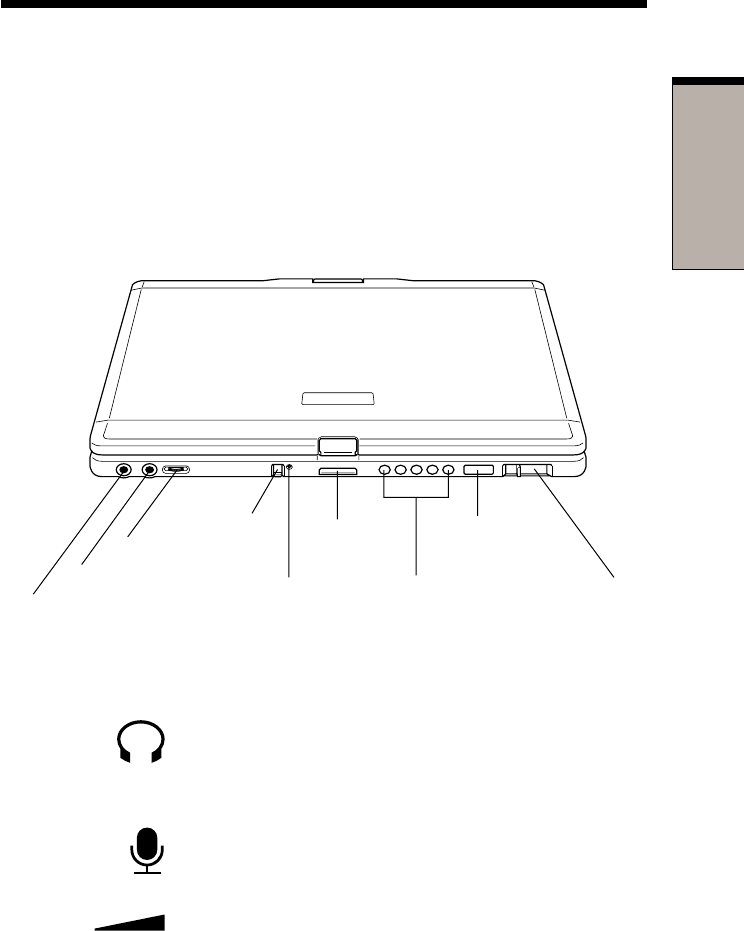
2-1
TT
TT
T
HEHE
HEHE
HE
G G
G G
G
RANDRAND
RANDRAND
RAND
T T
T T
T
OUROUR
OUROUR
OUR
Chapter 2
The Grand Tour
This chapter identifies the various components of your computer. Become familiar
with each component before you operate the computer.
Front with the display closed
Figure 2-1 shows the computer’s front with its display panel in the closed position.
Volume control Use this dial to adjust the volume of the speaker.
Headphone jack A standard 3.5 mm mini headphone jack enables connec-
tion of a stereo headphones (16 ohm minimum) or other
device for audio output. When you connect headphones,
the internal speaker is automatically disabled.
Microphone jack A standard 3.5 mm (in dia.) mini microphone jack enables
connection of a monaural microphone or other device for
audio input.
Figure 2-1 Front of the computer with the display closed
H
EAD PHONE JACK
M
ICROPHONE JACK
V
OLUME CONTROL
B
ATTERY LOCK
B
ATTERY LOCK
INDICATOR
D
ISPLAY LATCH
P
OWER SOURCE/
S
YSTEM INDICATORS
I
NFRARED PORT
B
ATTER
Y
RELEASE LEVER
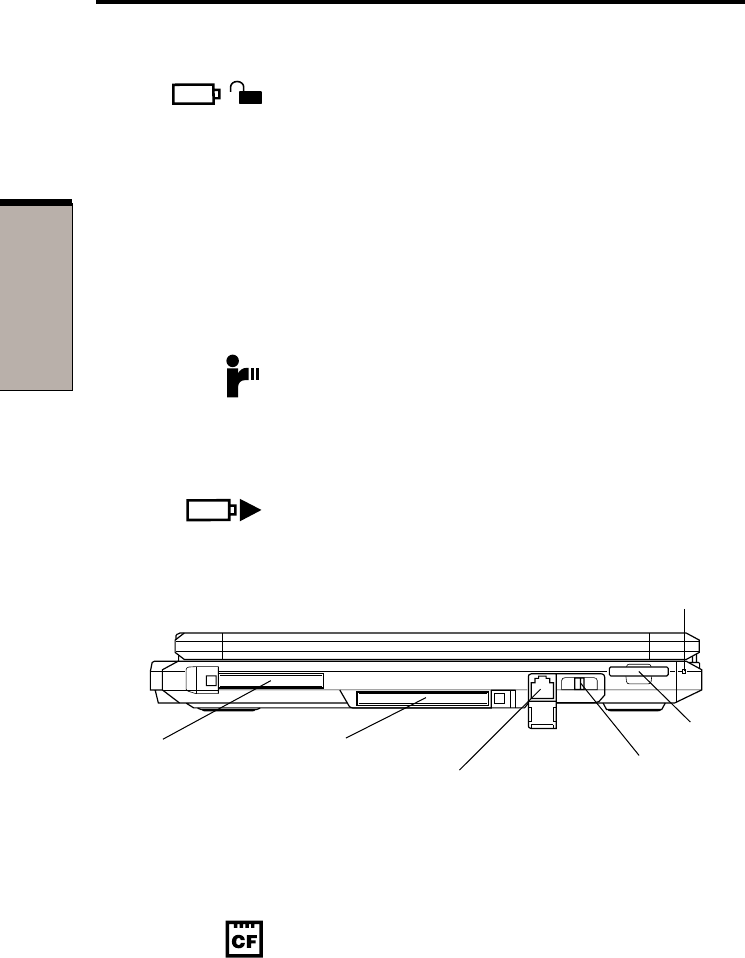
User's Manual
2-2
TT
TT
THEHE
HEHE
HE G G
G G
GRANDRAND
RANDRAND
RAND T T
T T
TOUROUR
OUROUR
OUR
Display latch This latch secures the LCD panel in its closed position.
Push the latch to open the display.
Power source/ LEDs let you monitor the status of various computer
system indicators functions. Details are given in the Indicators section.
Battery lock This indicator shows the status of the Battery lock by
indicator color: red for unlocked and green for locked status
respectively.
Battery lock The battery lock prevents inadvertent release of the Battery
Pack.
Infrared port This infrared port is compatible with Infrared Data Associa-
tion (IrDA 1.1) standards. It enables cableless 4 Mbps,
1.152 Mbps, 115.2 kbps, 57.6 kbps, 38.4 kbps, 19.2 kbps or
9.6 kbps data transfer with IrDA 1.1 compatible external
devices.
Battery release
lever Releasing the battery lock and sliding the Battery release
lever to the outside of the computer enables to remove
the battery from the computer.
Figure 2-2 The left side of the computer
Figure 2-2 shows the computer’s left side.
Left side
SD CARD INDICATOR
SD CARD SLOT
WIRELESS
COMMUNICATION
SWITCH
MODEM JACK
(WITH COVER OPENED)
PC CARD SLOT
COMPACT FLASH
MODULE SLOT
Compact Flash This slot accommodates Compact Flash module of various
module slot capacities. You cannot use Compact Flash module that
does not conform to CFA specifications.
You can also use Compact Flash I/O module other than
memory module.
CAUTION: Keep foreign objects out of the Compact Flash module slot. A
pin or similar object can damage the computer’s circuitry.
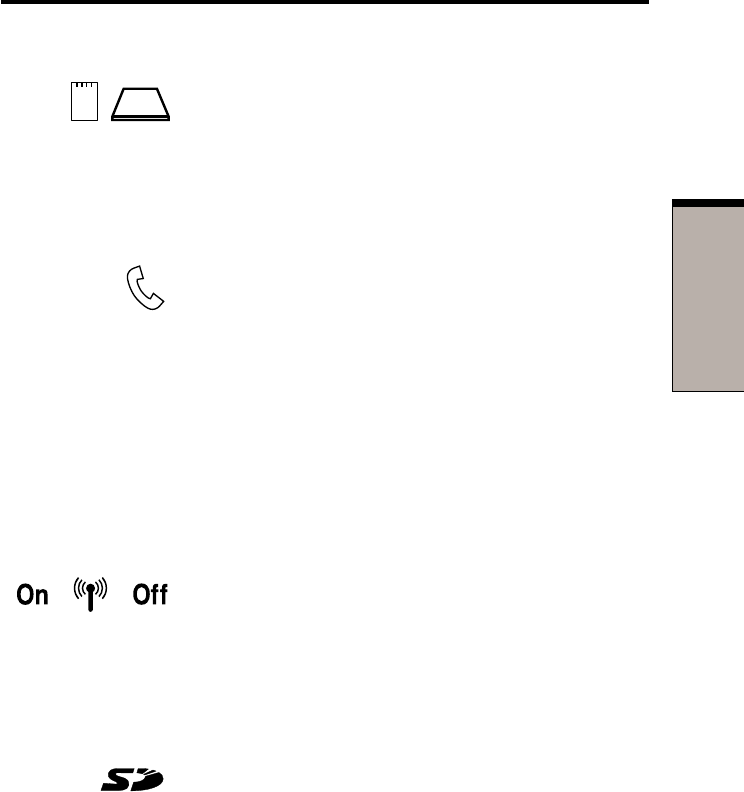
2-3
TT
TT
T
HEHE
HEHE
HE
G G
G G
G
RANDRAND
RANDRAND
RAND
T T
T T
T
OUROUR
OUROUR
OUR
Left side
SD card indicator This indicator glows green when the computer is
accessing the SD card slot.
Wireless Slide this switch to the right to turn on Bluetooth and
communication wireless LAN. Slide it to the left to turn off the functions.
switch
CAUTION: Set the switch to off in airplanes and hospitals. Check the
wireless communication indicator. It will stop glowing when the wireless
communication function is off.
PC card slot A PC card slot can accommodate one 5 mm PC card (Type
II). The slot supports 16-bit PC cards and CardBus PC
cards.
CAUTION: Keep foreign objects out of the PC card slot. A pin or similar
object can damage the computer’s circuitry.
Modem jack In areas where an internal modem is installed as standard
equipment, there is a modem jack that lets you use a
modular cable to connect the modem directly to a tele-
phone line. The modem is not supported in some marketing
regions.
CAUTIONS: 1. In case of a lightning storm, unplug the modem cable
from the telephone jack.
2. Do not connect the modem to a digital telephone line.
A digital line will damage the modem.
SD card slot This slot lets you transfer data from the device to your
computer.
CAUTION: Keep foreign objects out of the SD card slot. A pin or similar
object can damage the computer’s circuitry.
CB
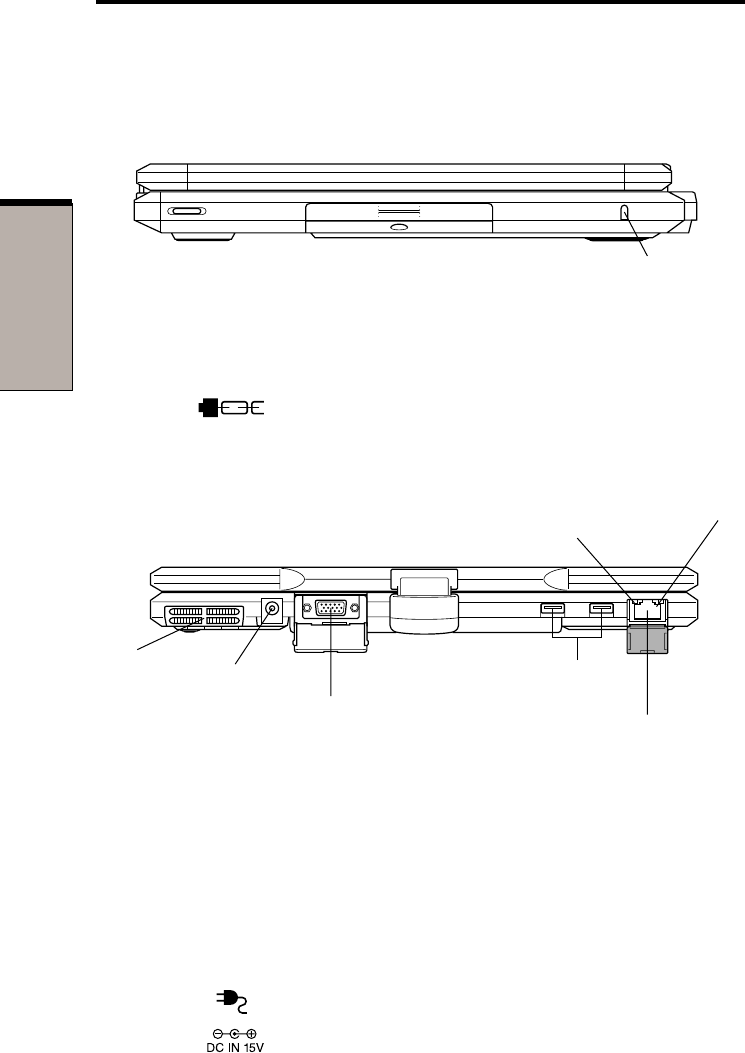
User's Manual
2-4
TT
TT
THEHE
HEHE
HE G G
G G
GRANDRAND
RANDRAND
RAND T T
T T
TOUROUR
OUROUR
OUR
Right side
Figure 2-3 shows the computer’s right side.
Figure 2-3 The right side of the computer
Security lock A security cable is attached to this slot. The optional
slot security cable anchors your computer to a desk or other
large object to deter theft.
Fan vent Provides air flow for the fan.
CAUTION: Be careful not to block the fan vent. Also be careful to keep
foreign objects out of the vent. A pin or similar object can damage the
computer’s circuitry.
DC IN 15V The AC adaptor is connected to this socket. Use only the
model of AC adaptor that comes with the computer. Using
the wrong adaptor can damage your computer.
Figure 2-4 The computer’s back side
Back side
Figure 2-4 shows the computer’s back side.
SECURITY LOCK SLOT
LAN
ACTIVE INDICATOR
(YELLOW)
LINK
INDICATOR
(GREEN)
USB
PORTS
LAN
JACK (WITH COVER OPEN)
E
XTERNAL MONITOR PORT
(WITH COVER OPEN)
DC IN 15v
F
AN VENT
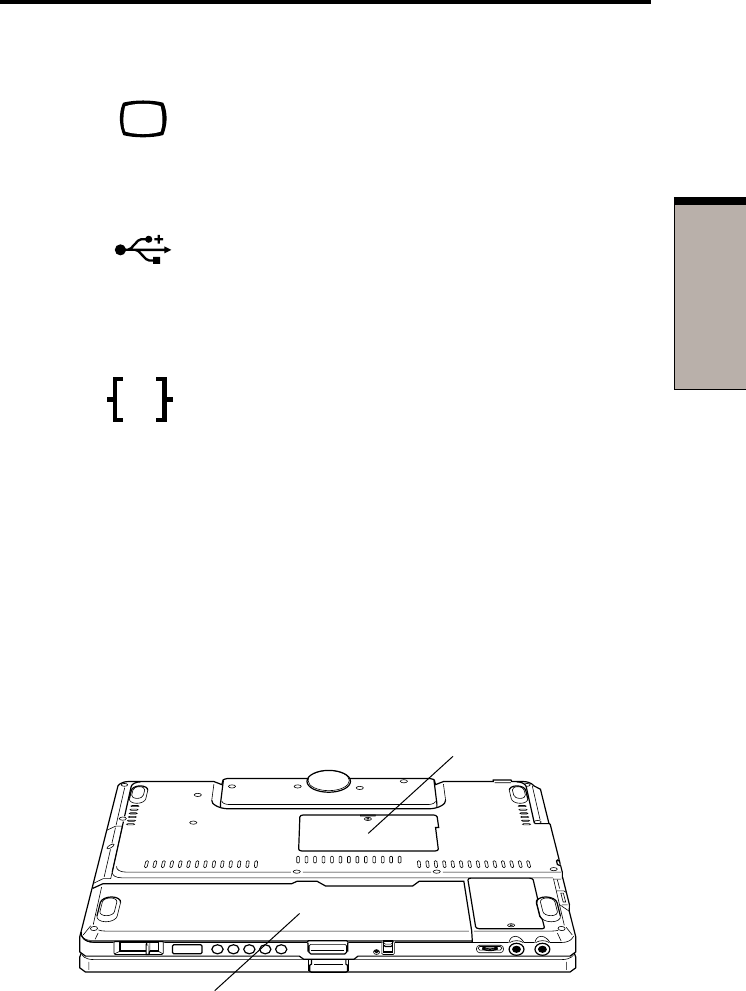
2-5
TT
TT
T
HEHE
HEHE
HE
G G
G G
G
RANDRAND
RANDRAND
RAND
T T
T T
T
OUROUR
OUROUR
OUR
Underside
Underside
Figure 2-5 shows the underside of the computer. Make sure the display is closed
before turning over your computer.
Figure 2-5 The underside of the computer
Link indicataor This indicator glows in green when the computer is
(green) connect-ed to a LAN and the LAN is functioning properly.
Ether
LAN jack This jack lets you connect to a LAN. The adaptor has
built-in support for Ethernet LAN (10 megabits per second,
10BASE-T) and Fast Ethernet LAN (100 megabits per
second, 100BASE-Tx).
External monitor This 15-pin port lets you connect an external monitor.
port
Universal Two Universal Serial Bus ports are on the back side. The
Serial Bus ports comply with the USB 2.0 standard, which enables
(USB 2.0) port data transfer speeds 40 times faster than the USB 1.1
standard. (The ports also support USB 1.1.)
CAUTION: Keep foreign objects out of the USB connectors. A pin or
similar object can damage the computer's circuitry.
LAN active This indicator glows in yellow when data is being ex
indicator (yellow) changed between the computer and the LAN.
M
EMORY MODULE COVER
B
ATTERY PACK
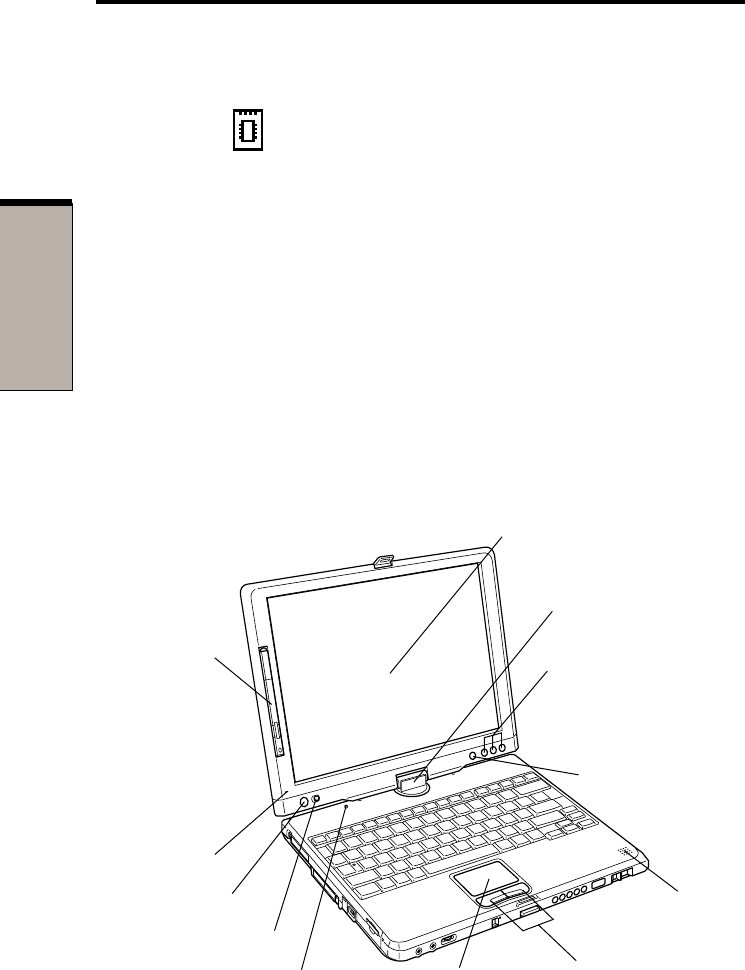
User's Manual
2-6
TT
TT
THEHE
HEHE
HE G G
G G
GRANDRAND
RANDRAND
RAND T T
T T
TOUROUR
OUROUR
OUR
Figure 2-6 The front with the display open
D
ISPLAY SCREEN
D
ISPLAY HINGE
S
PEAKER
T
OUCH PAD
S
ENSOR SWITCH
P
OWER BUTTON
M
ICROPHONE
P
EN (STYLUS)
A
RROW BUTTON (1)
E
NTER /
M
ENU BUTTON
A
RROW BUTTON (2)
(from left to right)
T
OUCH PAD
CONTROL BUTTONS
P
OWER BUTTON LOCK
W
INDOWS SECURITY
BUTTON
Expansion The computer is equipped with two expantion memory
memory socket slots (sockets). Use these slots (sockets) to install memory
module to increase your computer’s memory. Refer to the
Memory expansion section in Chapter 8, Optional Devices
for the detail.
Battery Pack The Battery Pack powers the computer when the AC
adaptor is not connected. The Batteries section in Chapter
6, Power and Power-Up Modes, describes how to access
the Battery Pack. Battery Packs can be purchased from
your TOSHIBA dealer to extend the computer’s battery
operating time.
Front with the display open
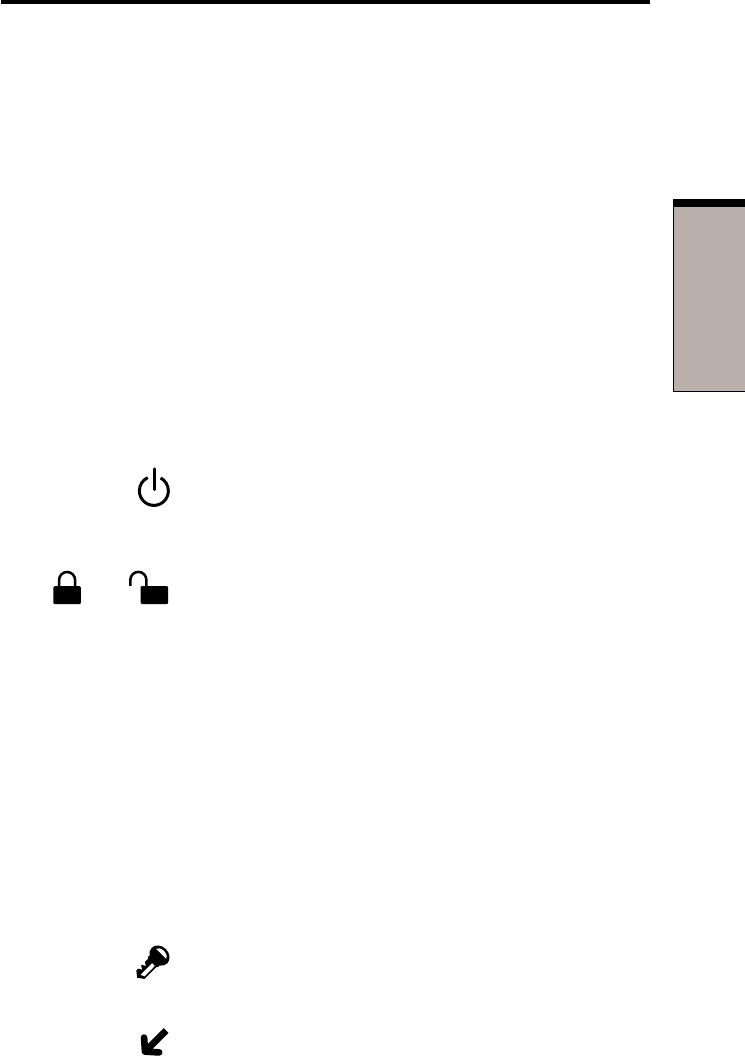
2-7
TT
TT
T
HEHE
HEHE
HE
G G
G G
G
RANDRAND
RANDRAND
RAND
T T
T T
T
OUROUR
OUROUR
OUR
Front with the display open
Display screen The full-color LCD displays high-contrast text and
graphics and is compatible with the industry standard
Video Graphics Array (VGA). The LCD consists of up to
1024 × 768 pixels or dots. The computer has a Thin-Film
Transistor (TFT) display. Refer to Appendix B.
When the computer operates on power through the AC
adaptor, the display screen’s image will be somewhat
brighter than when it operates on battery power. The lower
brightness level is intended to save battery power.
Display hinge The display hinge holds the display screen at easy-to-view
angles.
Touch pad A Touch pad located in the center of the palm rest is used
to control the on-screen pointer. Refer to the Using the
Touch pad section in Chapter 4, Operating Basics.
Touch pad Control buttons close to he Touch pad let you select menu
control buttons items or manipulate text and graphics designated by the
on-screen pointer.
Sensor switch This switch shuts down the computer when you close the
cover in PC mode and the panel power on/off feature is
enabled. This switch does not shut down the computer
when operating in Tablet PC mode.
Power button Press the power button to turn the computer’s power on
and off.
Pen (Stylus) Pen is contained on the left hand side of display.
A pen enables data entry directly through display screen.
Refer to the Using the pen section Chapter 4, Operating
Basic.
Power button Set this lock to the locked position to prevent inadvertent
lock power on or off.
Windows Security This button functions as the same to Ctrl + Alt + Del
button keys to show Windows Task Manager.
Arrow button (1) This button functions as the same to ↑ key.
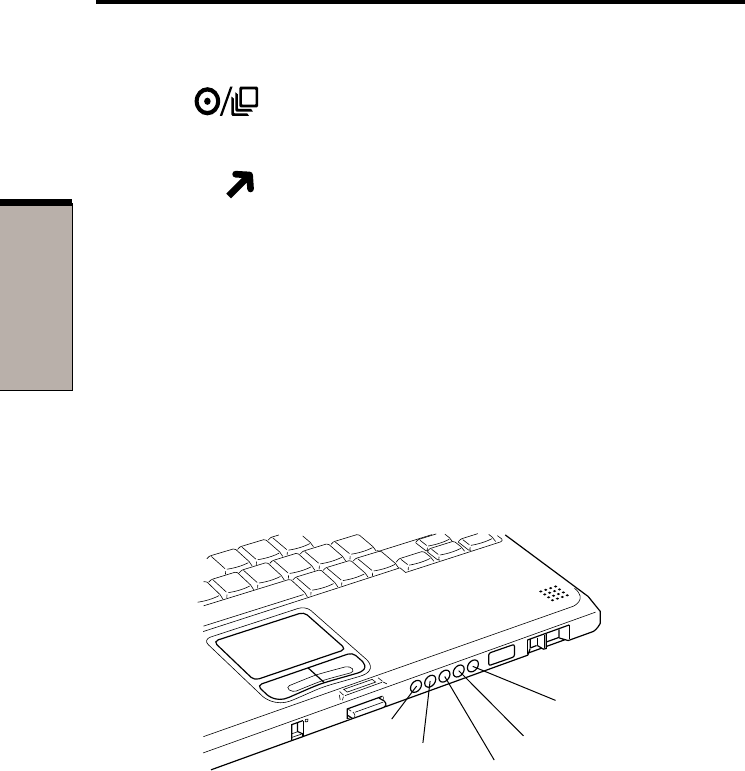
User's Manual
2-8
TT
TT
THEHE
HEHE
HE G G
G G
GRANDRAND
RANDRAND
RAND T T
T T
TOUROUR
OUROUR
OUR
Indicators
Figure 2-7 shows the indicators, which light when various computer operations are in
progress.
Figure 2-7 The power source/system indicators
Speaker The speaker emits sound generated by your software as
well as audio alarms, such as low battery condition,
generated by the system.
DC IN
P
OWER
B
ATTERY
D
ICK
W
IRELESS
COMMUNICATION
Enter/Menu button This button functions as the same to Enter key when
tapped, or shows the menu screen when pressed for
more than a second.
Arrow button (2) This button functions as the same to ↓ key.
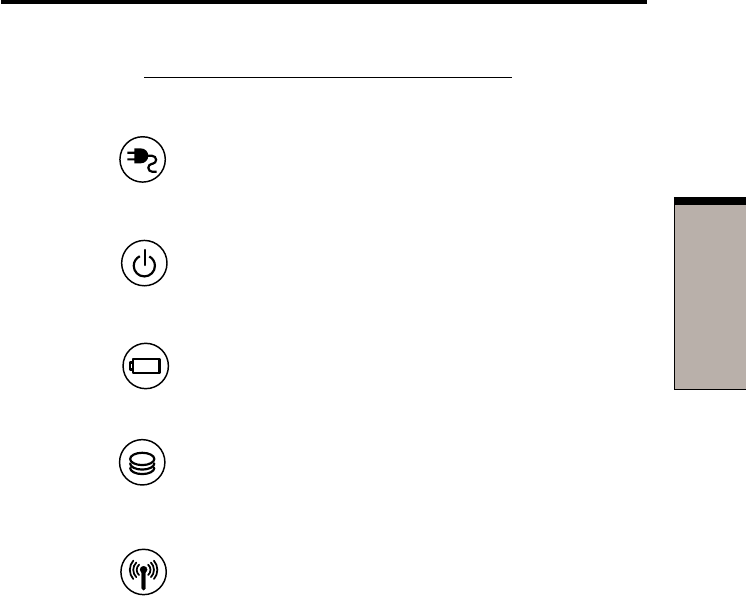
2-9
TT
TT
T
HEHE
HEHE
HE
G G
G G
G
RANDRAND
RANDRAND
RAND
T T
T T
T
OUROUR
OUROUR
OUR
Indicators
Power source/system indicators
The figures below show the positions of the keypad overlay indicators and the
CapsLock indicator.
When the F10 key indicator glows, the keypad overlay lets you control the cursor.
When the F11 key indicator glows, the keypad overlay lets you enter numbers.
DC IN The DC IN indicator glows green when DC power is
supplied from the AC power adaptor. If the adaptor’s
output voltage is abnormal or if the power supply malfunc-
tions, this indicator flashes in orange.
Power The Power indicator glows green when the computer is
on. If you turn off the computer in Resume mode, this
indicator blinks orange (one second on, two seconds off)
while the computer shuts down.
Battery The Battery indicator shows the condition of the charge.
Green means fully charged and orange means being
charged. Refer to Chapter 6, Power and Power-Up Modes.
Disk The Disk indicator glows in green when the computer is
accessing a disk drive.
Wireless The Wireless communication indicator lights when
communication the Bluetooth and Wireless LAN functions are turned on.
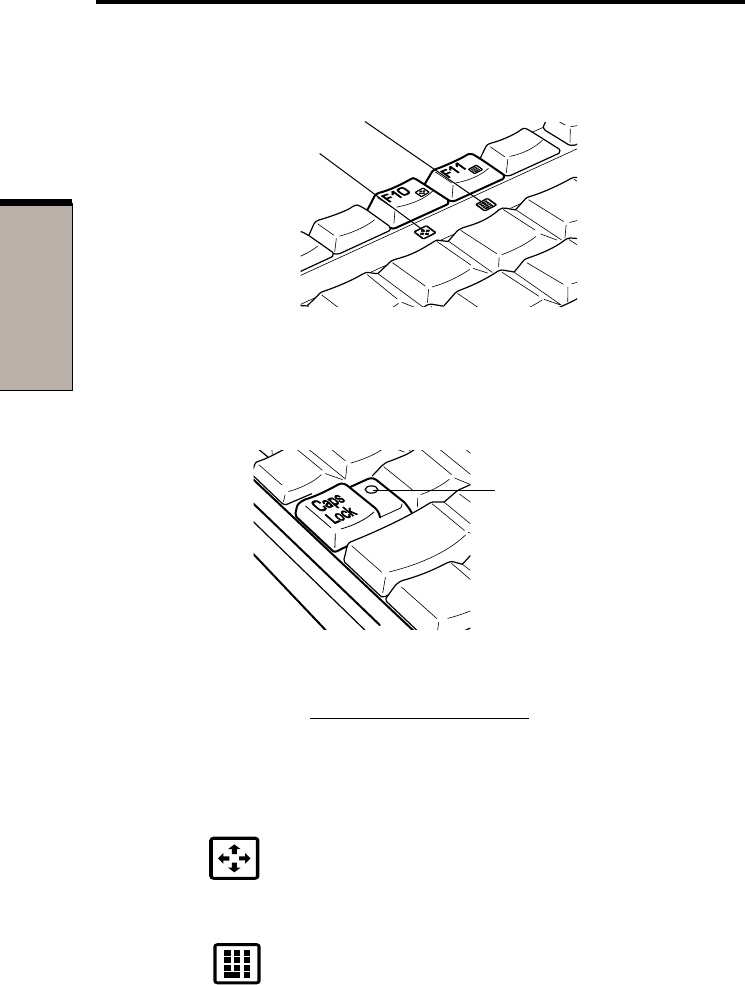
User's Manual
2-10
TT
TT
THEHE
HEHE
HE G G
G G
GRANDRAND
RANDRAND
RAND T T
T T
TOUROUR
OUROUR
OUR
NUMERIC MODE
ARROW MODE
Figure 2-8 Keypad overlay indicators
When the CapsLock indicator glows, the keyboard is in all-caps mode.
C
APS LOCK
Figure 2-9 CapsLock indicator
Keyboard indicator
Caps Lock This indicator glows green when the alphabet keys are
locked in uppercase.
Arrow mode When the Arrow mode indicator lights green, you can
use the keypad overlay (white labeled keys) as cursor
keys. Refer to the Keypad overlay section in Chapter 5,
The Keyboard.
Numeric mode You can use the keypad overlay (white labeled keys) for
numeric input when the Numeric mode indicator lights
green. Refer to the Keypad overlay section in Chapter 5,
The Keyboard.
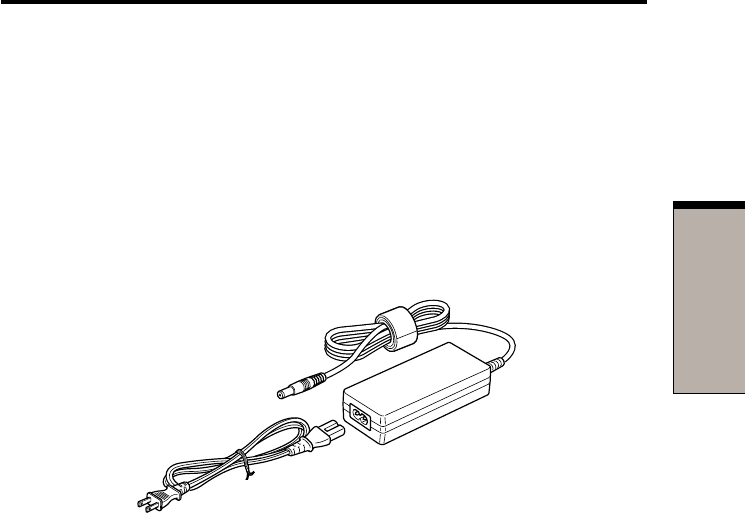
2-11
TT
TT
T
HEHE
HEHE
HE
G G
G G
G
RANDRAND
RANDRAND
RAND
T T
T T
T
OUROUR
OUROUR
OUR
AC adaptor
The AC adaptor converts AC power to DC power and reduces the voltage supplied
to the computer. It can automatically adjust to any voltage from 100 to 240 volts and
to a frequency of either 50 or 60 hertz, enabling you to use the computer in almost
any region.
To recharge the battery, simply connect the AC adaptor to a power source and the
computer. See Chapter 6 Power and Power-Up Modes for details.
Figure 2-10 The AC adaptor
CAUTION: Use only the AC adaptor that came with the computer or an
equivalent optional adaptor. Use of the wrong adaptor could damage
your computer. TOSHIBA assumes no liability for any damage in such
case.
AC adaptor

User's Manual
2-12
TT
TT
THEHE
HEHE
HE G G
G G
GRANDRAND
RANDRAND
RAND T T
T T
TOUROUR
OUROUR
OUR

GG
GG
G
ETTINGETTING
ETTINGETTING
ETTING
S S
S S
S
TARTEDTARTED
TARTEDTARTED
TARTED
Chapter 3
Getting Started
Setting up your work space ............................................................... 3-2
General conditions .............................................................................. 3-2
Placement of computer ....................................................................... 3-2
Seating and posture ............................................................................ 3-3
Lighting ............................................................................................... 3-4
Work habits ........................................................................................ 3-4
Opening the computer in Tablet PC mode ...................................... 3-5
Connecting the AC adaptor ............................................................... 3-6
Opening the display ........................................................................... 3-8
Turning on the power ........................................................................ 3-9
Starting up for the first time............................................................. 3-10
Turning off the power ...................................................................... 3-10
Shut Down mode (Boot mode) .......................................................... 3-10
Hibernation mode .............................................................................. 3-11
Standby mode .................................................................................. 3-13
Restarting the computer .................................................................. 3-14
Restoring the preinstalled software
from the Product Recovery CD-ROM ........................................ 3-15

GG
GG
GETTINGETTING
ETTINGETTING
ETTING S S
S S
STARTEDTARTED
TARTEDTARTED
TARTED

GG
GG
G
ETTINGETTING
ETTINGETTING
ETTING
S S
S S
S
TARTEDTARTED
TARTEDTARTED
TARTED
3-1
Chapter 3
Getting Started
This chapter provides basic information to get you started using your computer. It
covers the following topics:
❑Setting up your work space — for your health and safety
NOTE: Be sure also to read Instruction Manual for Safety & Comfort. This
guide, which is included with the computer, explains product liability.
❑Connecting the AC adaptor
❑Opening the display
❑Turning on the power
❑Starting up for the first time
❑Turning off the power
❑Restarting the computer
❑Restoring the preinstalled software from the product recovery CD-ROM
NOTE: All users should be sure to carefully read the sections turning on
the power.

3-2
User’s Manual
GG
GG
GETTINGETTING
ETTINGETTING
ETTING S S
S S
STARTEDTARTED
TARTEDTARTED
TARTED
Setting up your work space
Establishing a comfortable work site is important for you and your computer. A
poor work environment or stressful work habits can result in discomfort or serious
injury from repetitive strain to your hands, wrists or other joints. Proper ambient
conditions should also be maintained for the computer’s operation. This section
discusses the following topics:
❑General conditions
❑Placement of the computer and peripheral devices
❑Seating and posture
❑Lighting
❑Work habits
General conditions
In general, if you are comfortable, so is your computer, but read the following to
make sure your work site provides a proper environment.
❑Make sure there is adequate space around the computer for proper ventilation.
❑Make sure the AC power cord connects to an outlet that is close to the
computer and easily accessible.
❑The temperature should be 5 to 35 degrees Centigrade (41 to 95 degrees
Fahrenheit) and the relative humidity should be 20 to 80 percent.
❑Avoid areas where rapid or extreme changes in temperature or humidity may
occur.
❑Keep the computer free of dust, moisture, and exposure to direct sunlight.
❑Keep the computer away from heat sources, such as electric heaters.
❑Do not use the computer near liquids or corrosive chemicals.
❑Do not place the computer near objects that create strong magnetic fields (e.g.,
stereo speakers).
❑Do not operate the computer in close proximity to a mobile phone.
Placement of computer
Position the computer and peripheral devices to provide comfort and safety.
❑Set the computer on a flat surface at a comfortable height and distance. The
display should be no higher than eye level to avoid eye strain.
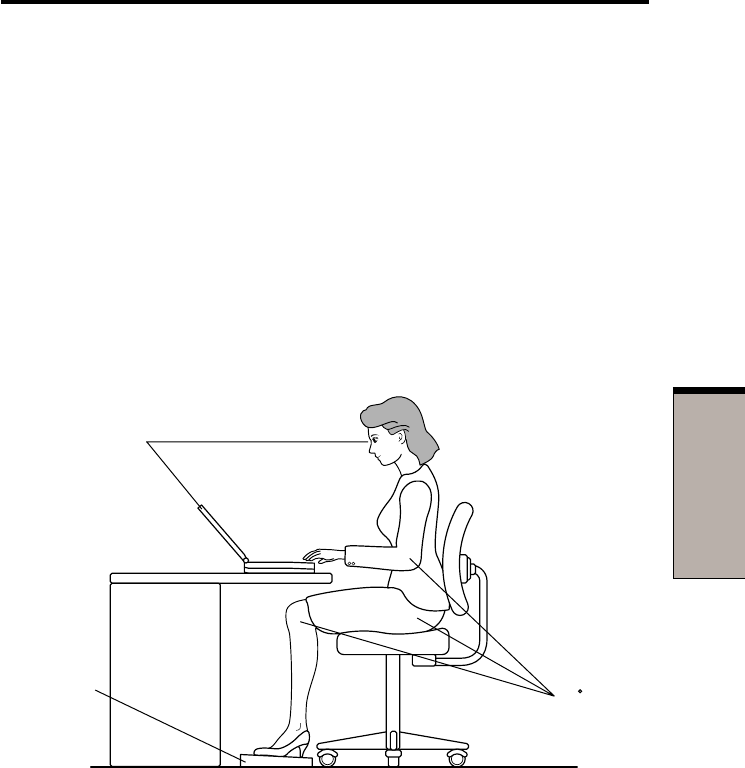
GG
GG
G
ETTINGETTING
ETTINGETTING
ETTING
S S
S S
S
TARTEDTARTED
TARTEDTARTED
TARTED
3-3
Setting up your work space
❑Place the computer so that it is directly in front of you when you work and
make sure you have adequate space to easily operate other devices.
❑Allow adequate space behind the computer to let you freely adjust the display.
The display should be angled to reduce glare and maximize visibility.
❑If you use a paper holder, set it at about the same height and distance as the
computer.
Seating and posture
The height of your chair in relation to the computer and keyboard as well as the
support it gives your body are primary factors in reducing work strain. Refer to the
following tips and to figure 3-1.
F
OOT REST
B
ELOW EYE LEVEL
90
ANGLES
Figure 3-1 Posture and positioning of the computer
❑Place your chair so that the keyboard is at or slightly below the level of your
elbow. You should be able to type comfortably with your shoulders relaxed.
❑Your knees should be slightly higher than your hips. If necessary, use a foot
rest to raise the level of your knees to ease pressure on the back of your thighs.
❑Adjust the back of your chair so it supports the lower curve of your spine.
❑Sit straight so that your knees, hips and elbows form approximately 90 degree
angles when you work. Do not slump forward or lean back too far.

3-4
User’s Manual
GG
GG
GETTINGETTING
ETTINGETTING
ETTING S S
S S
STARTEDTARTED
TARTEDTARTED
TARTED
Lighting
Proper lighting can improve legibility of the display and reduce eye strain.
❑Position the computer so that sunlight or bright indoor lighting does not reflect
off the screen. Use tinted windows, shades or other screen to eliminate sun
glare.
❑Avoid placing the computer in front of bright light that could shine directly in
your eyes.
❑If possible, use soft, indirect lighting in your computer work area. Use a lamp to
illuminate your documents or desk, but be sure to position the lamp so that it
does not reflect off the display or shine in your eyes.
Work habits
A key to avoiding discomfort or injury from repetitive strain is to vary your activi-
ties. If possible, schedule a variety of tasks into your work day. If you must spend
long periods at the computer, finding ways to break up the routine can reduce
stress and improve your efficiency.
❑Sit in a relaxed posture. Good positioning of your chair and equipment as
described earlier can reduce tension in your shoulders or neck and ease back
strain.
❑Vary your posture frequently.
❑Occasionally stand up and stretch or exercise briefly.
❑Exercise and stretch your wrists and hands a number of times during the day.
❑Frequently, look away from the computer and focus your eyes on a distant
object for several seconds, for example 30 seconds every 15 minutes.
❑Take frequent short breaks instead of one or two long breaks, for example, two
or three minutes every half hour.
❑Have your eyes examined regularly and visit a doctor promptly, if you suspect
you might be suffering from a repetitive strain injury.
A number of books are available on ergonomics and repetitive strain injury or
repetitive stress syndrome. For more information on these topics or for pointers on
exercises for such stress points as hands and wrists, please check with your library
or book vendor. Also refer to the computer’s Instruction Manual for Safety &
Comfort.
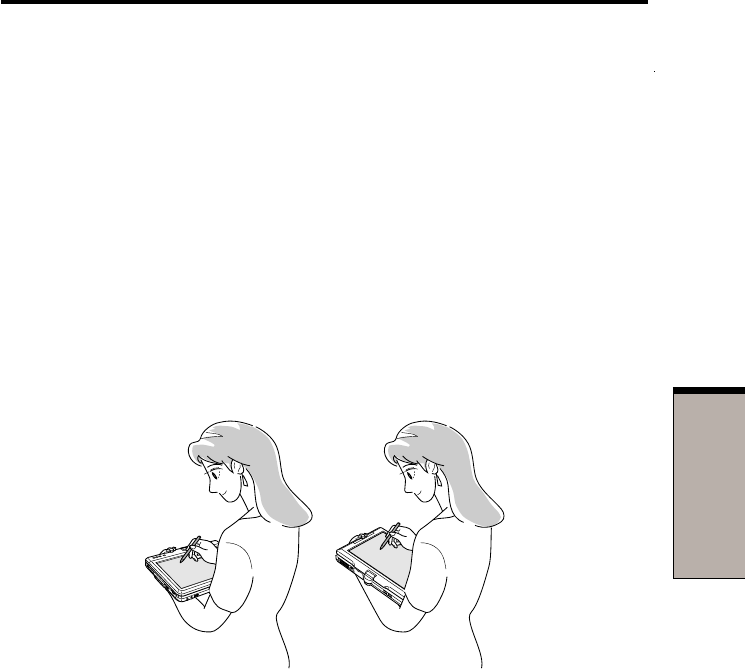
GG
GG
G
ETTINGETTING
ETTINGETTING
ETTING
S S
S S
S
TARTEDTARTED
TARTEDTARTED
TARTED
3-5
Operating the computer in Tablet PC
mode
NOTE: TOSHIBA 3500 computer can be used in two ways; ordinary
Notebook PC and Tablet PC. You can use the computer as Tablet PC
that is operated with attached Pen (Stylus) by turning LCD panel in 180
degrees and closing it. This manual calls the use as an ordinary Note-
book PC as PC mode, and the use as Table PC as Tablet PC mode. Refer
to Changing to the Tablet PC mode in Chapter 1 Operation Basic for the
changing of the mode
When operating the computer in Tablet PC mode, follow the instructions below.
Figure 3-2 Figure 3-3
❑Hold the computer firmly on your forearm. Do not block the vent.
❑Remove the connector of AC adapter from the computer when using the
computer in Tablet PC mode held in your forearm.
❑Do not use the computer while walking or driving a car.
❑Change to PC mode and turn off the computer before carrying. Do not carry the
computer with power on or in stand by state. Do not carry the computer while
DISK LED is glowing.
❑Do not expose the computer with rapid temperature change (such as the case
to bring the PC from cold outside into warm room).
When rapid temperature change is unavoidable, turn on the computer after a
couple of hours. Avoid dew condensation.
Operating the computer in Tablet PC mode

3-6
User’s Manual
GG
GG
GETTINGETTING
ETTINGETTING
ETTING S S
S S
STARTEDTARTED
TARTEDTARTED
TARTED
❑Remove all external peripheral devices and their connection cables from the
computer before carrying. Remove all I/O devices such as PC Card, SD Card
and Compact Flash that are connected (or inserted) to the computer.
❑Do not drop the computer nor apply excessive impact on the computer. Do not
leave the computer in an automobile where the computer is exposed to direct
sunbeam.
❑Do not put the computer in Tablet PC mode in a bag.
❑Do not playback a DVD Video with an external DVD player connected to the
computer.
❑Use a screen saver other than 3D type.
❑Do not play 3D game software.
CAUTION: Do not block the vent of the computer when holding it in
your forearm to use in Tablet PC mode. It causes burn due to the hot air
released from the vent.
Connecting the AC adaptor
Attach the AC adaptor when you need to charge the battery or you want to operate
from AC power. It is also the fastest way to get started, because the Battery Pack
will need to be charged before you can operate from battery power.
The AC adaptor can be connected to any power source supplying from 100 to 240
volts and 50 or 60 hertz. For details on using the AC adaptor to charge the Battery
Pack, refer to Chapter 6, Power and Power-Up Modes.
CAUTION: Use only the AC adaptor that came with the computer or an
equivalent optional adaptor. Use of the wrong adaptor could damage
your computer. TOSHIBA assumes no liability for any damage in such
case.
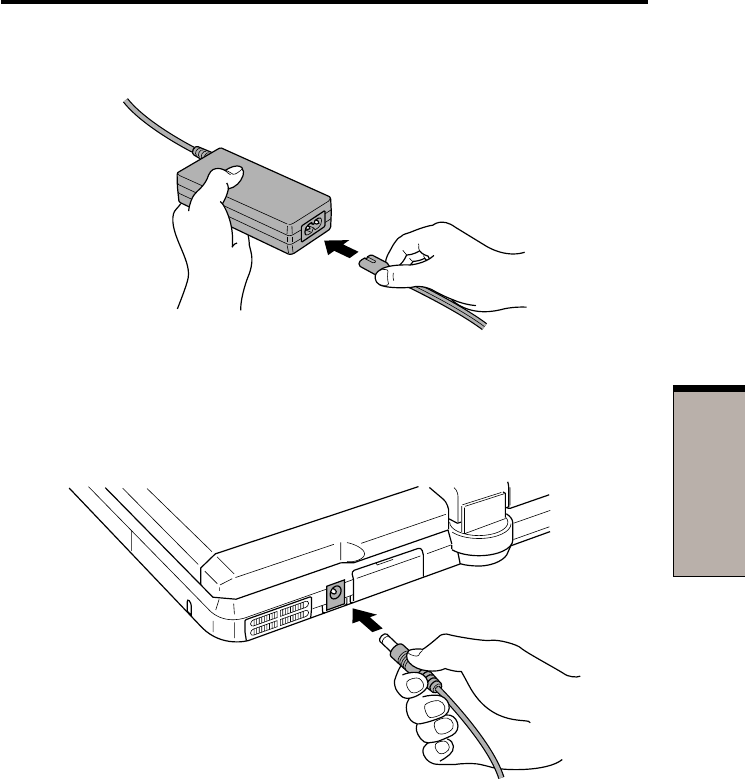
GG
GG
G
ETTINGETTING
ETTINGETTING
ETTING
S S
S S
S
TARTEDTARTED
TARTEDTARTED
TARTED
3-7
Connecting the AC adaptor
1. Connect the power cord to the AC adaptor.
Figure 3-4 Connecting the power cord to the AC adaptor
2. Connect the AC adaptor’s DC output plug to the DC IN port on the back of
the computer.
Figure 3-5 Connecting the adaptor to the computer
3. Plug the power cord into a live wall outlet. The Battery and DC IN indicator
on the front of the computer should glow.
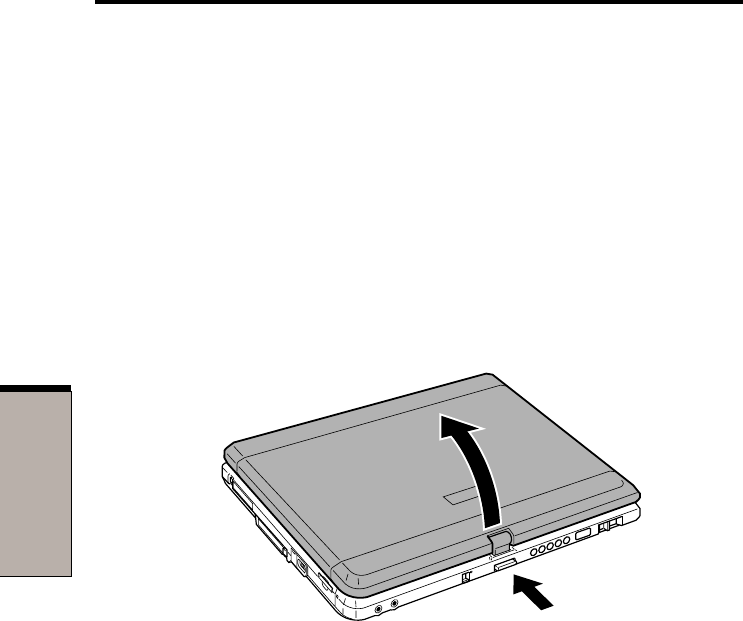
3-8
User’s Manual
GG
GG
GETTINGETTING
ETTINGETTING
ETTING S S
S S
STARTEDTARTED
TARTEDTARTED
TARTED
Opening the display
The display panel can be rotated in a wide range of angles for optimal viewing.
1. Push down the display latch on the front of the computer to unlatch the
display panel.
2. Lift the panel up and adjust it to the best viewing angle for you.
Caution: User reasonable care when opening and closing the display
panel. Opening it vigorously or slamming it shut could damage the
computer.
Figure 3-6 Opening the display panel
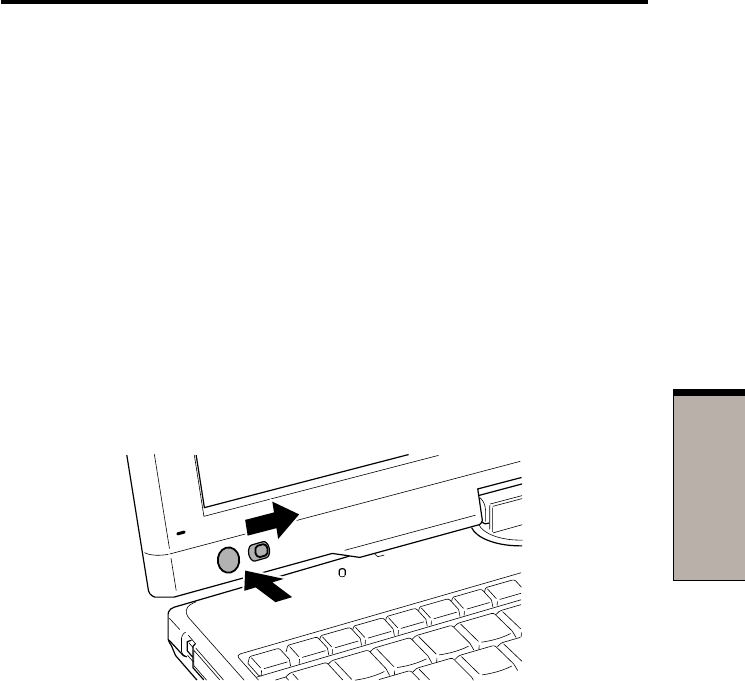
GG
GG
G
ETTINGETTING
ETTINGETTING
ETTING
S S
S S
S
TARTEDTARTED
TARTEDTARTED
TARTED
3-9
Turning on the power
Turning on the power
This section describes how to turn on the power.
NOTE: After you turn on the power for the first time, do not turn it off
until you have set up the operating system. Refer to the section Starting
up for the first time in this chapter.
1. If the external diskette drive is connected, make sure it is empty. If a diskette is
in the drive, press the eject button and remove the diskette.
2. Open the display panel.
3. Slide the power button lock toward the right of the computer to unlock the
button, then press and hold the button for two or three seconds.
Figure 3-7 Turning on the power

3-10
User’s Manual
GG
GG
GETTINGETTING
ETTINGETTING
ETTING S S
S S
STARTEDTARTED
TARTEDTARTED
TARTED
Starting up for the first time
When you first turn on the power, the computer's initial screen is the Microsoft
Windows XP Tablet PC edition Startup Screen Logo. Follow the on-screen
directions for each screen. During setup, you can click the Back button to return to
the previous screen.
Be sure to read the Windows End User License Agreement display
carefully.
NOTE: You cannot use the Pen when Windows is in Setup. Use keyboard
or touch pad while Windows is setting up.
Turning off the power
The power can be turned off in one of the following modes: Shut down (Boot),
Hibernation or Standby mode.
Shut Down mode (Boot mode)
When you turn off the power in Shut Down mode, no data is saved and the
computer will boot to the operating system’s main screen.
1. If you have entered data, save it to the hard disk or to a diskette.
2. Make sure all disk activity has stopped, then remove any CD/DVD-ROMs or
diskette.
CAUTION: Make sure the Disk indicator is off. If you turn off the power
while a disk is being accessed, you can lose data or damage the disk.
3. Click start and click Turn off computer. From the Turn off com-
puter window, click Turn off .
4. Turn off the power to any peripheral devices.
CAUTION: Do not turn the computer or devices back on immediately.
Wait a moment to let all capacitors fully discharge.

GG
GG
G
ETTINGETTING
ETTINGETTING
ETTING
S S
S S
S
TARTEDTARTED
TARTEDTARTED
TARTED
3-11
Hibernation mode
The hibernation feature saves the contents of memory to the hard disk when the
computer is turned off. The next time the computer is turned on, the previous state
is restored. The hibernation feature does not save the status of peripheral devices.
CAUTIONS: 1. Save your data. While entering hibernation mode, the
computer saves the contents of memory to the HDD.
However, for safety sake, it is best to save your data
manually.
2. Data will be lost if you remove the battery or discon-
nect the AC adaptor before the save is completed. Wait
for the Disk indicator to go out.
3. Do not install or remove a memory module while the
computer is in hibernation mode. Data will be lost.
Benefits of hibernation
The hibernation feature provides the following benefits:
❑Saves data to the hard disk when the computer automatically shuts down
because of a low battery.
NOTE: For the computer to shut down in hibernation mode, the hiberna-
tion feature must be enabled in two places in TOSHIBA Power Saver: the
Hibernate window and the Battery Alarm item of the Alarm window.
Otherwise, the computer will shut down in Standby mode. If battery power
becomes depleted, data saved in Standby mode will be lost.
❑You can return to your previous working environment immediately when you
turn on the computer.
❑Saves power by shutting down the system when the computer receives no
input or hardware access for the duration set by the system hibernate feature.
❑You can use the panel power off feature.
Turning off the power

3-12
User’s Manual
GG
GG
GETTINGETTING
ETTINGETTING
ETTING S S
S S
STARTEDTARTED
TARTEDTARTED
TARTED
Starting Hibernation
NOTE: You can also enable Hibernation by pressing Fn + F4. See Chapter
5, Keyboard, for details.
To enter Hibernation mode, follow the steps below.
1. Click Start and click Turn Off Computer.
2. In Turn Off Computer, click Hibernate. The Standby icon will be
displayed initially. To display the Hibernate icon press the Shift key.
The computer will also enter Hibernate mode automatically when you:
❑Press the power button.
❑Close the lid (the Display).
First, however, make the appropriate settings according to the steps below.
1. Open the Windows Control Panel.
2. Open Performance and Maintenance.
3. Open TOSHIBA Power Saver.
4. Select the Hibernate window, select the Enable Hibernate support check
box and click the Apply button.
5. Select the Power Save Modes window.
6. Double-click Power Save Modes and open the System Power Mode
window.
7. Enable the desired Hibernation settings for When I press the power
button and When I close the lid.
8. Click the OK button.
Data save in hibernation mode
When you turn off the power in hibernation mode, the computer takes a moment to
save current memory data to the hard disk. During this time, the Disk indicator will
light.
After you turn off the computer and memory data is saved to the hard disk, turn off
the power to any peripheral devices.
CAUTION: Do not turn the computer or devices back on immediately.
Wait a moment to let all capacitors fully discharge.

GG
GG
G
ETTINGETTING
ETTINGETTING
ETTING
S S
S S
S
TARTEDTARTED
TARTEDTARTED
TARTED
3-13
Turning off the power
Standby mode
In standby mode, the power remains on, but the CPU and all other devices are in
sleep mode.
Standby precautions
❑Before entering Standby mode, be sure to save your data.
❑Do not install or remove a memory module while the computer is in standby
mode. The computer or the module could be damaged.
❑If you carry the computer on board an aircraft or into a hospital, be sure to shut
down the computer in hibernation mode or in shutdown mode to avoid radio
signal interference.
Benefits of standby
The standby feature provides the following benefits:
❑Restores the previous working environment more rapidly than does hiberna-
tion.
❑Saves power by shutting down the system when the computer receives no
input or hardware access for the duration set by the System Standby feature.
❑You can use the panel power off feature.
Executing standby
NOTE: You can also enable Standby by pressing Fn + F3. See Chapter 5,
Keyboard, for details.
You can enter standby mode in one of three ways:
1. Click Start, click Turn Off Computer and click Stand by.
2. Close the display panel. This feature must be enabled. To enable it, select the
TOSHIBA Power Saver icon in the Control Panel and open the System
Power Mode item.
3. Press the power button. This feature must be enabled. To enable it, select the
TOSHIBA Power Saver icon in the Control Panel and open the System
Power Mode item.
When you turn the power back on, you can continue from where you left when you
shut down the computer.

3-14
User’s Manual
GG
GG
GETTINGETTING
ETTINGETTING
ETTING S S
S S
STARTEDTARTED
TARTEDTARTED
TARTED
NOTES: 1. When the computer is shut down in standby mode, the
power indicator flashes in orange.
2. If you are operating the computer on battery power, you
can lengthen the operating time by shutting down in
hibernation mode. Standby mode consumes more power.
Standby limitations
Standby will not function under the following conditions:
❑Power is turned back on immediately after shutting down.
❑Memory circuits are exposed to static electricity or electrical noise.
Restarting the computer
Certain conditions require that you reset the system. For example, if:
❑You change certain computer settings.
❑An error occurs and the computer does not respond to your keyboard
commands.
There are three ways to restart the computer system:
1. Press Ctrl + Alt + Del to display the Windows Task Manager, then
select Shutdown and Restart.
2. Select Restart from the Turn Off Computer window in the start menu.
3. Press the power button and hold it down for five seconds. Wait 10 to 15
seconds, then turn the power on again by pressing the power button.

GG
GG
G
ETTINGETTING
ETTINGETTING
ETTING
S S
S S
S
TARTEDTARTED
TARTEDTARTED
TARTED
3-15
Restoring the preinstalled software
from the Product Recovery CD-ROM
If preinstalled files are damaged, use the Product Recovery CD-ROM to restore
them. To restore the operating system and all preinstalled software, follow the steps
below.
CAUTION: When you reinstall the Windows operating system, the hard
disk will be reformatted and all data will be lost.
1. Load the Product Recovery CD-ROM in the external optional optical disk drive
and turn off the computer’s power.
2. Hold down the F12 key and turn on the power. When In Touch with
Tomorrow TOSHIBA appears, release the F12 key.
3. Use the left or right coursor key to select the CD-ROM icon in the display
menu. For details, refer to the Boot priority section in Chapter 7, HW Setup.
4. Follow the on-screen instructions.
Restoring the preinstalled software from the Product
Recovery CD-ROM

3-16
User’s Manual
GG
GG
GETTINGETTING
ETTINGETTING
ETTING S S
S S
STARTEDTARTED
TARTEDTARTED
TARTED
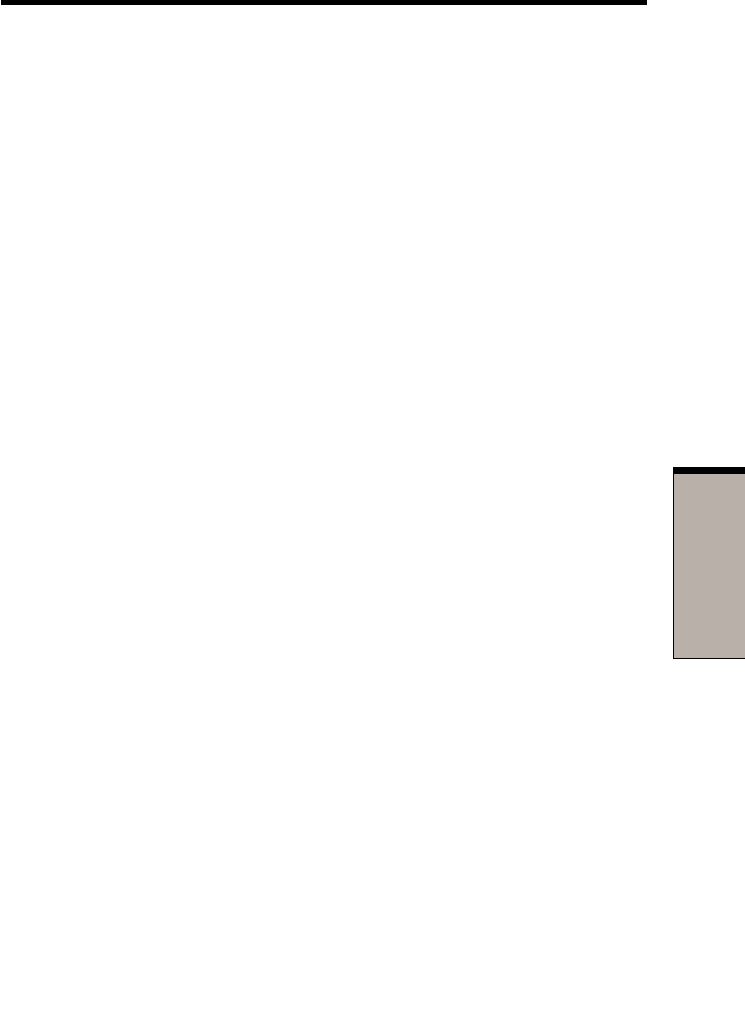
O
PERATING
B
ASICS
Chapter 4
Operating Basics
Using the Touch Pad .......................................................................... 4-1
Using the Pen (Stylus) ........................................................................ 4-2
Installing the pen ................................................................................. 4-4
Removing the pen ............................................................................... 4-5
Pen actions......................................................................................... 4-6
Single tap ........................................................................................... 4-6
Double tap .......................................................................................... 4-6
Tap and hold ....................................................................................... 4-6
Drag .................................................................................................... 4-6
Drag and drop ..................................................................................... 4-6
Replacing the pen tip .......................................................................... 4-7
Changing to the Tablet PC mode...................................................... 4-8
Changing to the PC mode ............................................................... 4-11
Using the USB FDD Kit ..................................................................... 4-11
Connecting 3 1/2" diskette drive ........................................................ 4-12
Disconnecting 3 1/2" diskette drive ................................................... 4-13
Diskette care .................................................................................... 4-13
Wireless communications ................................................................ 4-14
Wireless LAN.................................................................................... 4-14
Bluetooth wireless technology ........................................................... 4-14
Wireless communication switch ........................................................ 4-15
Wireless communication Indicator .................................................... 4-15
LAN .................................................................................................... 4-16
LAN cable types ............................................................................... 4-16
Connecting LAN cable ...................................................................... 4-16
Disconnecting LAN cable .................................................................. 4-17
Using the microphone ...................................................................... 4-18
Modem............................................................................................... 4-18
Region selection ............................................................................... 4-19
Properties menu................................................................................ 4-20
Connecting........................................................................................ 4-21
Disconnecting ................................................................................... 4-22
Cleaning the computer .................................................................... 4-22
Moving the computer ....................................................................... 4-22
Heat dispersal ................................................................................... 4-23

OPERATING BASICS
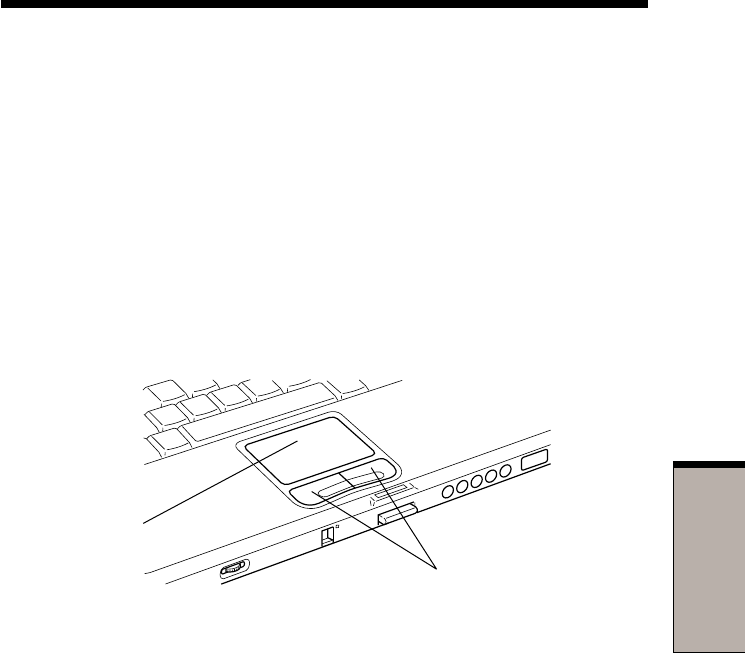
4-1
O
PERATING
B
ASICS
Chapter 4
Operating Basics
This chapter gives information on basic operations including using the Touch Pad,
the Pen, the external diskette drive, the wireless communication, LAN and the
internal modem. It also provides tips on caring for your computer and on heat
dispersal.
Using the Touch Pad
To use the Touch Pad, simply press and move your finger tip across it in the
direction you want the on-screen pointer to go.
TOUCH PAD
CONTROL
BUTTONS
TOUCH PAD
Figure 4-1 Touch Pad and Touch Pad control buttons
Two Touch Pad control buttons are used like the buttons on a mouse pointer. Press
the left button to select a menu item or to manipulate text or graphics designated by
the pointer. Press the right button to display a menu or other function depending on
the software you are using.
CAUTION: Do not press the touch pad too hard nor press it with a sharp
object such as a ball point pen against the touch pad. The touch pad
could be damaged.
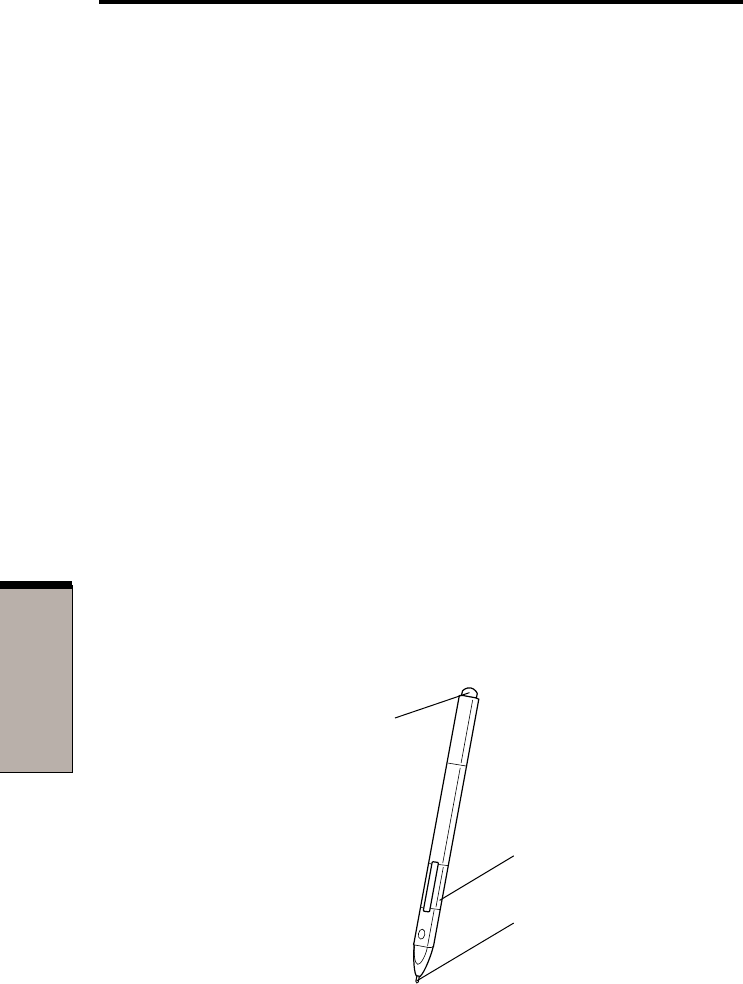
User's Manual
4-2
OPERATING BASICS
For some functions, you can tap the touch pad instead of pressing a control button.
Click Tap the touch pad once
Double-click Tap the touch pad twice
Drag and drop 1. Select the material you want to move.
2. Leave your finger on the Touch Pad after selecting the
material and move it.
3. Lift your finger to drop the item at a place where you
want it.
Scroll Vertical: Move your finger to and fro the right edge of the
touch pad.
Horizontal: Move your finger left or right along the bottom
edge of the touch pad.
Using the Pen (Stylus)
Tail switch You can use this switch as an eraser when using the
application software for graphics. The application software
for texts enables you to select and delete characters with
one-touch action.
Side switch Acts as the clicking of the right touch pad control button.
Pen point Acts as the clicking of the left touch pad control button.
T
AIL SWITCH (ERASER)
S
IDE SWITCH
P
EN POINT
Figure 4-2 The Pen (Stylus)

4-3
O
PERATING
B
ASICS
You can use the pen to execute actions and enter data. Hold the pen in a natural
position and tap, press or trace on the screen lightly. Before you begin using the
TOSHIBA3500 for the first time, you will need to calibrate the pen. Refer to Chapter
9, Pointing device in for the detail.
CAUTIONS: Observe the following precautions on the handling of the
Pen.
1. Do not tap or press the pen forcefully against the
Display screen. It could damage the Pen and Display
screen.
2. Avoid using or keeping the Pen in the place of rapid
temperature change or in a car where the Pen is
exposed to direct sunbeam.
Keep the Pen without pressure constantly applied to the
switch of the Pen. Constant pressure to the switch
causes a malfunction or characteristic deterioration.
3. The Pen is composed of precision parts. Do not drop the
Pen. Strong impact causes a malfunction or characteris-
tic deterioration.
4. Do not apply excessive force to the pen point and the
side switch. Excessive force applied to these parts
causes short life or characteristic deterioration.
(Allowable force to pen point, tail switch, side switch:
less than 1kg, for less than 30 seconds)
5. Avoid water to enter in the Pen or dew condensation.
Intrusion of water or dew condensation causes malfunc-
tion.
6. Do not disassemble the Pen. It causes maladjustment or
short life.
7. Do not stain the Pen with cosmetics or chemicals. It
causes deterioration of appearance.
Use a glass wiping cloth or dry cloth to clean the Pen
when cleaning. Do not use volatile liquid such as
alcohol, thinner or petroleum benzine.
8. Do not apply excessive force to the pen point. Crooked
or deformed pen point due to excessive force causes
malfunction.
Using the Pen (Stylus)
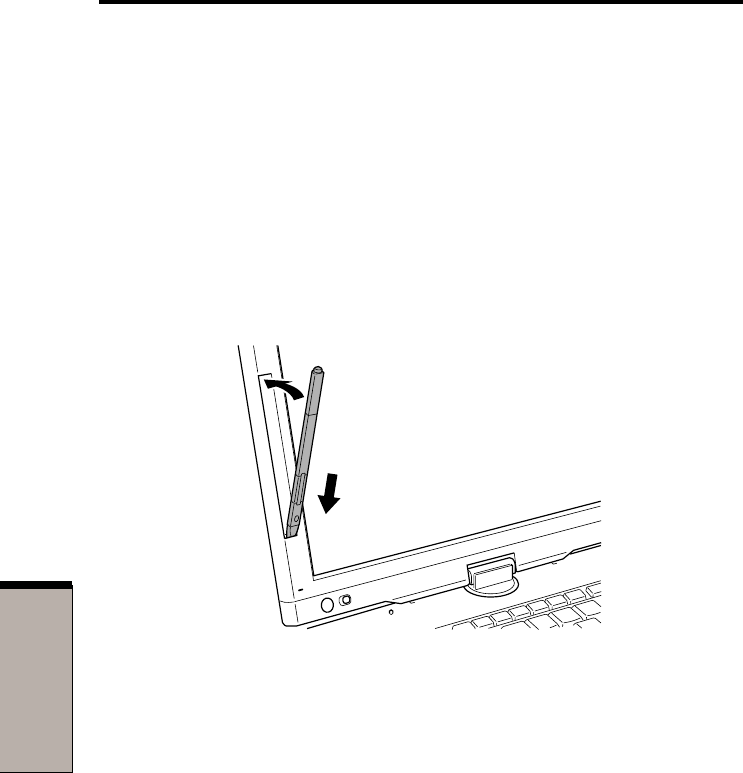
User's Manual
4-4
OPERATING BASICS
9. Keep the small parts of the Pen such as the pen point or
the knob of the side switch away from infant to prevent
them to swallow
NOTE: TOSHIBA is not liable to the quality problem of the products due
to the use of the Pen in an environment where above conditions are not
satisfied because of the use by unspecified number of users.
Installing the pen
Figure 4-3 Installing the pen
The pen is included in the product when purchased. Take out the pen from the
carton and install it to the computer as the following.
1. Insert the head of the pen into the groove first.
2. Press the pen at the tail. The pen is seated in the groove.
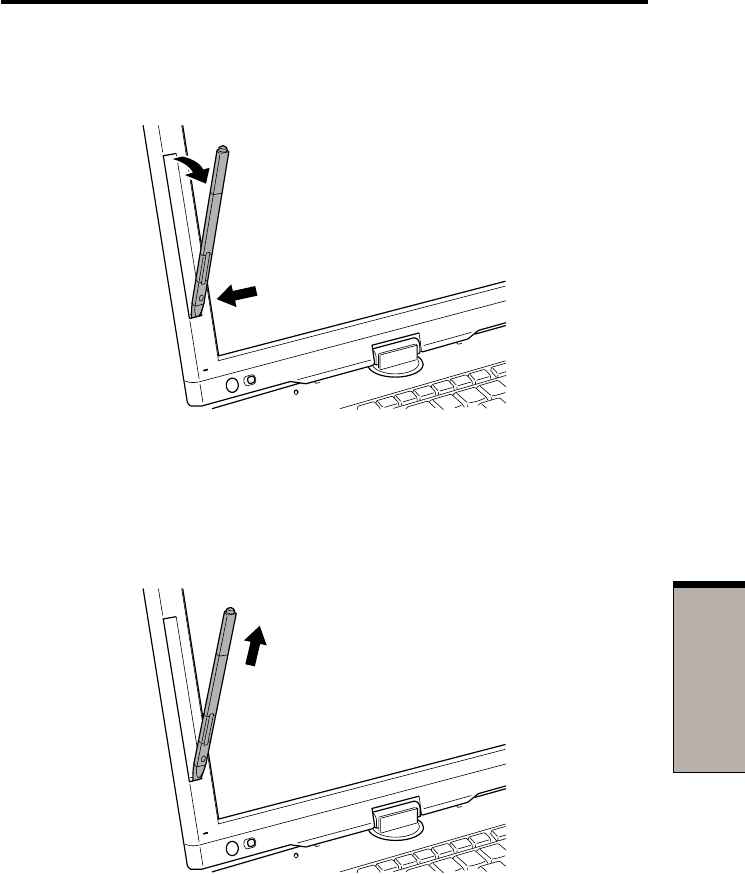
4-5
O
PERATING
B
ASICS
Using the Pen (Stylus)
Removing the pen
Figure 4-4 Removing the pen
1. To remove the pen from the groove, press the pen at the head.
2. Tail of the pen rises up.
Figure 4-5 Drawing out the pen

User's Manual
4-6
OPERATING BASICS
Pen actions
You can use the pen to enter data, start programs, move objects and execute other
actions.
Single tap
Lightly tap the tip of the pen on an object and lift it immediatey to execute an action.
A single tap is similar to clicking the left touch pad control button.
Double tap
Lightly tap the tip of pen twice on an object and lift it immediately to execute an
action. A double-tap is similar to double-clicking the left touch pad control button.
Tap and hold
Touch the tip of pen to the display screen and hold it there to display a pop-up
menu or other action. Tap and hold is similar to clicking the right touch pad control
button.
Drag
Touch the pen to the screen. Without lifting the pen, drag it across the screen to
select text or objects.
Drag and drop
Touch the pen to the screen to select an object. Without lifting the pen, drag it
across the screen. Lift the pen to drop the object to a new location.
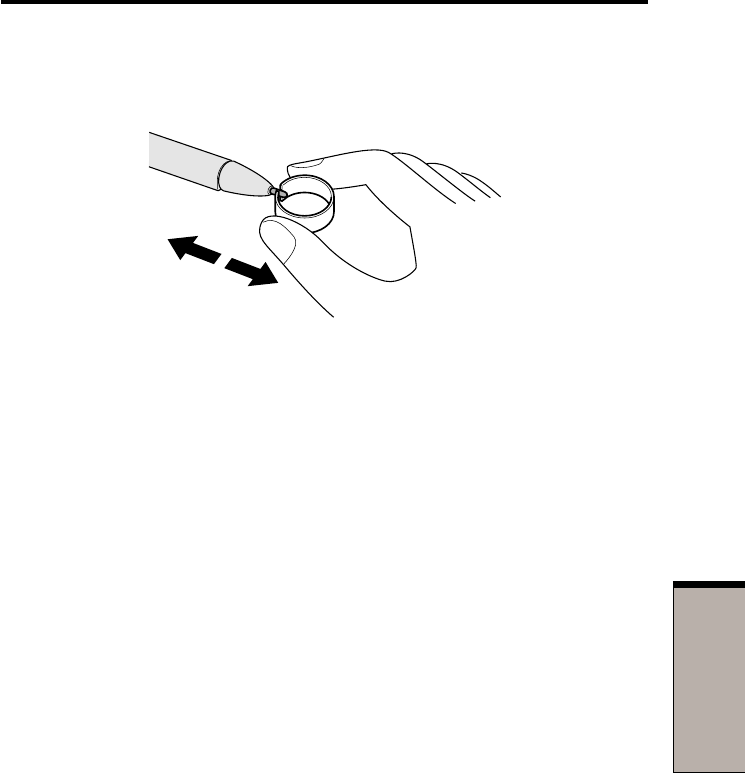
4-7
O
PERATING
B
ASICS
Using the Pen (Stylus)
Replacing the pen tip
Figure 4-6
1. To replace the pen tip, pinch the tip with a draw-out tool and pull it out.
2. Insert a new tip into the pen at the flat end of the tip and press it to seat
securely.
NOTE: Short and worn pen point is difficult to pull out. Replace the pen
point with refill before it becomes too short.
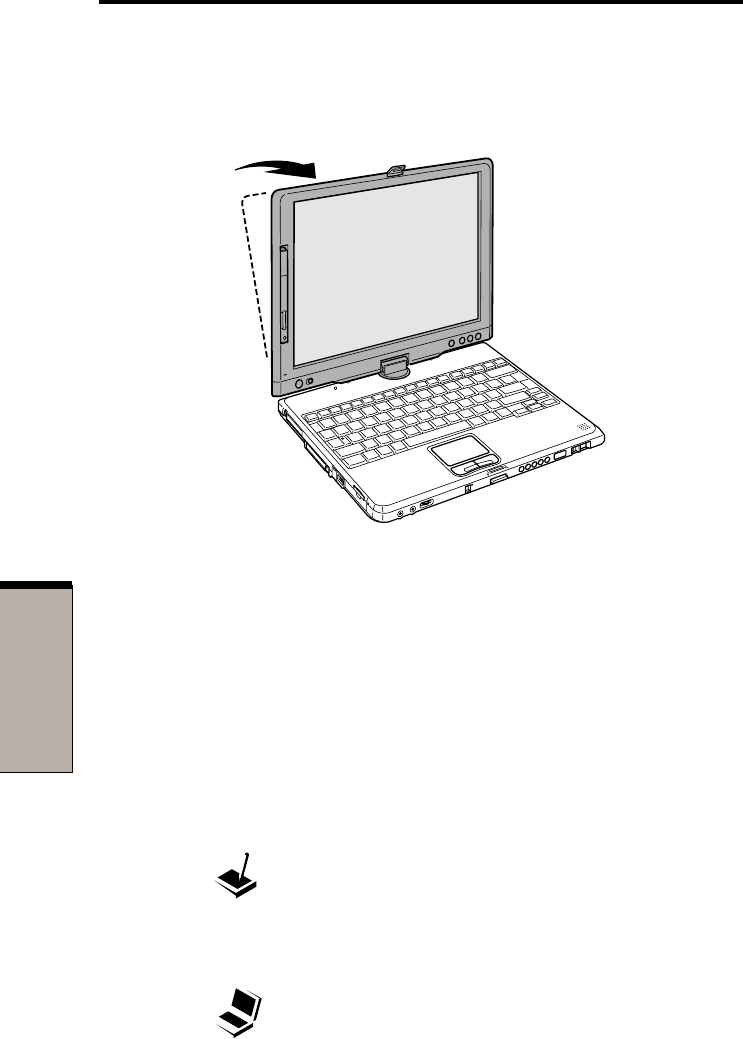
User's Manual
4-8
OPERATING BASICS
Changing to the Tablet PC mode
To change the PC mode to the Tablet PC mode, follow the instructions below.
Figure 4-7 Changing to the Tablet PC mode (1)
CAUTION: Place the computer on a stable, flat place such as a desktop
and rotate the display panel slowly, holding the panel at its lower part.
The display panel is designed not to rotate more than 180 degrees.
Rotating the display panel more than 180 degrees with an excessive
force causes to damage the panel.
The rotating direction to change the mode is the following:
From PC mode to Tablet PC mode: clockwise 180 degrees
Tablet Turn the display panel to the direction indicated by the
PC mode icon Tablet PC mode icon .
From Tablet PC mode to PC mode: counter-clockwise 180 degrees
PC mode icon Turn the display panel to the direction indicated by
the PC mode icon.
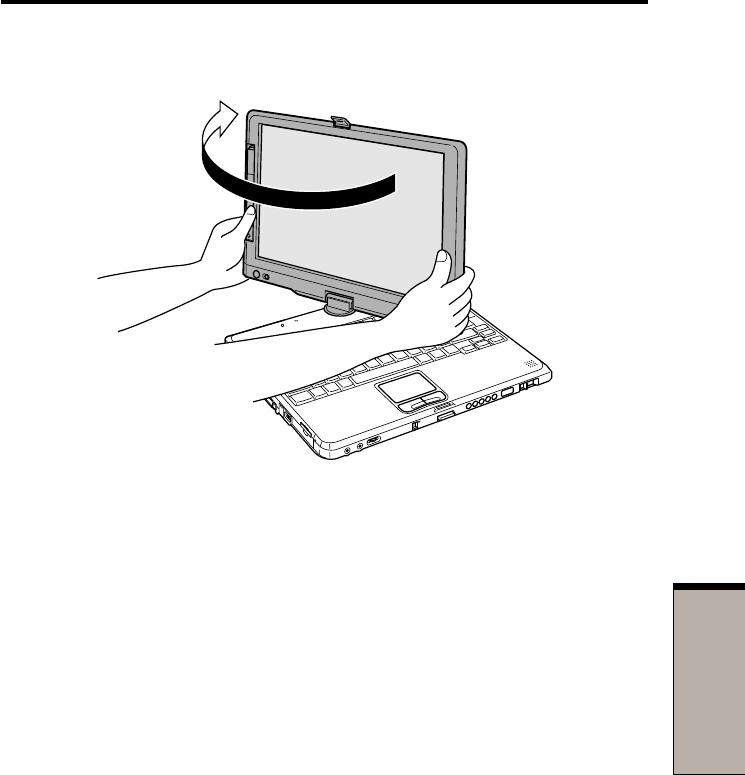
4-9
O
PERATING
B
ASICS
Changing to the Tablet PC mode
1. Open the display panel to the upright position.
Figure 4-8 Changing to the Tablet PC mode (2)
2. Rotate the display panel clockwise slowly.
NOTE: Do not apply excessive rotating force to the display panel. It
causes damage of the display panel.
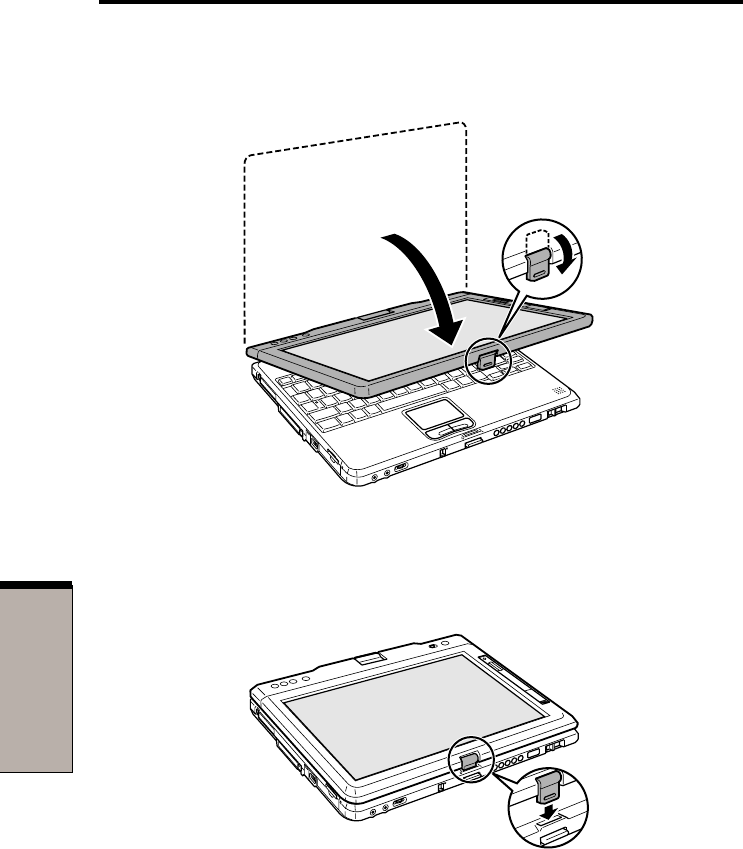
User's Manual
4-10
OPERATING BASICS
3. Turn the Display latch tab in 180 degrees to the down side.
Figure 4-9 Changing to the Tablet PC mode (3)
4. Close the display panel slowly with LCD surface outside.
Figure 4-10 Changing to the Tablet PC mode (4)
5. Turn the display latch downward.
6. Insert the display latch in the slit.
7. Press the display panel downward softly.
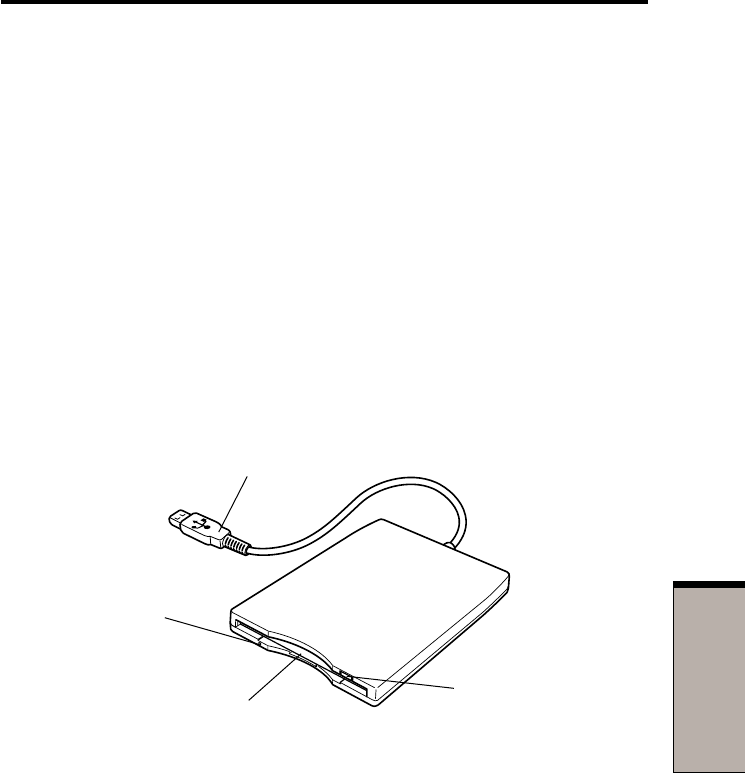
4-11
O
PERATING
B
ASICS
Changing to the PC mode
Changing to the PC mode
To change the Tablet PC mode to the PC mode, follow the instructions below.
1. Press the Display latch and raise the display to the upright position carefully.
2. Rotate the display counter-clockwise slowly.
3. Turn the display latch tab toward you for the next closing of the display.
Using the USB FDD Kit
A 3 1/2" external diskette drive module connects to the USB port.
NOTE: The USB FDD Kit is an option with some models.
USB
CONNECTOR
D
ISK-IN-USE
I
NDICATOR
E
JECT BUTTON
D
ISKETTE SLOT
Figure 4-11 The 3 1/2" USB FDD Kit
Eject button When a diskette is fully seated in the drive, the eject
button pops out. To remove a diskette, push in the eject
button and the diskette pops out partially for easy removal.
Diskette slot Insert diskettes in this slot.
Disk-In-Use This indicator lights when the diskette is being
Indicator accessed.
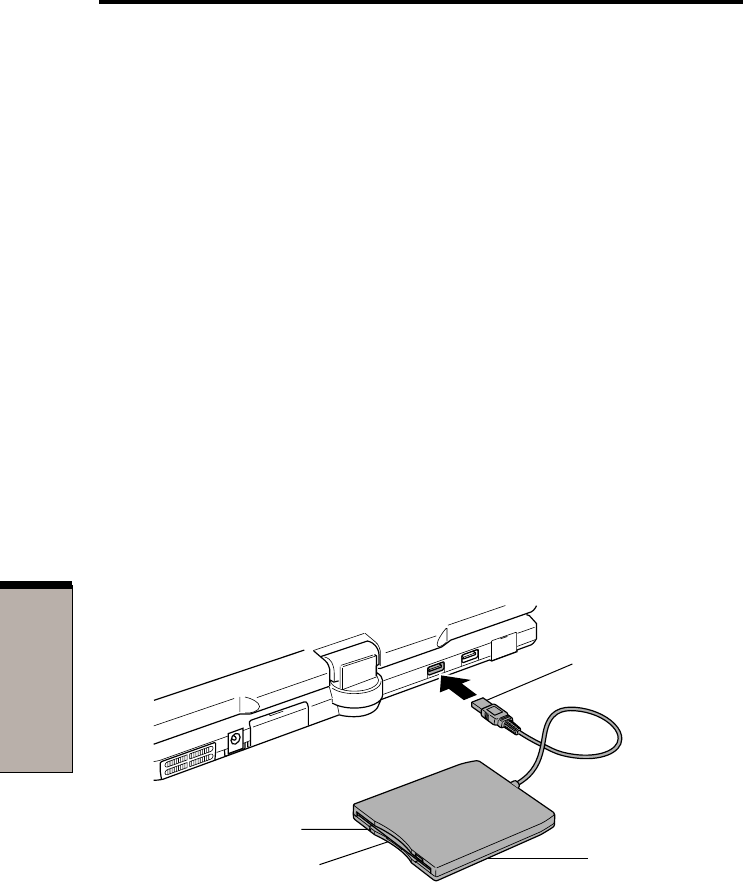
User's Manual
4-12
OPERATING BASICS
CAUTION: Check the Disk-In-Use indicator when you use the diskette
drive. Do not press the eject button, disconnect a drive cable or turn off
the computer while the light is glowing. Doing so could destroy data and
damage the diskette or the drive.
NOTES: 1. The external diskette drive should be placed on a flat,
horizontal surface when in use. Do not set the drive on an
incline greater than 20o while it is operating.
2. Do not set anything on top of the diskette drive.
3. If you need to boot the computer from the diskette drive or
if you use an OS that does not support USB, you must set
the USB-FDD Legacy Emulation feature in HW Setup to
Enabled. Refer to the USB section in Chapter 7.
Connecting 3 1/2" diskette drive
To connect the drive, plug the diskette drive connector into a USB port. Refer to
Figure 4-11.
NOTE: Make sure the connector is right side up and properly aligned
with the socket. Do not try to force the connection, doing so can damage
the connecting pins.
USB CONNECTOR
EJECT BUTTON
DISKETTE SLOT
DISK-IN-USE INDICATOR
Figure 4-12 Connecting the diskette drive to the computer
NOTE: If you connect the diskette drive after turning on the computer, it
will take about 10 seconds for the computer to recognize the drive. Do
not disconnect and reconnect before 10 seconds has elapsed.
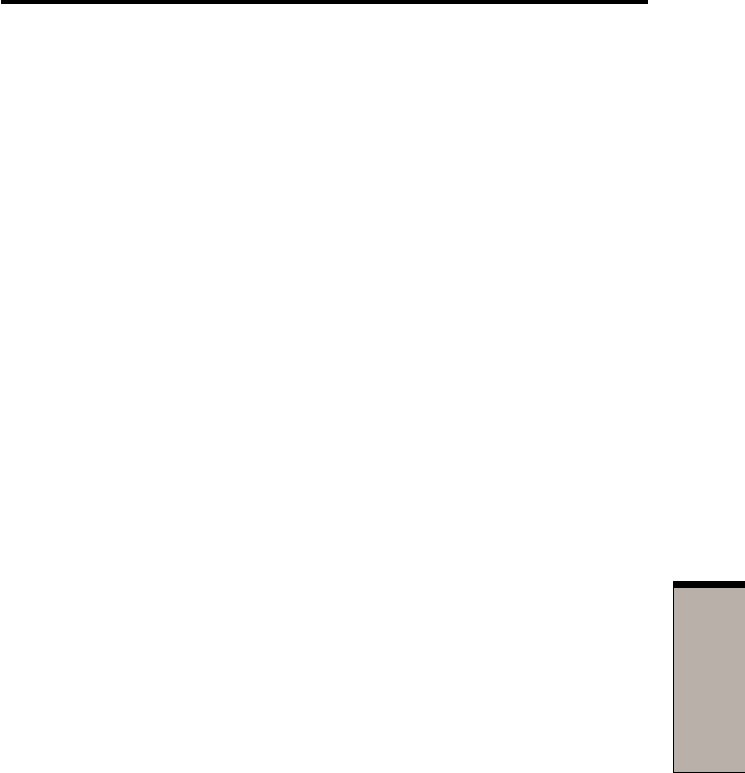
4-13
O
PERATING
B
ASICS
Disconnecting 3 1/2" diskette drive
When you have finished using the diskette drive, follow the procedures below to
disconnect it:
1. Wait for the indicator light to go out to make sure all diskette activity has
stopped.
CAUTION: If you disconnect the diskette drive or turn off the power
while the computer is accessing the drive you may lose data or damage
the diskette or the drive.
2. Pull the diskette drive connector out of the USB port.
Diskette care
Handle your diskettes with care. The following simple precautions will increase the
lifetime of your diskettes and protect the data you store on them:
1. Store your diskettes in the container they came in to protect them and keep
them clean. If a diskette is dirty, do not use cleaning fluid. Clean it with a soft
damp cloth.
2. Do not slide back the diskette’s protective metal covering or touch the
diskette’s magnetic surface. Fingerprints may prevent the diskette drive from
reading data from the diskette.
3. Data may be lost if the diskette is twisted; bent; or exposed to direct sunlight
or extreme heat or cold.
4. Do not place heavy objects on your diskettes.
5. Do not eat, smoke, or use erasers near your diskettes. Foreign particles inside
the diskette’s jacket can damage the magnetic surface.
6. Magnetic energy can destroy the data on your diskettes. Keep your diskettes
away from speakers, radios, television sets and other sources of magnetic
fields.
Using the USB FDD Kit

User's Manual
4-14
OPERATING BASICS
Wireless communications
The computer’s wireless communication function supports both wireless LAN and
Bluetooth devices.
In this chapter, the descriptions on Wireless LAN or Bluetooth are applicable to the
model equipped with Wireless LAN or Bluetooth function respectively.
Wireless LAN
The wireless LAN is compatible with other LAN systems based on Direct Sequence
Spread Spectrum radio technology that complies with IEEE 802.11 wireless LAN
standard (Revision B). It supports the following features:
❑Automatic Transmit Rate Select mechanism in the transmit range of 11, 5.5, 2
and 1 Mbit/s.
❑Frequency Channel Selection (2.4 GHz)
❑Roaming over multiple channels
❑Card Power Management
❑Wired Equivalent Privacy (WEP) data encryption, based on the 128 bit RC4
encryption algorithm as defined in the IEEE 802.11 standard on wireless LANs.
Wake-up on LAN does not function on a wireless LAN.
Bluetooth wireless technology
BluetoothTM wireless technology eliminates the need for cables between electronic
devices such as desktop computers, printers and mobile phones.
You cannot use the built-in Bluetooth functions and an optional Bluetooth PC card
simultaneously.
Bluetooth wireless technology has the following features:
Worldwide operation
The Bluetooth radio transmitter and receiver operates in the 2.45 GHz band, which is
license-free and compatible with radio systems in most countries in the world.
Radio links
You can easily establish links between two or more devices. The link is maintained
even if the devices are not within line of sight.
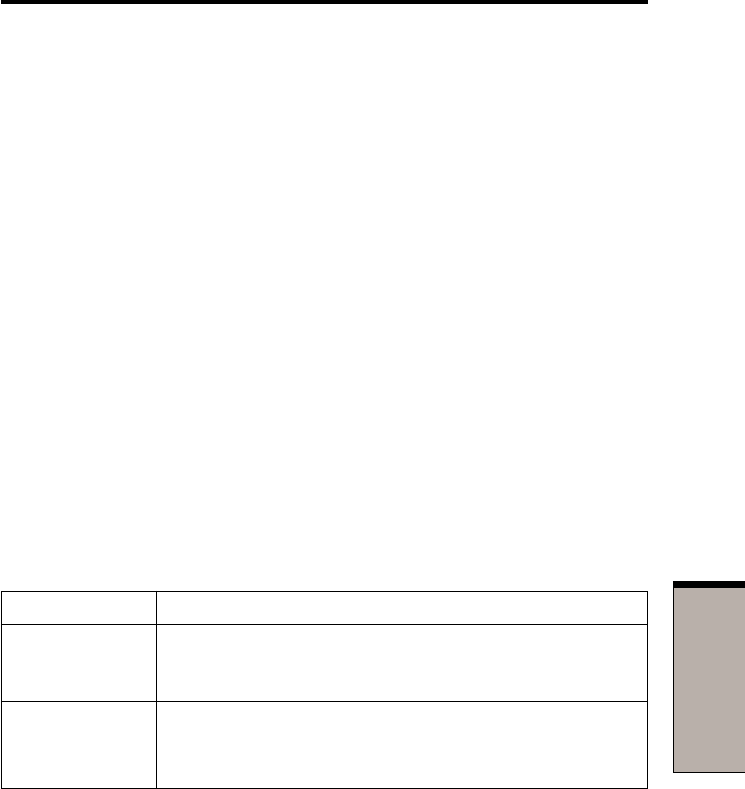
4-15
O
PERATING
B
ASICS
Security
Two advanced security mechanisms ensure a high level of security:
❑Authentication prevents access to critical data and makes it impossible to
falsify the origin of a message.
❑Encryption prevents eavesdropping and maintains link privacy.
Wireless communication switch
You can enable or disable wireless LAN and Bluetooth function, with the on/off
switch. No transmissions are sent or received when the switch is off. Slide the
switch toward the back of the computer to turn it on and toward the front of the
computer to turn it off.
CAUTION: Set the switch to off in airplanes and hospitals. Check the
indicator. It will stop glowing when the wireless communication function is
off.
Wireless communication Indicator
The wireless communication indicator indicates the status of the wireless communi-
cation functions.
Indicator status Indication
Indicator off Wireless communication switch is set to off.
Automatic power down because of overheating.
Power malfunction
Indicator glows Wireless communication switch is on.
Wireless LAN or Bluetooth is turned on by an
application.
If you used the Task Bar to disable W-LAN, restart the computer or follow the
procedures below to enable the system to recognize W-LAN. Open or click the
following: start, Control Panel, System, Hardware Device Manager,
Network adapters, TOSHIBA Wireless LAN Mini PCI Card and enable.
NOTE: Indication of Wireless Communication Standards (Wireless LAN
and Bluetooth)The indication of Wireless LAN and Bluetooth is de-
scribed on the sticker affixed to the computer. The sticker can be seen by
removing a battery pack from the computer.
Wireless communications

User's Manual
4-16
OPERATING BASICS
LAN
The computer has built-in support for Ethernet LAN (10 megabits per second,
10BASE-T) and Fast Ethernet LAN (100 megabits per second, 100BASE-Tx). This
section describes how to connect/disconnect to a LAN.
CAUTION: Do not install or remove an optional memory module while
Wake-up on LAN is enabled.
NOTE: Wake-up on LAN does not work without the AC adaptor. Leave it
connected, if you are using this feature.
LAN cable types
CAUTION: The computer must be configured properly before connecting
to a LAN. Logging onto a LAN using the computer’s default settings
could cause a malfunction in LAN operation. Check with your LAN
administrator regarding set-up procedures.
If you are using Fast Ethernet LAN (100 megabits per second, 100BASE-TX), be
sure to connect with a CAT5 cable. You cannot use a CAT3 cable.
If you are using Ethernet LAN (10 megabits per second, 10BASE-T), you can
connect with either a CAT5 or a CAT3.
Connecting LAN cable
To connect the LAN cable, follow the steps below.
CAUTION: Connect the AC adaptor before connecting the LAN cable.
The AC adaptor must remain connected during LAN use. If you discon-
nect the AC Adaptor while the computer is accessing a LAN, the system
may hang up.
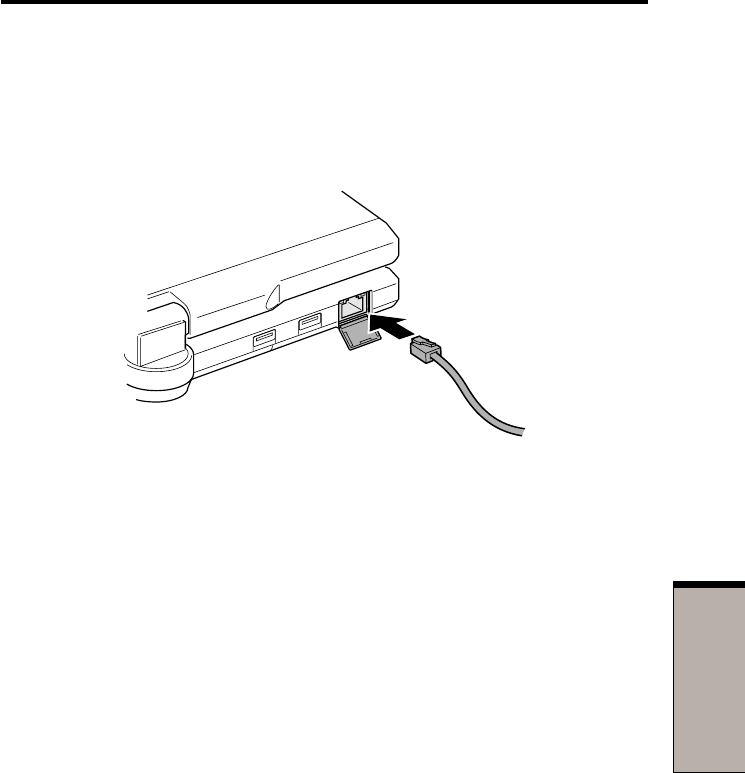
4-17
O
PERATING
B
ASICS
1. Turn off the power to the computer and to all external devices connected to
the computer.
2. Plug one end of the cable into the LAN’s jack. Press gently until you hear the
latch click into place.
Figure 4-13 Connecting the LAN cable
3. Plug the other end of the cable into a LAN hub connector. Check with your
LAN administrator before connecting to a hub.
NOTE: When the computer is exchanging data with the LAN, the LAN
Active indicator glow in yellow. When the computer is connected to a
LAN hub but is not exchanging data, the Link indicator glows in green.
Disconnecting LAN cable
To disconnect the LAN cable, follow the steps below.
CAUTION: Make sure the LAN Active indicator (yellow LED) is out
before you disconnect the computer from the LAN.
1. Pinch the lever on the connector in the computer and pull out the connector.
2. Disconnect the cable from the LAN hub in the same manner. Check with your
LAN administrator before disconnecting from the hub.
LAN

User's Manual
4-18
OPERATING BASICS
Using the microphone
Your computer has a built-in microphone that can be used to record monaural
sounds into your applications. It can also be used to issue voice commands to
applications that support such functions.
Since your computer has a built-in microphone and speaker, "howling" may be
heard under certain conditions. Howling occurs when sound from the speaker is
picked up in the microphone and amplified back to the speaker, which amplifies it
again to the microphone.
This howling occurs repeatedly and causes a very loud, high-pitched noise. It is a
common phenomenon that occurs in any sound system when the microphone input
is output to the speaker (throughput) and the speaker volume is too loud or too
close to the microphone. You can control throughput by adjusting the volume of
your speaker or through the Mute function.
To adjust the volume or activate Mute, click start, point to All Programs, point to
Accessories, point to Entertainment and click Volume Control. In the
Master Volume panel, you can use the slide bars to adjust the volume level or
click Mute at the bottom of the panel.
Modem
This section descries how to connect and disconnect the internal modem to and
from a telephone jack.
NOTE: The internal modem does not support the voice functions.
All data and fax functions are supported.
CAUTIONS: 1. In case of a lightning storm, unplug the modem cable
from the telephone jack.
2. Do not connect the modem to a digital telephone line.
A digital line will damage the modem.
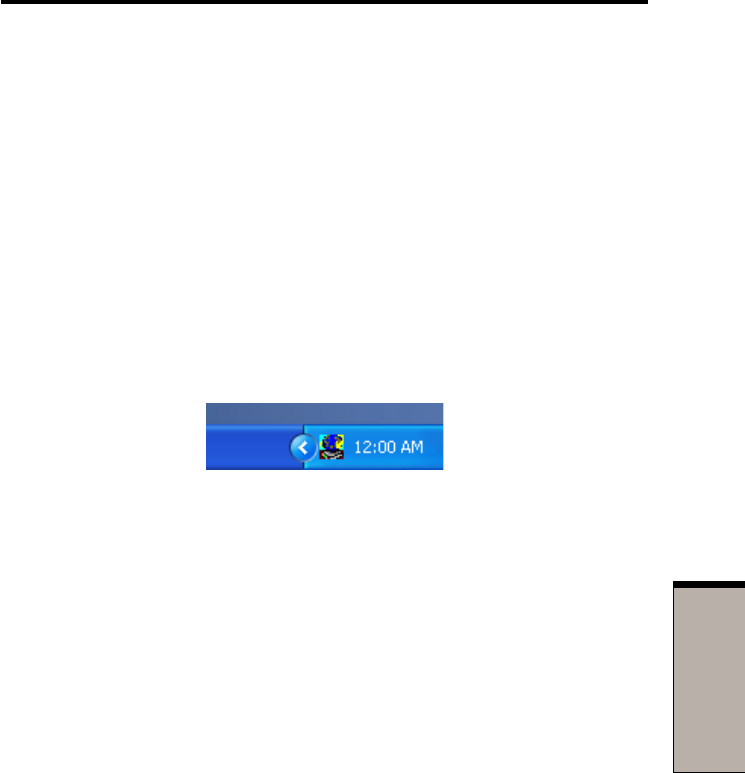
4-19
O
PERATING
B
ASICS
Region selection
Telecommunication regulations vary from one region to another, so you will need to
make sure the internal modem’s settings are correct for the region in which it will be
used.
1. Click start, point to All Programs, point to TOSHIBA Internal Modem
and click Region Select Utility.
NOTE: Do not use the Country/Region Select function in the Modem
setup utility in the Control Panel if the function is available. If you
change the Country/Region in the Control Panel, the change may not
take effect.
2. The Region Selection icon will appear in the Windows Task Bar.
Figure 4-14 The Region Selection icon (Windows XP Tablet PC Edition)
3. Click the icon with the primary mouse button to display a list of regions that
the modem supports. A sub menu for telephony location information will also
be displayed. A check will appear next to the currently selected region and
telephony location.
4. Select a region from the region menu or a telephony location from the sub-
menu.
•When you click a region it becomes the modem’s region selection, and the
New Location for telephony will be set automatically.
•When you select a telephony location, the corresponding region is automati-
cally selected and it becomes the modem’s current region setting.
Modem
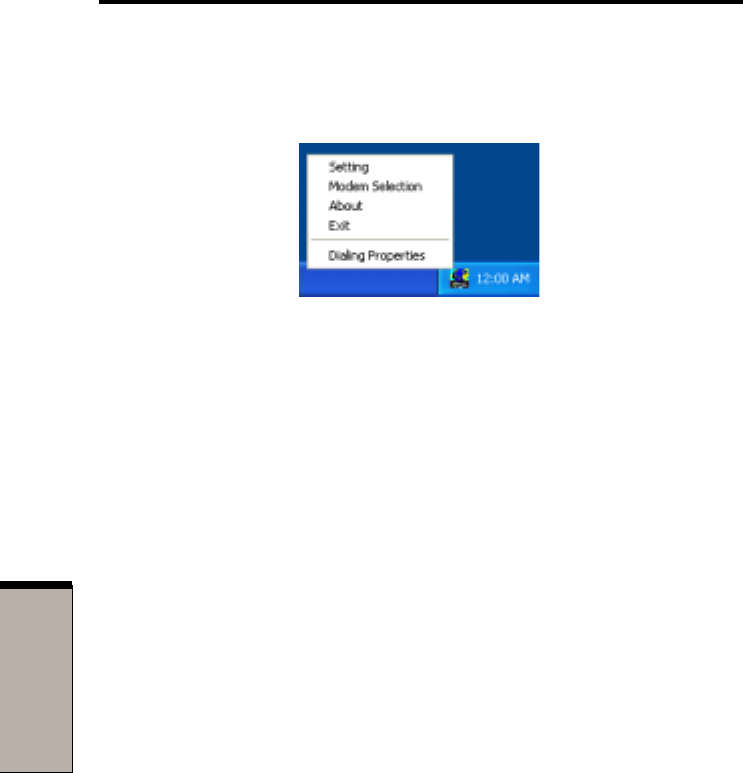
User's Manual
4-20
OPERATING BASICS
Properties menu
Click the icon with the secondary mouse button to display the following menu.
Figure 4-15 The menu list (Windows XP Tablet PC Edition)
Setting
You can enable or disable the following settings:
AutoRun Mode
Region Select Utility starts automatically when you start up the operating
system.
Open the Dialing Properties dialog box after selecting region.
The dialing properties dialog box will be displayed automatically after you
select the region.
Location list for region selection.
A submenu appears displaying location information for telephony.
Open dialog box, if the modem and Telephony Current
Location region code do not match.
A warning dialog box is displayed if current settings for region code and
telephony location are incorrect.
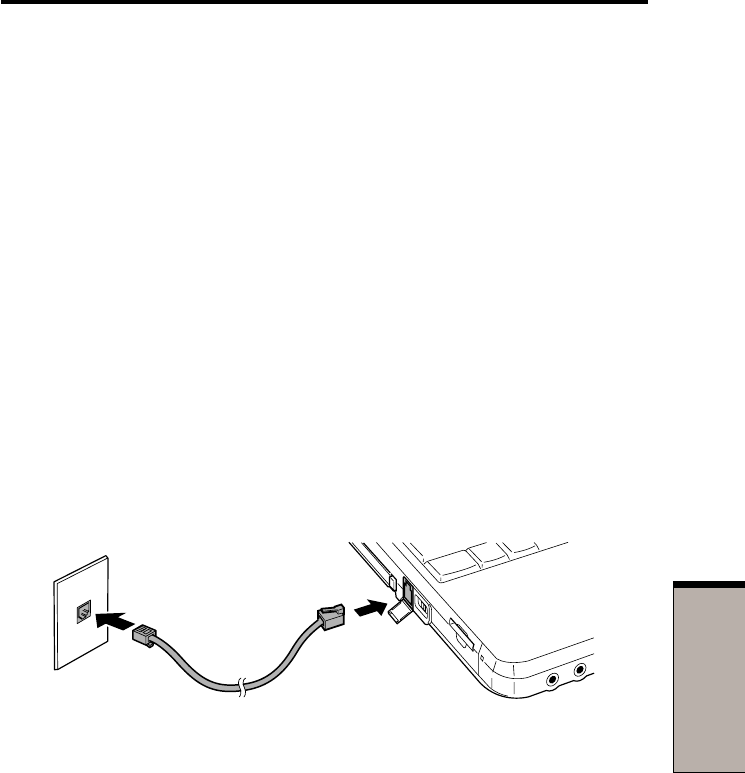
4-21
O
PERATING
B
ASICS
Modem Selection
If the computer cannot recognize the internal modem, a dialog box is displayed.
Select the COM port for your modem to use.
Dialing Properties
Select this item to display the dialing properties.
CAUTION: If you are using the computer in Japan, technical regulations
described in the Telecommunications Business Law require that you
select Japan region mode. It is illegal to use the modem in Japan with
any other selection.
Connecting
To connect the internal modem cable, follow the steps below:
1. Plug one end of the modular cable into the modem jack.
2. Plug the other end of the modular cable into a telephone jack.
Figure 4-16 Connecting the internal modem
CAUTION: Do not pull on the cable or move the computer while the
cable is connected.
NOTE: If you use a storage device such as a CD-ROM drive or HDD
connected to a 16-bit PC card, you might experience the following
modem problems:
1. Modem speed is slow or communication is interrupted.
2. Skip may occur in sound.
Modem

User's Manual
4-22
OPERATING BASICS
Disconnecting
To disconnect the internal modem cable, follow the steps below:
1. Pinch the lever on the connector in the telephone jack and pull out the connector.
2. Disconnect the cable from the computer in the same manner.
Cleaning the computer
To help ensure long, trouble-free operation, keep the computer free of dust and use
care with liquids around the computer.
❑Be careful not to spill liquids into the computer. If the computer does get wet, turn
the power off immediately and let the computer dry completely before you turn it
on again.
❑Clean the computer using a slightly damp (with water) cloth. You can use glass
cleaner on the display. Spray a small amount of cleaner on a soft, clean cloth and
wipe the screen gently with the cloth.
CAUTION: Never spray cleaner directly onto the computer or let liquid run
into any part of it. Never use harsh or caustic chemical products to clean the
computer.
Moving the computer
The computer is designed for rugged durability. However, a few simple precautions
taken when moving the computer will help insure trouble-free operation.
❑Turn off the computer. Do not carry the computer with power on or in stand by
state. Do not carry the computer while DISK LED is glowing.
❑Do not expose the computer with rapid temperature change (such as the case to
bring the PC from cold outside into warm room).
When rapid temperature change is unavoidable, turn on the computer after a
couple of hours.
❑Remove all external peripheral devices and their connection cables from the
computer before carrying. If an optical disk is inserted in an optical disk drive, eject
it.
❑Do not drop the computer nor apply excessive impact on the computer. Do not
leave the computer in an automobile where the computer is exposed to direct
sunbeam.
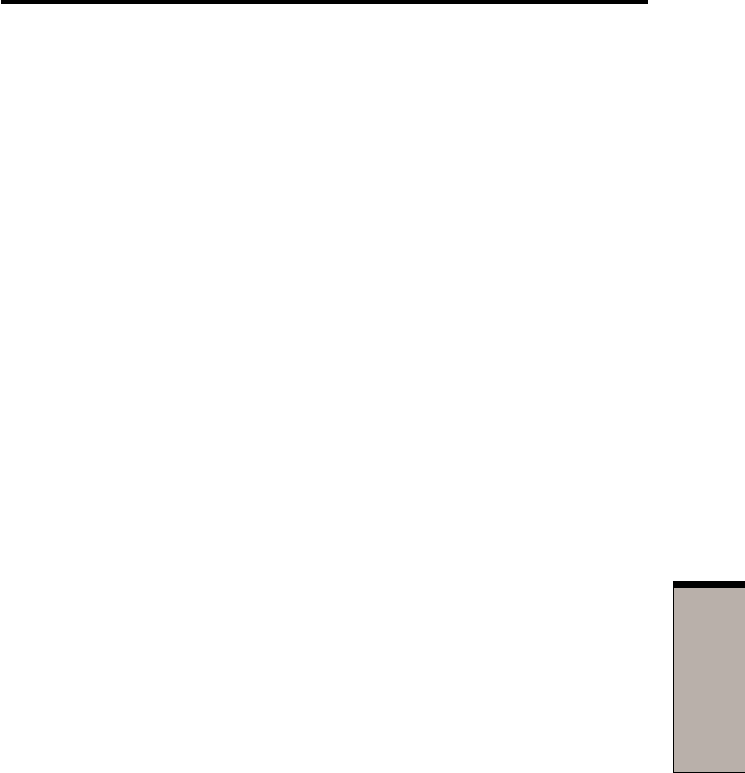
4-23
O
PERATING
B
ASICS
❑Close the display panel when carrying.
❑Do not put the computer in Tablet PC mode in a bag.
Heat dispersal
To protect from overheating, the CPU has an internal temperature sensor. If the
computer’s internal temperature rises to a certain level, the cooling fan is turned on
or the processing speed is lowered. You can select whether to control the CPU
temperature by turning on the fan first, then if necessary, lowering the CPU speed.
Or, by lowering the CPU speed first, then if necessary, turning on the fan. Use the
Cooling Method item of the Power Save Mode window in TOSHIBA Power Saver.
Maxmum Turn on the fan first, then if necessary, lower the CPU
performance processing speed.
Performance Use a combination of the fan and lowering the CPU
processing speed.
Battery optimized Lower the CPU processing speed first, then if necessary
turn on the fan.
When the CPU temperature falls to a normal range, the fan is turned off and the CPU
operation returns to standard speed.
NOTE: If the CPU temperature reaches an unacceptably high level with
either setting, the system automatically shuts down to prevent damage.
Data in memory will be lost.
Heat dispersal

User's Manual
4-24
OPERATING BASICS

T
HE
K
EYBOARD
Chapter 5
The Keyboard
Typewriter keys .................................................................................. 5-1
F1 … F12 function keys ...................................................................... 5-2
Soft keys: Fn key combinations......................................................... 5-2
Emulating keys on enhanced keyboard ............................................... 5-2
Hotkeys .............................................................................................. 5-4
Fn Sticky key ..................................................................................... 5-6
Windows special keys ........................................................................ 5-7
Keypad overlay................................................................................... 5-7
Turning on the overlays ....................................................................... 5-7
Temporarily using normal keyboard (overlay on) .................................. 5-8
Temporarily using overlay (overlay off) ................................................. 5-9
Temporarily changing modes ............................................................... 5-9
Generating ASCII characters ............................................................. 5-9

THE KEYBOARD

5-1
T
HE
K
EYBOARD
Chapter 5
The Keyboard
The computer’s keyboard layouts are compatible with a 101/102-key enhanced
keyboard. By pressing some keys in combination, all the 101/102-key keyboard
functions can be executed on the computer.
The number of keys on your keyboard depends on which country/region’s
keyboard layout your computer is configured with. Keyboards for numerous
languages are available.
There are five types of keys: typewriter keys, keypad overlay, function keys, soft
keys and cursor control keys.
Typewriter keys
The typewriter keys, produce the upper- and lowercase letters, numbers, punctua-
tion marks, and special symbols that appear on the screen.
There are some differences, however, between using a typewriter and using a
computer keyboard:
❑Letters and numbers produced in computer text vary in width. Spaces, which
are created by a “space character,” may also vary depending on line justifica-
tion and other factors.
❑The lowercase l (el) and the number 1 (one) are not interchangeable on
computers as they are on a typewriter.
❑The uppercase O (oh) and the 0 (zero) are not interchangeable.
❑The Caps Lock function key locks only the alphabetic characters in upper-
case while the shift lock on a typewriter places all keys in the shifted position.
❑The Shift keys, the Tab key, and the BkSp (backspace) key perform the
same function as their typewriter counterparts but also have special computer
functions.
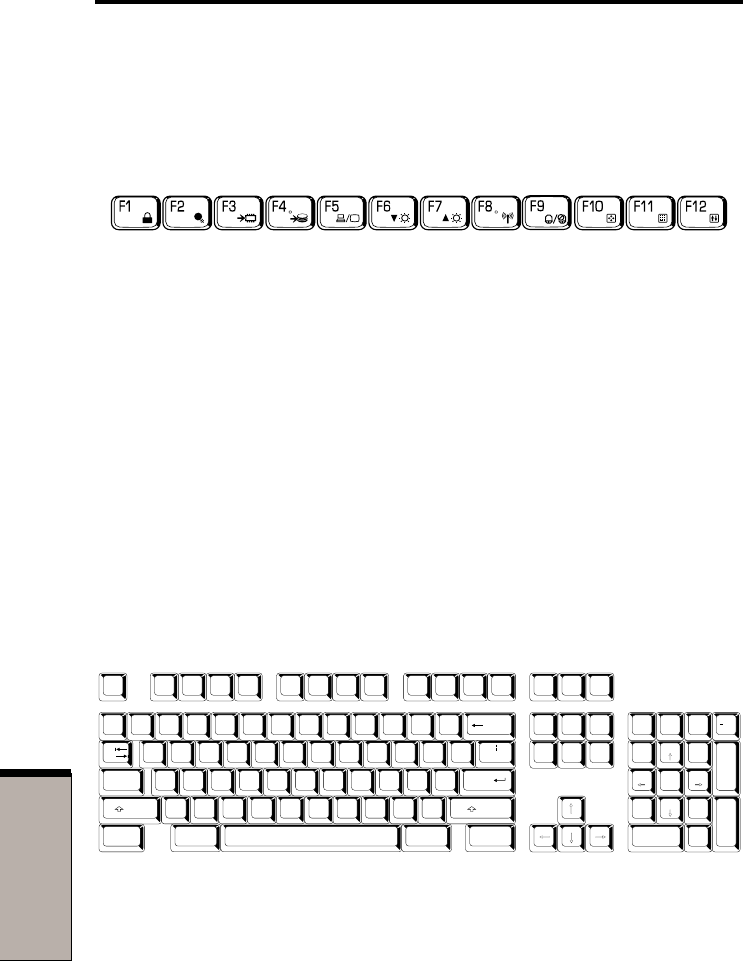
User's Manual
5-2
THE KEYBOARD
F1 … F12 function keys
The function keys, not to be confused with Fn, are the 12 keys at the top of your
keyboard. These keys are dark gray, but function differently from the other dark
gray keys.
F1 through F12 are called function keys because they execute programmed
functions when pressed. Used in combination with the Fn key, keys marked with
icons execute specific functions on the computer. See the section, Soft keys: Fn key
combinations, in this chapter. The function executed by individual keys depends
on the software you are using.
Soft keys: Fn key combinations
The Fn (function) is unique to TOSHIBA computers and is used in combination
with other keys to form soft keys. Soft keys are key combinations that enable,
disable or configure specific features.
NOTE: Some software may disable or interfere with soft-key operations.
Soft-key settings are not restored by the Resume feature.
Emulating keys on enhanced keyboard
Esc
#
3Home PgUp
Bk Sp
F1 F2 F3 F4 F5 F6 F7 F8 F9 F10 F11 F12
!
12
$
4
%
568
(
9
)
0
&
7
_+
=
PgDn
End
Shift
Del
Ins
CapsLock
Shift
Enter
QW RTYU I OP
{
[
}
]
E
~
‘
ASDFGHJ KL
:
;
@
?
/
>
.
<
,
MN
V
CXZB
\
^*
+
-
Tab
Alt
Alt
Enter
7
Home
8 9
PgUp
654
1
End
2 3
PgDn
0
Ins
Num
Lock
.
Del
PrtSc
Scroll
lock
Pause
Break
Ctrl
Ctrl
SysReg
/
*
.
,,
,
Figure 5-1 A 101-key enhanced keyboard layout
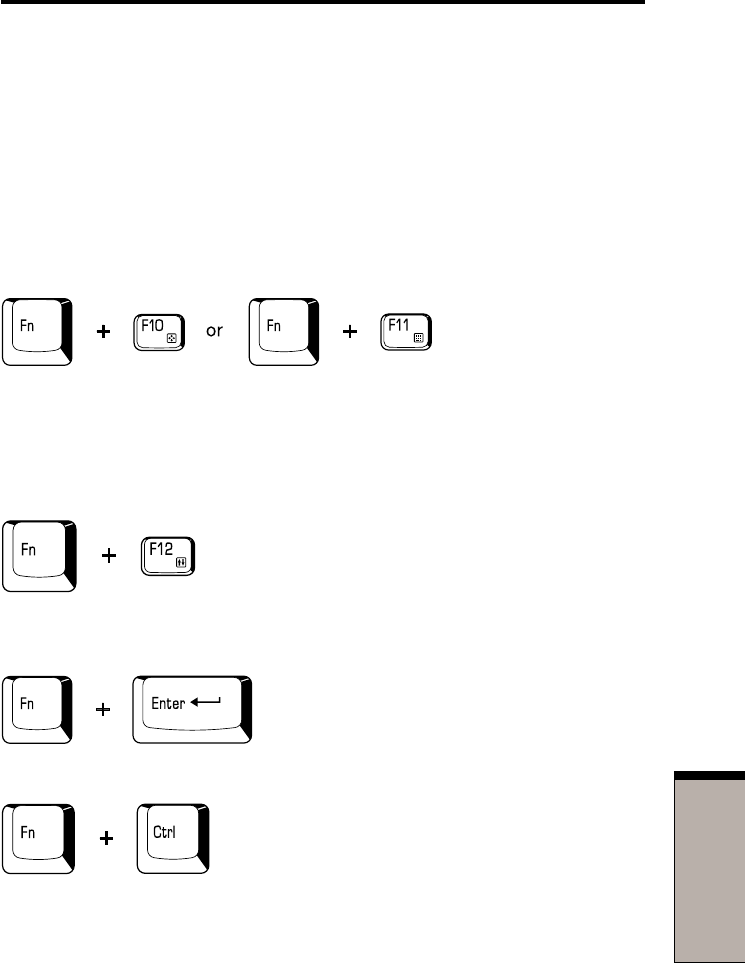
5-3
T
HE
K
EYBOARD
Soft keys: Fn key combinations
The keyboard is designed to provide all the features of the 101-key enhanced
keyboard, shown in figure 5-1. The 101/102-key enhanced keyboard has a numeric
keypad and scroll lock key. It also has additional Enter and Ctrl keys to the right of
the main keyboard. Since the keyboard is smaller and has fewer keys, some of the
enhanced keyboard functions must be simulated using two keys instead of one on
the larger keyboard.
Your software may require you to use keys that the keyboard does not have.
Pressing the Fn key and one of the following keys simulates the enhanced
keyboard’s functions.
Press Fn + F10 or Fn + F11 to access the integrated keypad. When activated, the
keys with gray markings on the side face become numeric keypad keys (Fn + F11)
or cursor control keys (Fn + F10). Refer to the Keypad overlay section in this
chapter for more information on how to operate these keys. The power on default
for both settings is off.
Press Fn + F12 (ScrLock) to lock the cursor on a specific line. The power on
default is off.
Press Fn + Enter to simulate Enter on the enhanced keyboard’s numeric keypad.
Press Fn + Ctrl to simulate the enhanced keyboard’s right Ctrl key.
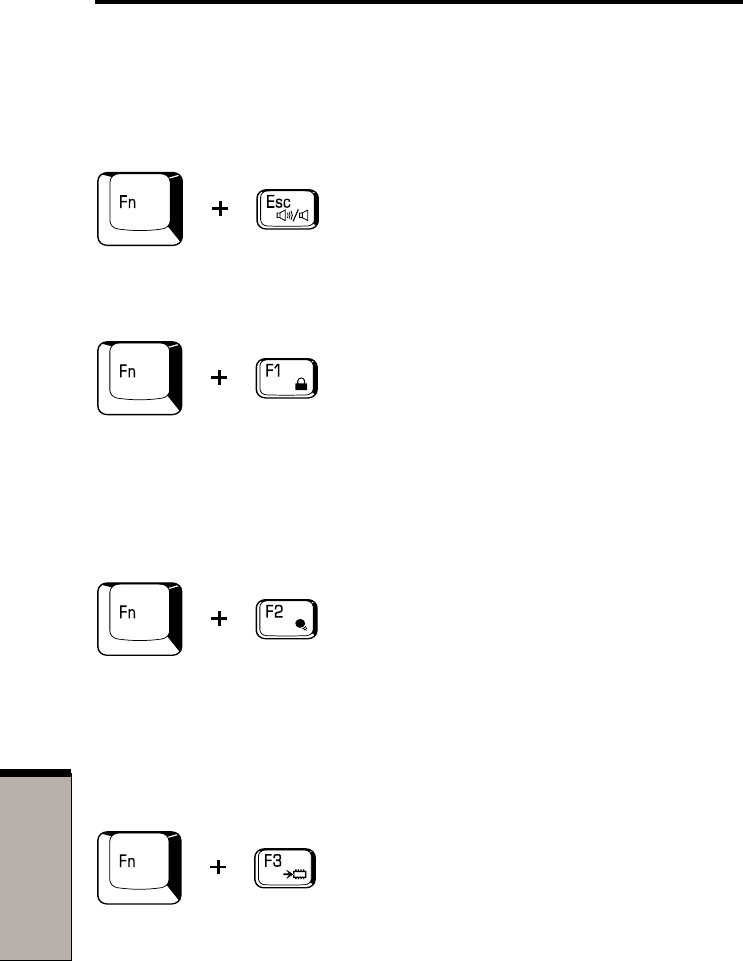
User's Manual
5-4
THE KEYBOARD
Hotkeys
Hotkeys (Fn + another key) let you enable or disable certain features of the
computers.
Sound mute: Pressing Fn + Esc in a Windows environment turns sound on or
off. When you press these hotkeys, the current setting will be displayed as an icon.
Instant security: Press Fn + F1 to blank the screen to prevent others from
accessing your data. To restore the screen and original settings, press any key or
press the Touch Pad. If a screensaver password is registered, a dialog box will
appear. Enter the screensaver password and click OK. If no password is set, the
screen will be restored when you press any key or press the Touch Pad.
Power save mode: Pressing Fn + F2 changes the power save mode.
If you press Fn + F2, the Power Save Mode is displayed in a dialog box. Continue
holding down Fn and press F2 again to change the setting. You can also change
this setting through the Plugged in or Running on batteries item of the Power
Saver Properties window in Power Saver.
Standby: When you press Fn + F3, the computer can enter Standby. To avoid
entering Standby unexpectedly, a dialog box appears for verification. However, if
you check the checkbox in the dialog box, it will not appear from the next time.
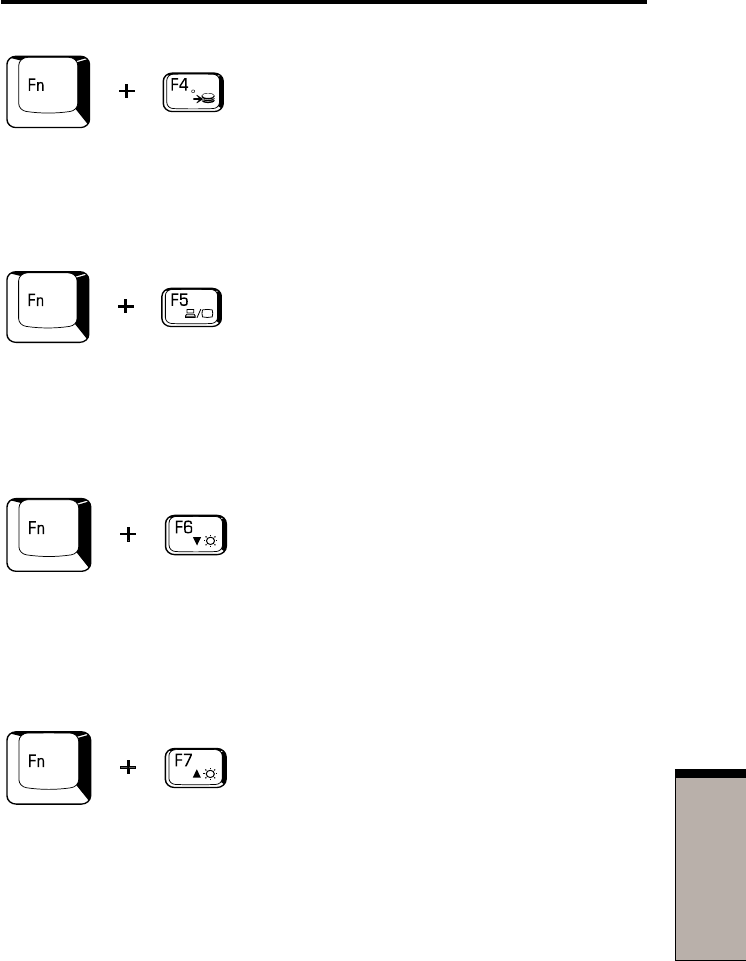
5-5
T
HE
K
EYBOARD
Soft keys: Fn key combinations
Hibernation: When you press Fn + F4, the computer can enter Hibernation. To
avoid entering Hibernation unexpectedly, a dialog box appears for verification.
However, if you check the checkbox in the dialog box, it will not appear from the
next time.
Display selection: Press Fn + F5 to change the active display device. When
you press these hot keys a dialog box appears. Only selectable devices will be
displayed. Hold down Fn and press F5 again to change the device. When you
release Fn and F5, the selected device will change. If you hold down the keys for
three seconds the selection will return to LCD.
LCD Display Brightness: Pressing Fn + F6 decreases the LCD display bright-
ness in increments. When you press these hotkeys, the current setting will be
displayed for two seconds by a pop-up icon. You can also change this setting
through the Monitor brightness item of the Power Save Mode window in Power
Saver.
LCD Display Brightness: Pressing Fn + F7 increases the LCD display bright-
ness in increments. When you press these hotkeys, the current setting will be
displayed for two seconds by a pop-up icon. You can also change this setting
through the Monitor brightness item of the Power Save Mode window in Power
Saver.
NOTE: You cannot change the display brightness for about 18 seconds
after the LCD turns on. To protect display quality, the brightness level is
set at the maximum value.
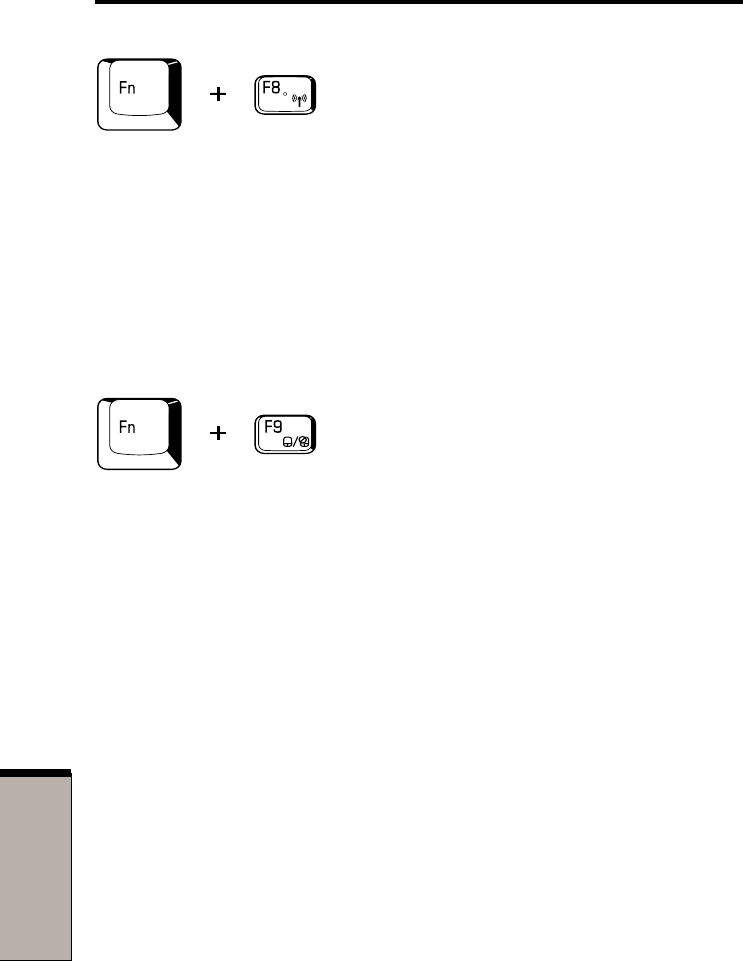
User's Manual
5-6
THE KEYBOARD
Wireless setting: If your computer has both Bluetooth and wireless LAN
functions, you can press Fn + F8 to select which type of wireless communication
you want to use. When you press these hotkeys, a dialog box will appear. Continue
holding down Fn and press F8 to change the setting. If wireless communication is
turned off, Disabled Wireless Communication Switch will be
displayed.
NOTE: If no wireless communication device is installed, no dialog box
will appear.
Touch Pad: Pressing Fn + F9 enables or disables the Touch Pad function. When
you press those hotkeys, the current setting will change and be displayed as an
icon.
Fn Sticky key
You can use the TOSHIBA Accessibility Utility to make the Fn key sticky, that is,
you can press it once, release it, and they press an “F number” key.
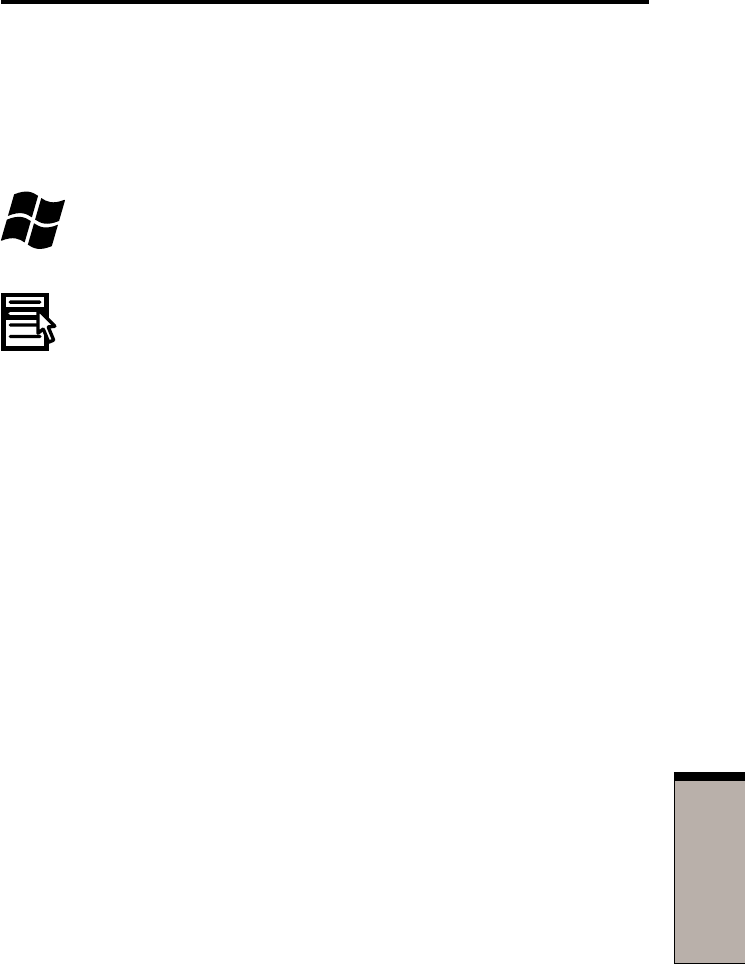
5-7
T
HE
K
EYBOARD
Windows special keys
Windows special keys
The keyboard provides two keys that have special functions in Windows : one
activates the Start menu and the other has the same function as the secondary
mouse button.
This key activates the Windows Start menu.
This key has the same function as the secondary mouse button.
Keypad overlay
Your computer’s keyboard does not have an independent numeric keypad, but its
numeric keypad overlay functions like one.
The keys in the center of the keyboard with white letters make up the numeric
keypad overlay. The overlay provides the same functions as the numeric keypad on
the 101/102-key enhanced keyboard in figure 5-2.
Turning on the overlays
The numeric keypad overlay can be used for numeric data input or cursor and page
control.
Arrow mode
To turn on the Arrow mode, press Fn + F10. The Arrow mode indicator lights.
Now try cursor and page control using the keys shown in figure 5-2. Press Fn +
F10 again to turn off the overlay.
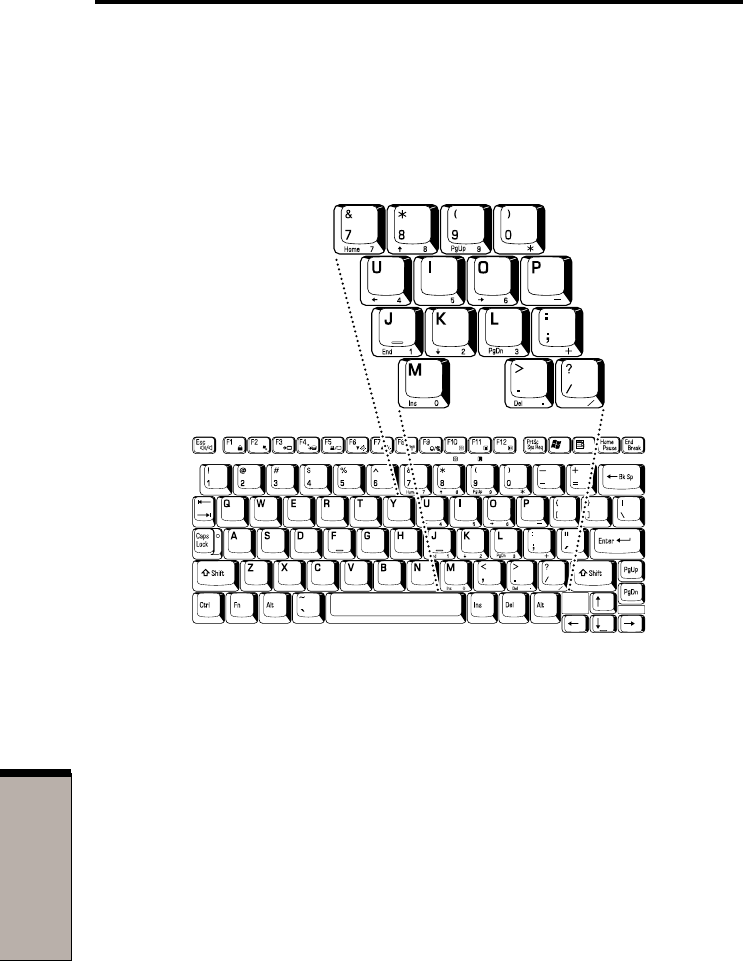
User's Manual
5-8
THE KEYBOARD
Numeric mode
To turn on the Numeric mode, press Fn + F11. The Numeric mode indicator lights.
Now try numeric data entry using the keys in figure 5-2. Press Fn + F11 again to
turn off the overlay.
Figure 5-2 The numeric keypad overlay
Temporarily using normal keyboard (overlay on)
While using the overlay, you can temporarily access the normal keyboard without
turning off the overlay:
1. Hold Fn and press any other key. All keys will operate as if the overlay were
off.
2. Type uppercase characters by holding Fn + Shift and pressing a character
key.
3. Release Fn to continue using the overlay.

5-9
T
HE
K
EYBOARD
Generating ASCII characters
Temporarily using overlay (overlay off)
While using the normal keyboard, you can temporarily use the keypad overlay
without turning it on:
1. Press and hold down Fn.
2. Check the keyboard indicators. Pressing Fn turns on the most recently used
overlay. If the Numeric mode indicator lights, you can use the overlay for
numeric entry. If the Arrow mode indicator lights, you can use the overlay for
cursor and page control.
3. Release Fn to return to normal keyboard operation.
Temporarily changing modes
If the computer is in Numeric mode, you can switch temporarily to Arrow
mode by pressing a shift key.
If the computer is in Arrow mode, you can switch temporarily to Numeric
mode by pressing a shift key.
Generating ASCII characters
Not all ASCII characters can be generated using normal keyboard operation. But,
you can generate these characters using their ASCII codes.
With the overlay on:
1. Hold down Alt.
2. Using the overlay keys, type the ASCII code.
3. Release Alt, and the ASCII character appears on the display screen.
With the overlay off:
1. Hold Alt + Fn.
2. Using the overlay keys, type the ASCII code.
3. Release Alt + Fn, and the ASCII character appears on the display screen.

User's Manual
5-10
THE KEYBOARD

PP
PP
P
OWEROWER
OWEROWER
OWER
ANDAND
ANDAND
AND
PP
PP
P
OWEROWER
OWEROWER
OWER
-U-U
-U-U
-U
PP
PP
P
M M
M M
M
ODESODES
ODESODES
ODES
Chapter 6
Power and Power-Up Modes
Power conditions................................................................................ 6-1
Power indicators ................................................................................ 6-3
Battery indicators................................................................................ 6-3
DC IN indicator .................................................................................... 6-3
Power indicator ................................................................................... 6-4
Battery types ....................................................................................... 6-4
Battery Pack....................................................................................... 6-4
Real time clock battery ....................................................................... 6-5
Care and use of the Battery Pack ..................................................... 6-5
Safety precautions.............................................................................. 6-6
Charging the batteries ......................................................................... 6-9
Monitoring battery capacity ............................................................... 6-10
Maximizing battery operating time .................................................... 6-11
Retaining data with power off ............................................................. 6-12
Extending battery life ........................................................................ 6-12
Replacing the Battery Pack ............................................................. 6-13
Removing the Battery Pack ............................................................... 6-13
Installing the Battery Pack ................................................................ 6-15
Starting the computer by password ................................................ 6-16
Tablet PC mode ................................................................................ 6-16
Power-up modes .............................................................................. 6-17
Windows utilities ............................................................................... 6-17
Hotkeys ............................................................................................ 6-17
Panel power off ................................................................................ 6-17
System Auto Off ................................................................................ 6-17

PP
PP
POWEROWER
OWEROWER
OWER
ANDAND
ANDAND
AND
PP
PP
POWEROWER
OWEROWER
OWER-U-U
-U-U
-UPP
PP
P M M
M M
MODESODES
ODESODES
ODES
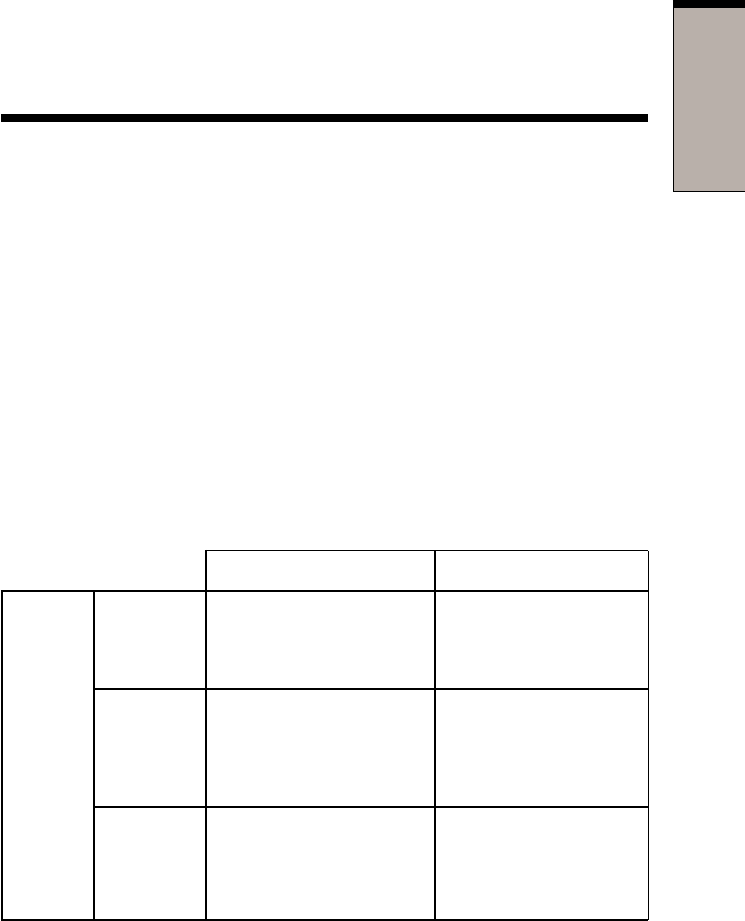
6-1
PP
PP
P
OWEROWER
OWEROWER
OWER
ANDAND
ANDAND
AND
PP
PP
P
OWEROWER
OWEROWER
OWER
-U-U
-U-U
-U
PP
PP
P
M M
M M
M
ODESODES
ODESODES
ODES
Chapter 6
Power and Power-Up Modes
The computer’s power resources include the AC adaptor and internal batteries. This
chapter gives details on making the most effective use of these resources including
charging and changing batteries, tips for saving battery power, and power up
modes.
Power conditions
The computer’s operating capability and battery charge status are affected by the
power conditions: whether an AC adaptor is connected, whether a battery is
installed and what the charge level is for the battery.
Table 6-1 Power conditions
Power on Power off (no operation)
AC Battery • Operates • LED: Battery green
adaptor fully • LED: Battery green DC IN green
connected charged DC IN green
Battery • Operates • Quick charge
partially • Quick charge • LED: Battery orange
charged • LED: Battery orange DC IN green
or no charge DC IN green
No • Operates • No charge
battery • No charge • LED: Battery off
installed • LED: Battery off DC IN green
DC IN green
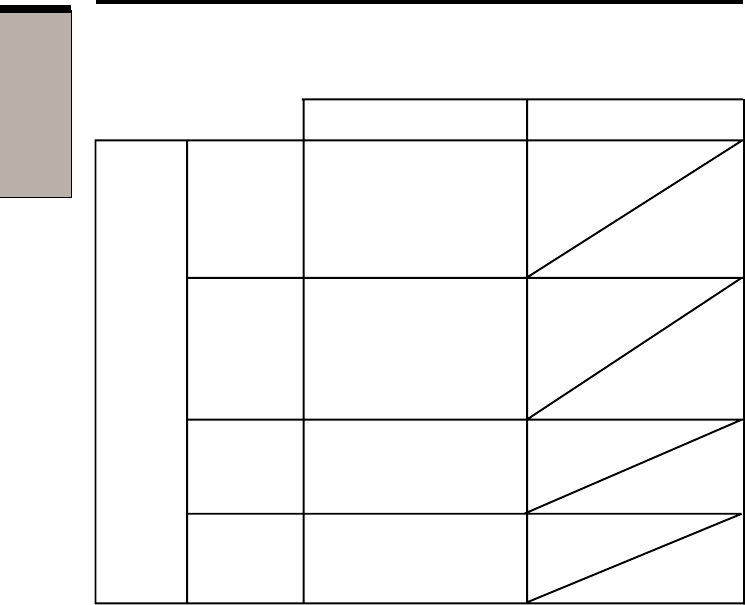
6-2
User's Manual
PP
PP
POWEROWER
OWEROWER
OWER
ANDAND
ANDAND
AND
PP
PP
POWEROWER
OWEROWER
OWER-U-U
-U-U
-UPP
PP
P M M
M M
MODESODES
ODESODES
ODES
Table 6-1 Power conditions continued
Power on Power off (no operation)
AC Battery • Operates
adaptor charge is • LED: Battery off
not above low DC IN off
connected battery
trigger point
Battery • Operates
charge is • LED: Battery
below low flashes in orange
battery DC IN off
trigger point
Battery Computer goes
charge is into resume mode
exhausted and shuts down
No • Cannot operate
battery • LED: Battery off
installed DC IN off

6-3
PP
PP
P
OWEROWER
OWEROWER
OWER
ANDAND
ANDAND
AND
PP
PP
P
OWEROWER
OWEROWER
OWER
-U-U
-U-U
-U
PP
PP
P
M M
M M
M
ODESODES
ODESODES
ODES
Power indicators
The Battery, DC IN and Power indicators on the system indicator panel alert you
to the computer’s operating capability and battery charge status.
Battery indicators
Check the Battery indicator to determine the status of the battery. The following
indicator lights indicate the battery status:
Flashing in orange The battery charge is low. The AC adaptor must be
connected to recharge the battery.
Orange Indicates the AC adaptor is connected and charging the
battery.
Green Indicates the AC adaptor is connected and the battery is
fully charged.
No light Under any other conditions, the indicator does not light.
NOTE: If the battery becomes too hot while it is being charged, the
charge will stop and the battery indicator will go out. When the battery’s
temperature falls to a normal range, charging will resume. This event
occurs regardless of whether the power to the computer is on or off.
DC IN indicator
Check the DC IN indicator to determine the power status with the AC adaptor
connected:
Green Indicates the AC adaptor is connected and supplying
proper power to the computer.
Flashing in orange Indicates a problem with the power supply. Plug the AC
adaptor into another outlet. If it still does not operate
properly, contact TOSHIBA dealer. Refer to 9-19
(TOSHIBA support).
No light Under any other conditions, the indicator does not light.
Power indicators

6-4
User's Manual
PP
PP
POWEROWER
OWEROWER
OWER
ANDAND
ANDAND
AND
PP
PP
POWEROWER
OWEROWER
OWER-U-U
-U-U
-UPP
PP
P M M
M M
MODESODES
ODESODES
ODES
Power indicator
Check the Power indicator to determine the power status.
Green Indicates power is being supplied to the computer and the
computer is turned on.
Blinking in orange Indicates the power was turned off while the computer was
in Resume mode. The indicator turns on for one second
and turns off for two seconds.
No light Under any other conditions, the indicator does not light.
Battery types
The computer has two types of batteries:
❑Battery Pack
❑Real Time Clock (RTC) battery
Battery Pack
When the AC power cord is not connected, the computer’s main power source is a
removable lithium-ion Battery Pack, also referred to in this manual as the main
battery. You can purchase Battery Packs for extended use of the computer away
from an AC power source.
CAUTIONS: 1. The battery pack is a lithium-ion battery, which can
explode if not properly replaced, used, handled or
disposed of. Dispose of the battery as required by local
ordinances or regulations. Use only battery recom-
mended by TOSHIBA as replacements.
2. Do not remove the battery pack while the computer is in
Standby mode. Data is stored in RAMs, so if the com-
puter loses power it will be lost. When the computer is
powered off in Standby mode, and the AC adaptor is not
connected, the battery pack supplies power to maintain
data and program in memory. If the battery pack is
completely discharged, Standby mode does not function
and the computer loses all data in memory.

6-5
PP
PP
P
OWEROWER
OWEROWER
OWER
ANDAND
ANDAND
AND
PP
PP
P
OWEROWER
OWEROWER
OWER
-U-U
-U-U
-U
PP
PP
P
M M
M M
M
ODESODES
ODESODES
ODES
To ensure that the Battery Pack maintains its maximum capacity, operate the
computer on battery power at least once a month until the Battery Pack is fully
discharged. Refer to Extending battery life in this chapter for procedures. If the
computer is continuously operated on AC power, through an AC adaptor for an
extended period, more than a month, the battery may fail to retain a charge. It may
not function efficiently over the expected life of the battery and the Battery LED
may not indicate a low-battery condition.
Real time clock battery
The Real Time Clock (RTC) battery provides power for the internal real time clock
and calendar. It also maintains the system configuration.
If the RTC battery becomes completely discharged, the system loses this data and
the real time clock and calendar stop working. The following message appears when
you turn on the power:
*** Bad RTC battery ***
Check system. Then press [F1] key . . . . . .
CAUTION: The computer’s RTC battery is a lithium ion battery and
should be replaced only by your dealer or by a TOSHIBA service
representative. The battery can explode if not properly replaced, used,
handled or disposed of. Dispose of the battery as required by local
ordinances or regulations.
Care and use of the Battery Pack
The Battery Pack is a vital component of portable computing. Taking proper care of
it will help ensure longer operating time on battery power as well as a longer life for
your Battery Pack. Follow the instructions in this section carefully to ensure safe
operation and maximum performance.
Care and use of the Battery Pack

6-6
User's Manual
PP
PP
POWEROWER
OWEROWER
OWER
ANDAND
ANDAND
AND
PP
PP
POWEROWER
OWEROWER
OWER-U-U
-U-U
-UPP
PP
P M M
M M
MODESODES
ODESODES
ODES
Safety precautions
Mishandling of batteries can cause death, serious injury or property damage.
Carefully observe the following advisories:
Danger: Indicates an imminently hazardous situation, which could result in death
or serious injury, if you do not follow instructions.
Warning: Indicates a potentially hazardous situation, which could result it death or
serious injury, if you do not follow instructions.
Caution: Indicates a potentially hazardous situation, which if not avoided, may
result in moderate or minor injury of property damage.
Note: Provides important information.
Danger
1. Never try to dispose of the battery pack by burning or expose it to a heating
device such as a microwave oven. The battery pack could explode and cause
bodily injury.
2. Never try to disassemble, repair or otherwise tamper with a battery pack. The
battery pack will overheat and ignite. Leakage of caustic alkaline solution or
other electrolytic substances will cause fire or injury, possibly resulting in
death or serious injury.
3. Never short-circuit the battery pack by contacting the terminals with a metal
object. A short-circuit can cause fire or otherwise damage the battery pack and
possibly cause injury. To avoid accidental short-circuit, always wrap the
battery pack in plastic and cover the terminals with electrical tape when storing
or disposing of the battery pack.
4. Never puncture the battery pack with a nail or other sharp object. Never strike
it with a hammer or other object. Never step on it.
5. Never try to charge the battery pack in any manner other than that described
in the user's manual. Never connect the battery pack to a plug socket or to a
automobile's cigarette lighter socket. It may rupture or ignite.
6. Use only the battery pack supplied with the computer or other device or a
battery pack approved by the computer or device's manufacture. Battery packs
have different voltages and terminal polarities. Use of an improper battery
could cause smoke, fire or rupture of the battery pack.

6-7
PP
PP
P
OWEROWER
OWEROWER
OWER
ANDAND
ANDAND
AND
PP
PP
P
OWEROWER
OWEROWER
OWER
-U-U
-U-U
-U
PP
PP
P
M M
M M
M
ODESODES
ODESODES
ODES
Care and use of the Battery Pack
7. Never subject a battery pack to heat, such as storage near a heat source.
Exposure to heat can cause the battery pack to ignite, explode or leak caustic
liquid and cause death or serious injury. It could also fail or malfunction
causing data loss.
8. Never expose the battery pack to abnormal shock, vibration or pressure. The
battery pack's internal protective device will fail, causing it to overheat,
explode, ignite or leak caustic liquids possibly resulting in death or serious
injury.
9. Never let a battery pack become wet. A wet battery pack will overheat, ignite or
rupture possibly resulting in death or serious injury.
Warning
1. Never allow caustic electrolyte fluid leaked from a battery pack to contact your
eyes, skin or clothing. If caustic electrolyte fluid should contact your eyes,
immediately wash your eyes with large amounts of running water and seek
medical attention, to help prevent eye damage. It electrolyte fluid should
contact your skin immediately wash it under running water to prevent rash. If it
contacts your clothes, promptly remove them to prevent the fluid from
contacting your skin or eyes.
2. Immediately turn off the power, disconnect the AC adapter and remove the
battery if any of the following events are observed in the battery pack:
offensive or unusual odor, excessive heat, discoloration or deformation. Never
use the computer again until it has been checked by a TOSHIBA service
provider. It might generate smoke or fire, or the battery pack might rupture.
3. Make sure the battery is securely installed in the computer before attempting
to charge the battery pack. Improper installation could generate smoke or fire,
or cause the battery pack to rupture.
4. Keep the battery pack out or reach of infants and children. It can cause injury.

6-8
User's Manual
PP
PP
POWEROWER
OWEROWER
OWER
ANDAND
ANDAND
AND
PP
PP
POWEROWER
OWEROWER
OWER-U-U
-U-U
-UPP
PP
P M M
M M
MODESODES
ODESODES
ODES
Caution
1. Never continue to use a battery pack after its recharging capacity has become
impaired, or after the display of a warning message indicating that the battery
pack's power is exhausted. Continued use of an exhausted or impaired battery
pack could cause the loss of data.
2. Never dispose of battery packs with normal trash. Bring them to your
TOSHIBA dealer or to another recycling center to save resources and prevent
environmental damage. Cover the terminals with electrical tape to prevent
short-circuits, which could cause the battery pack to ignite or rupture
3. Use only battery pack recommended by TOSHIBA as replacements.
4. Always make sure the battery pack is installed correctly and securely.
Otherwise, a battery pack could fall out and possibly cause injury.
5. Charge the battery pack only in an ambient temperature between 5 and 35
degrees Celsius. Otherwise, the electrolyte solution might leak, battery pack
performance might deteriorate and the battery life might be shortened.
6. Be sure to monitor the remaining battery power. If the battery pack and real
time clock battery discharge completely, Standby and Suspend will not
function and data in memory will be lost. Also, the computer might register an
incorrect time and date. In this case, connect the AC adaptor to recharge the
batteries
7. Never install or remove the battery pack without first turning off the power
and disconnecting the AC adaptor. Never remove the battery pack while the
computer is in Suspend of Standby mode. Data will be lost.
Note
1. Never remove the battery pack while the Wake-up on LAN function is
enabled. Data will be lost. Before you remove a battery pack, disable the
Wake-up on LAN function.
2. To ensure the battery pack maintains maximum capacity, operate the computer
on battery power once a week until the battery pack is fully discharged. Refer
to the section Extending battery life in this chapter for procedures. If the
computer is continuously operated on AC power for an extended period, more
than a week, the battery might fail to retain a charge. It might not function
efficiently over the expected life of the battery pack and the Battery indicator
might not indicate a low-battery condition.
3. After the battery pack is charged, avoid leaving the AC adaptor connected
and the computer turned off for more than a few hours at a time. Continuing to
charge a fully-charged battery pack can damage the battery.

6-9
PP
PP
P
OWEROWER
OWEROWER
OWER
ANDAND
ANDAND
AND
PP
PP
P
OWEROWER
OWEROWER
OWER
-U-U
-U-U
-U
PP
PP
P
M M
M M
M
ODESODES
ODESODES
ODES
Charging the batteries
When the power in the Battery Pack becomes low, the Battery indicator flashes in
orange indicating that only a few minutes of battery power remain. If you continue
to use the computer while the Battery indicator flashes, the computer enables
Resume mode (so you don’t lose data) and automatically turns off.
You must recharge a Battery Pack when it becomes discharged.
Procedures
To recharge a Battery Pack while it is installed in the computer, connect the AC
adaptor to the DC IN socket and plug the other end into a working outlet.
The Battery indicator glows in orange when the battery is being charged.
CAUTION: Use only the computer connected to an AC power source or
the optional TOSHIBA Battery charger to charge the Battery Pack. Do
not attempt to charge the Battery Pack with any other charger.
Time
The following table shows the approximate time required to fully charge a dis-
charged battery.
Charging time (hours)
Battery type Power on Power off
Battery Pack 2.0 to 4.0 or longer 2.0
RTC battery 8.0 Doesn’t charge
NOTE: The charging time when the computer is on is affected by ambient
temperature, the temperature of the computer and how you use the
computer. If you make heavy use of external devices, for example, the
battery might scarcely charge at all during operation. Refer also to the
section Maximizing battery operating time.
Care and use of the Battery Pack

6-10
User's Manual
PP
PP
POWEROWER
OWEROWER
OWER
ANDAND
ANDAND
AND
PP
PP
POWEROWER
OWEROWER
OWER-U-U
-U-U
-UPP
PP
P M M
M M
MODESODES
ODESODES
ODES
Battery charging notice
The battery may not charge right away under the following conditions:
❑The battery is extremely hot or cold. If the battery is extremely hot, it might not
charge at all. Also, to ensure the battery charges to its full capacity, charge the
battery at room temperature of 10° to 30°C (50° to 86°F).
❑The battery is nearly completely discharged. Leave the AC adaptor connected
for a few minutes and the battery should begin charging.
The Battery indicator may show a rapid decrease in battery operating time when
you try to charge a battery under the following conditions:
❑The battery has not been used for a long time.
❑The battery has completely discharged and been left in the computer for a long
time.
❑A cool battery is installed in a warm computer.
In such case, follow the steps below.
1. Fully discharge the battery by leaving it in the computer with the power on
until the power automatically shuts off.
2. Plug in the AC adaptor.
3. Charge the battery until the Battery indicator glows green.
Repeat the steps two or three times until the battery recovers normal capacity.
NOTE: Leaving the AC adaptor connected will shorten battery life.
At least once a month, run the computer on battery power until the
battery is fully discharged, then recharge the battery.
Monitoring battery capacity
Remaining battery power can be monitored in the Power Save Modes window in
Power Saver of Windows.
NOTES: 1. Wait at least 16 seconds after turning on the computer before
trying to monitor the remaining operating time. The com-
puter needs this time to check the battery’s remaining
capacity and to calculate the remaining operating time,
based on the current power consumption rate and remaining
battery capacity. The actual remaining operating time may
differ slightly from the calculated time.

6-11
PP
PP
P
OWEROWER
OWEROWER
OWER
ANDAND
ANDAND
AND
PP
PP
P
OWEROWER
OWEROWER
OWER
-U-U
-U-U
-U
PP
PP
P
M M
M M
M
ODESODES
ODESODES
ODES
Replacing the Battery Pack
2. With repeated discharges and recharges, the battery’s
capacity will gradually decrease. Therefore, an often
used, older battery will not operate for as long as a new
battery even when both are fully charged. In this case,
TOSHIBA Power Saver will indicate a 100% charge for
both the old and new battery, but the displayed estimated
time remaining will be shorter for the older battery.
Maximizing battery operating time
A battery’s usefulness depends on how long it can supply power on a single
charge.
How long the charge lasts in a battery depends on:
❑How you configure the computer, for example, whether you enable battery-
power saving options. The computer provides a battery save mode to con-
serve battery power. This mode has the following options:
• Processing speed
• Display auto off
• HDD auto off
• System auto off
• LCD Brightness
❑How often and how long you use the hard disk and the diskette drive.
❑How much charge the battery contained to begin with.
❑How you use optional devices, such as a PC card, to which the battery
supplies power.
❑Enabling Resume mode conserves battery power if you are frequently turning
the computer off and on.
❑Where you store your programs and data.
❑Closing the display when you are not using the keyboard saves power.
❑Operating time decreases at low temperatures.
❑The condition of the battery terminals. Make sure the battery terminals stay
clean by wiping them with a clean dry cloth before installing the Battery Pack.

6-12
User's Manual
PP
PP
POWEROWER
OWEROWER
OWER
ANDAND
ANDAND
AND
PP
PP
POWEROWER
OWEROWER
OWER-U-U
-U-U
-UPP
PP
P M M
M M
MODESODES
ODESODES
ODES
Retaining data with power off
When you turn off your computer with fully charged batteries, the batteries retain
data for the following approximate time periods:
Battery pack (3600 mAh) 2 days (Resume mode)
25 days (Boot mode)
RTC battery 1 month
Extending battery life
To maximize the life of your Battery Pack:
❑At least once a month, disconnect the computer from a power source and
operate it on battery power until the Battery Pack fully discharges. Before
doing so, follow the steps below.
1. Turn off the computer’s power.
2. Disconnect the AC adaptor and turn on the computer’s power. If it does not
turn on go to step 4.
3. Operate the computer on battery power for five minutes. If the Battery Pack
has at least five minutes of operating time, continue operating until the
Battery Pack is fully discharged. If the Battery indicator flashes or there is
some other warning to indicate a low battery, go to step 4.
4. Connect the AC adaptor to the computer and the power cord to a power
outlet. The DC IN indicator should glow in green, and the Battery should
glow in orange to indicate that the Battery Pack is being charged. If the DC
IN indicator does not glow, power is not being supplied. Check the connec-
tions for the AC adaptor and power cord.
5. Charge the Battery Pack until the Battery indicator glows in green.
❑If you have spare Battery Packs, rotate their use.
❑If you will not be using the system for an extended period, more than one
month, remove the Battery Pack.
❑Disconnect the AC adaptor when the battery is fully charged. Overcharging
makes the battery hot and shortens life.
❑If you are not going to use the computer for more than eight hours, disconnect
the AC adaptor.
❑Store spare Battery Packs in a cool dry place out of direct sunlight.

6-13
PP
PP
P
OWEROWER
OWEROWER
OWER
ANDAND
ANDAND
AND
PP
PP
P
OWEROWER
OWEROWER
OWER
-U-U
-U-U
-U
PP
PP
P
M M
M M
M
ODESODES
ODESODES
ODES
Replacing the Battery Pack
When the Battery Pack reaches the end of its operating life you will need to install a
new one. The life of the Battery Pack is generally about 500 recharges. If the
Battery indicator flashes in orange shortly after fully recharging the battery, the
Battery Pack needs to be replaced.
You might also replace a discharged Battery Pack with a charged spare when you
are operating your computer away from an AC power source. This section explains
how to remove and install Battery Packs.
CAUTION: Change the Battery Pack in PC mode. Do not change the
Battery Pack in Tablet PC mode.
Removing the Battery Pack
To replace a discharged Battery Pack, follow the steps below.
CAUTIONS: 1. When handling battery packs, be careful not to short
circuit the terminals. Also do not drop, hit or otherwise
apply impact; do not scratch or break the casing and do
not twist or bend the battery pack
2. Do not remove the battery pack while the computer is in
Standby mode. Data is stored in RAM, so if the computer
loses power it will be lost.
3. In Hibernation mode, data will be lost if you remove the
battery or disconnect the AC adaptor before the save is
completed. Wait for the Disk indicator to go out.
1. Save your work.
2. Turn the computer’s power off. Make sure the Power indicator is off.
3. Remove all cables connected to the computer.
4. Turn the computer upside down with the front side of the computer facing to
you.
5. Release the battery lock.
6. Confirm that the Battery lock indicator shows red.
7. Push the battery release lever to the left to free the battery pack for removal.
Replacing the Battery Pack
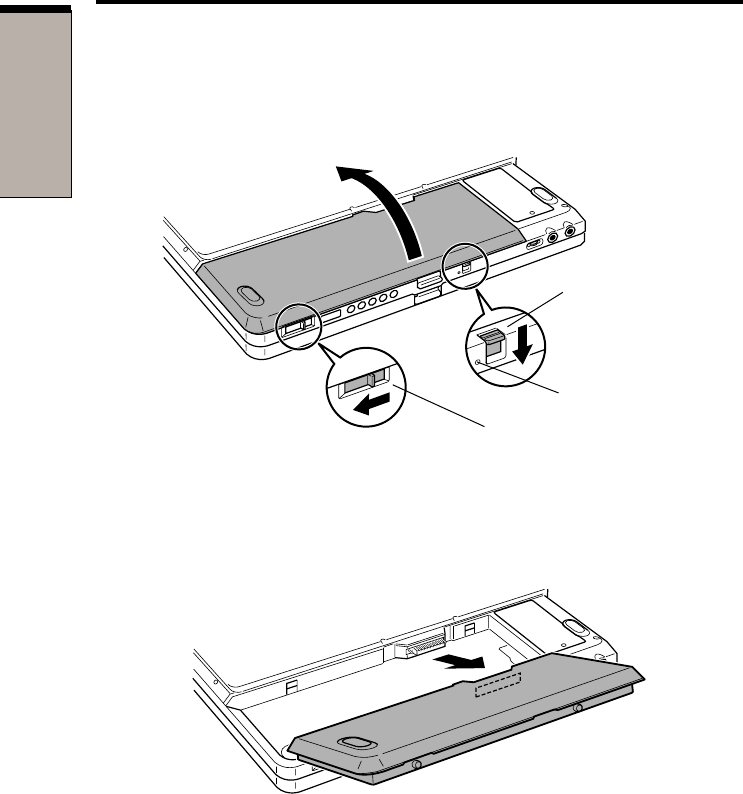
6-14
User's Manual
PP
PP
POWEROWER
OWEROWER
OWER
ANDAND
ANDAND
AND
PP
PP
POWEROWER
OWEROWER
OWER-U-U
-U-U
-UPP
PP
P M M
M M
MODESODES
ODESODES
ODES
CAUTION: For environmental reasons, do not throw away a spent
Battery Pack. Please return spent Battery Packs to your TOSHIBA
dealer.
B
ATTERY LOCK
B
ATTERY RELEASE
LEVER
B
ATTERY LOCK
INDICATOR
Figure 6-1 Removing the Battery Pack (1)
Figure 6-2 Removing the Battery Pack (2)
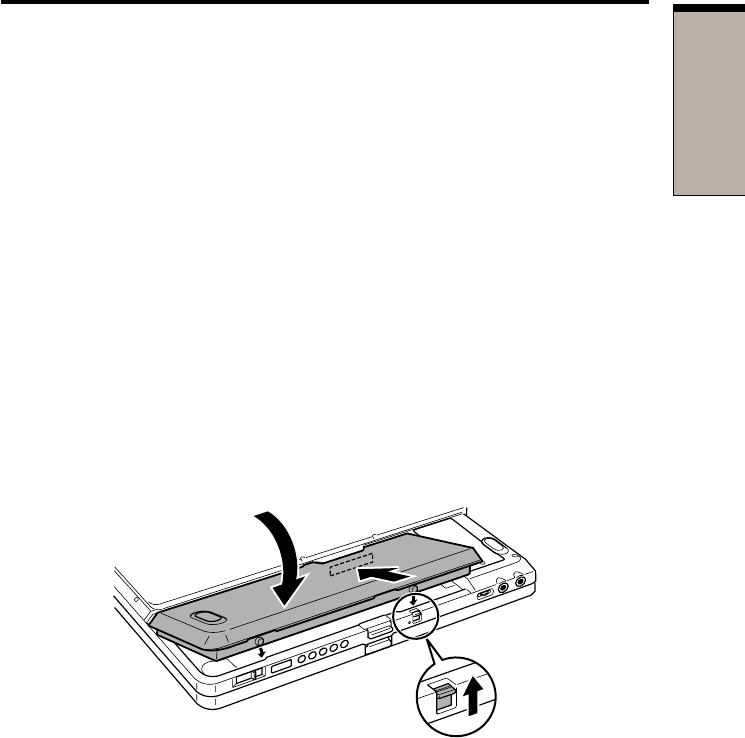
6-15
PP
PP
P
OWEROWER
OWEROWER
OWER
ANDAND
ANDAND
AND
PP
PP
P
OWEROWER
OWEROWER
OWER
-U-U
-U-U
-U
PP
PP
P
M M
M M
M
ODESODES
ODESODES
ODES
Installing the Battery Pack
To install a Battery Pack, follow the steps below.
CAUTION: The Battery Pack is a lithium-ion battery, which can explode
if not properly replaced, used, handled or disposed of. Dispose of the
battery as required by local ordinances or regulations. Use only battery
recommended by TOSHIBA as replacements.
1. Be sure the computer’s power is off and all cables are disconnected.
2. Insert the Battery Pack.
3. Secure the battery lock.
CAUTION: Confirm the battery lock indicator is not red. Then turn the
computer.
Red: unlocked No color: locked
Figure 6-3 Installing the Battery Pack
Installing the Battery Pack

6-16
User's Manual
PP
PP
POWEROWER
OWEROWER
OWER
ANDAND
ANDAND
AND
PP
PP
POWEROWER
OWEROWER
OWER-U-U
-U-U
-UPP
PP
P M M
M M
MODESODES
ODESODES
ODES
Starting the computer by password
If you registered a password as user, you must enter it to start the computer. For
more information about how to set a password, refer to Chapter 7, HW Setup and
Passwords.
To start up the computer with the password, follow these steps:
1. Turn on the power as described in Chapter 3, Getting Started.
2. Enter the password.
3. Press Enter.
NOTE: If you enter the password incorrectly three times in a row, the
computer shuts off. In this case, you must turn the computer back on to
retry password entry.
Tablet PC mode
You can enter the password through the display panel when the computer is in the
Tablet PC mode.
Figure 6-4 Virtual keyboard
❑A virtual keyboard is displayed on the screen only when the computer is
booted in Tablet PC mode.
❑Tapping the virtual keyboard sounds beep.

6-17
PP
PP
P
OWEROWER
OWEROWER
OWER
ANDAND
ANDAND
AND
PP
PP
P
OWEROWER
OWEROWER
OWER
-U-U
-U-U
-U
PP
PP
P
M M
M M
M
ODESODES
ODESODES
ODES
Power-up modes
The computer has the following power-up modes:
❑Boot: Computer shuts down without saving data. Always save your work
before you turn the computer off in boot mode.
❑Hibernation: Data in memory is saved to the hard disk.
❑Standby: Data is maintained in the computer's main memory.
NOTE: Refer also to the sections Turning on the power and Turning off
the power in Chapter 3, Getting Started.
Windows utilities
You can specify the setting in TOSHIBA Power Saver.
Hotkeys
You can use hotkeys Fn + F3 to enter Standby mode and Fn + F4 to enter Hiberna-
tion. See Chapter 5, Keyboard for details.
Panel power off
You can set up your computer so that power turns off automatically when you close
the display panel. When you open the panel, power turns on in Standby or
Hibernation mode but not in boot mode.
NOTE: If the panel power off function is enabled and you use Shut down
Windows, do not close the display until the shut down function is
completed.
System Auto Off
This feature turns the system off automatically if the computer is not used for a set
duration. The system shuts down in Standby mode or Hibernation mode in
Windows.
However, when the system is running in the Tablet PC mode, it does not shut down
even if the display panel is closed.
Panel power off

6-18
User's Manual
PP
PP
POWEROWER
OWEROWER
OWER
ANDAND
ANDAND
AND
PP
PP
POWEROWER
OWEROWER
OWER-U-U
-U-U
-UPP
PP
P M M
M M
MODESODES
ODESODES
ODES

HW SHW S
HW SHW S
HW S
ETUPETUP
ETUPETUP
ETUP
ANDAND
ANDAND
AND
PP
PP
P
ASSWORDSASSWORDS
ASSWORDSASSWORDS
ASSWORDS
Chapter 7
HW Setup and Passwords
HW Setup ............................................................................................ 7-1
Accessing HW Setup .......................................................................... 7-1
HW Setup window............................................................................... 7-1
Supervisor password .......................................................................... 7-9

HW SHW S
HW SHW S
HW SETUPETUP
ETUPETUP
ETUP
ANDAND
ANDAND
AND
PP
PP
PASSWORDSASSWORDS
ASSWORDSASSWORDS
ASSWORDS

7-1
HW SHW S
HW SHW S
HW S
ETUPETUP
ETUPETUP
ETUP
ANDAND
ANDAND
AND
PP
PP
P
ASSWORDSASSWORDS
ASSWORDSASSWORDS
ASSWORDS
Chapter 7
HW Setup and Passwords
This chapter explains how to use TOSHIBA HW Setup program to configure your
computer and how to set passwords.
HW Setup
TOSHIBA HW Setup lets you configure settings for display, CPU, boot priority,
USB, LAN, general, password and device configuration.
NOTE: If the supervisor password is set, access to the TOSHIBA HW Setup
program can be prevented when the user password is used to log on to the
computer.
Accessing HW Setup
To run HW Setup, click start, click Control Panel, click Printers and Other
Hardware and select TOSHIBA HW Setup.
HW Setup window
The HW Setup window contains the following tabs: display, CPU, boot priority,
USB, LAN, general, password, device config.

User's Manual
7-2
HW SHW S
HW SHW S
HW SETUPETUP
ETUPETUP
ETUP
ANDAND
ANDAND
AND
PP
PP
PASSWORDSASSWORDS
ASSWORDSASSWORDS
ASSWORDS
General
This window displays the BIOS version and contains two buttons: Default and
About.
Default Return all HW Setup values to the factory settings.
About Display the HW Setup version..
Setup
This field displays BIOS Version and date.
Password
User Password
This option allows you to set or reset the user password for power on.
Not Registered Change or remove the password. (Default)
Registered Set the password. A dialogue box will appear to let you set
the password.
To enter a user password:
1. Select Registered to display the following prompt:
Enter Password:
2. Enter a password of up to 10 characters. The character string you enter is
displayed as a string of asterisks. For example, if you enter a password
consisting of four characters, the display is shown as:
Enter Password: ****
NOTE: If you click the OK button before entering the password, Not
registered will appear on the display.
3. Click the OK button. The following message appears, allowing you to verify
the password.
Verify Password:

7-3
HW SHW S
HW SHW S
HW S
ETUPETUP
ETUPETUP
ETUP
ANDAND
ANDAND
AND
PP
PP
P
ASSWORDSASSWORDS
ASSWORDSASSWORDS
ASSWORDS
4. If character strings match, the password is registered and the display changes
to:
Registered
If they do not match, the following message appears. You must repeat from
step 1.
Entry Error!!!
To delete a user password:
1. Select Not Registered to display the following prompt:
Enter Password:
2. Enter the currently registered password. The character string you enter is
displayed as a string of asterisks.
Enter Password: ****
NOTE: If you click the OK button before entering the password, Reg-
istered will appear on the display.
3. Click the OK button. If the character string you enter matches the registered
password, the password option is reset and the display changes to:
Not registered
If they do not match, the following message appears. You must repeat step 1.
Incorrect Password!!!
NOTE: If you enter the password incorrectly three times, the screen will
display:
Sorry, access denied!!! Powering off your
machine then powering it back on again are
required to regain access.
You will not be able to access the password option in the HW Setup. In
this case you must turn the power off and back on to retry the procedure.
4. Follow the same procedures described in the earlier section, How to set the
password, to set a new user password.
Refer to the Supervisor password section later in this chapter for details on setting
the supervisor password.
HW Setup
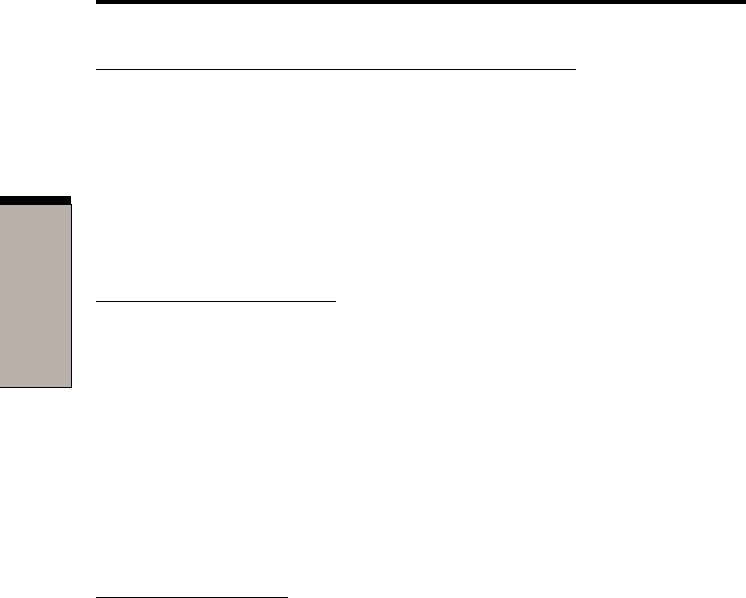
User's Manual
7-4
HW SHW S
HW SHW S
HW SETUPETUP
ETUPETUP
ETUP
ANDAND
ANDAND
AND
PP
PP
PASSWORDSASSWORDS
ASSWORDSASSWORDS
ASSWORDS
Entering User Password in Tablet PC mode
You can enter the user password through the virtual keyboard displayed on the
screen when in Tablet PC mode. The procedure of entering the password is almost
the same to the one in PC mode.
Tap the key on the virtual keyboard with pen (stylus) instead of typing the real
keyboard to enter the password.
Device Config
Device Configuration
This option lets you set the device configuration.
All Devices BIOS sets all devices.
Setup by OS Operating system sets devices that it can control. (Default)
Display
This tab lets you customize your computer’s display settings for either the internal
LCD screen or for an external monitor.
Power On Display
Lets you set the display to be used when the computer is booted.
Auto-Selected Selects an external monitor if one is connected. Other-
wise, it selects the internal LCD. (Default)
Simultaneous Selects both the internal LCD and external monitor for
simultaneous display.

7-5
HW SHW S
HW SHW S
HW S
ETUPETUP
ETUPETUP
ETUP
ANDAND
ANDAND
AND
PP
PP
P
ASSWORDSASSWORDS
ASSWORDSASSWORDS
ASSWORDS
HW Setup
CPU
Dynamic CPU Frequency Mode
This option lets you choose from the following settings:
Dynamically Switchable CPU power consumption and clock speed
automatic switching function is enabled.
When the computer is in use, CPU operation
is automatically switched when necessary.
(Default)
Always High CPU power consumption and clock speed
automatic switching function is disabled. The
CPU always runs at its fastest speed.
Always Low CPU power consumption and clock speed
automatic switching function is disabled. The
CPU always runs at low power consumption
and low speed.

User's Manual
7-6
HW SHW S
HW SHW S
HW SETUPETUP
ETUPETUP
ETUP
ANDAND
ANDAND
AND
PP
PP
PASSWORDSASSWORDS
ASSWORDSASSWORDS
ASSWORDS
Boot Priority
Boot Priority Options
This option sets the priority for booting the computer. Select from the following
settings:
HDD −> −>
−> −>
−> FDD −> −>
−> −>
−> CD-ROM −> −>
−> −>
−> LAN The computer looks for bootable files in
the following order: HDD, diskette drive,
CD-ROM* and LAN. (Default)
FDD −> −>
−> −>
−> HDD −> −>
−> −>
−> CD-ROM −> −>
−> −>
−> LAN The computer looks for bootable files in
the following order: diskette drive, HDD,
CD-ROM* and LAN.
HDD −> −>
−> −>
−> CD-ROM −> −>
−> −>
−> LAN −> −>
−> −>
−> FDD The computer looks for bootable files in
the following order: HDD, CD-ROM*, LAN
and diskette drive.
FDD −> −>
−> −>
−> CD-ROM −> −>
−> −>
−> LAN −> −>
−> −>
−> HDD The computer looks for bootable files in
the following order: diskette drive, CD-
ROM*, LAN and HDD.
CD-ROM −> −>
−> −>
−> LAN −> −>
−> −>
−> HDD −> −>
−> −>
−> FDD The computer looks for bootable files in
the following order: CD-ROM*, LAN,
HDD, diskette drive.
CD-ROM −> −>
−> −>
−> LAN −> −>
−> −>
−> FDD −> −>
−> −>
−> HDD The computer looks for bootable files in
the following order: CD-ROM*, LAN,
diskette drive and HDD.
* The CD-ROM is available only with the optional optical disk drive.
You can override the settings and manually select a boot device in one of the
following two ways.
❑Press one of the following keys while the computer is booted:
USelects the USB diskette drive.
NSelects the Network.
1Selects the primary HDD.
PSelects the PC card HDD.
CSelects the CD-ROM*.
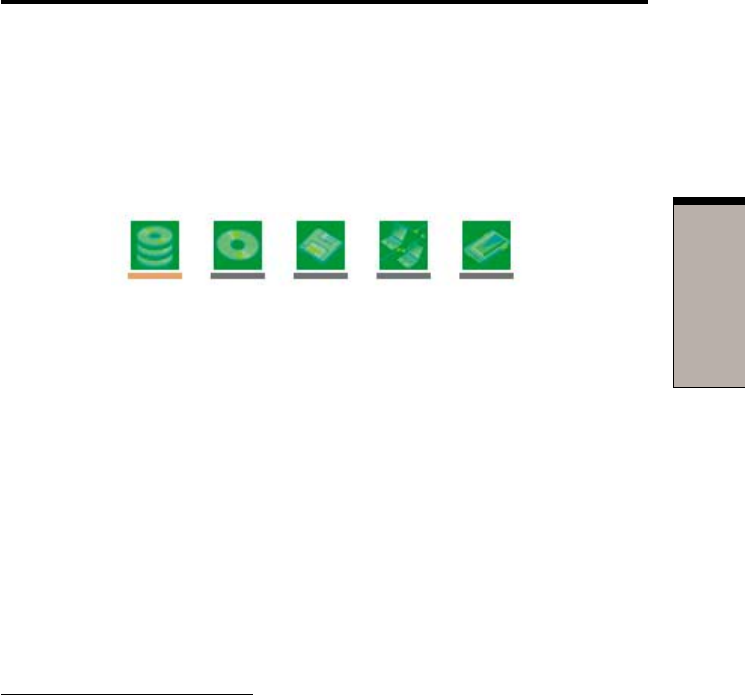
7-7
HW SHW S
HW SHW S
HW S
ETUPETUP
ETUPETUP
ETUP
ANDAND
ANDAND
AND
PP
PP
P
ASSWORDSASSWORDS
ASSWORDSASSWORDS
ASSWORDS
HW Setup
This procedure does not affect the settings.
❑Use hot keys.
1. Hold down F12 and boot the computer.
2. The following menu will be displayed with the following icons: Built-in HDD,
CD-ROM, FDD, Network (LAN), PCA (ATA) card boot.
NOTE: A bar will appear only under the selected device.
3. Use the left/right cursor keys to highlight the boot device you want and press
Enter.
NOTES: 1. If a supervisor password is set, the menu above does not
appear when you use the user password to start the
computer.
2. The selection method above does not change the boot
priority settings in HW Setup.
3. If you press a key other than one of those above or if the
selected device is not installed, the system will boot according
to the current setting in HW Setup.
Network Boot Protocol
This feature sets the protocol to remotely boot from the network.
[PXE] Sets PXE as the protocol. (Default)
[RPL] Sets RPL as the protocol.
NOTES: 1. PC card HDD boot is supported only by the PC card slot
on the computer. Support is guaranteed only for TOSHIBA
PC card HDDs.
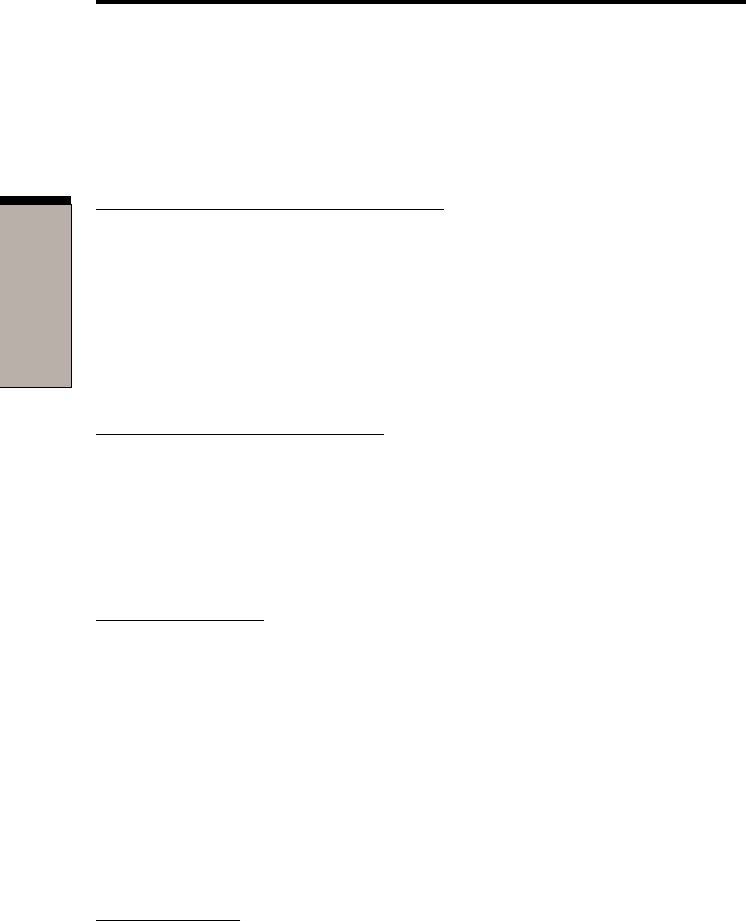
User's Manual
7-8
HW SHW S
HW SHW S
HW SETUPETUP
ETUPETUP
ETUP
ANDAND
ANDAND
AND
PP
PP
PASSWORDSASSWORDS
ASSWORDSASSWORDS
ASSWORDS
2. When you assign a PC card HDD top priority, “PC” is not
displayed. However, the PC card HDD takes the position of
HDD in the Boot Priority Options list above.
USB
USB KB/Mouse Legacy Emulation
Use this option to enable or disable USB KB/Mouse Legacy Emulation. If your
operating system does not support USB, you can still use a USB mouse and
keyboard by setting the USB KB/Mouse Legacy Emulation item to
Enabled.
Enabled Enables the USB KB/Mouse Legacy Emulation. (Default)
Disabled Disables the USB KB/Mouse Legacy Emulation.
USB-FDD Legacy Emulation
Use this option to enable or disable USB-FDD Legacy Emulation.
Enabled Enables the USB-FDD Legacy Emulation. (Default)
Disabled Disables the USB-FDD Legacy Emulation.
LAN
Wake-up on LAN
This features lets the computer’s power be turned on when it receives a wake-up
signal from the LAN.
Enabled Enables Wake-up on LAN.
Disabled Disables Wake-up on LAN. (Default)
CAUTION: Do not install or remove an optional memory module while
Wake-up on LAN is enabled.
NOTE: Wake-up on LAN does not work without the AC adaptor. Leave it
connected, if you are using this feature.
Built-in LAN
Enabled Enables built-in LAN functions. (Default)
Disabled Disables built-in LAN functions.

7-9
HW SHW S
HW SHW S
HW S
ETUPETUP
ETUPETUP
ETUP
ANDAND
ANDAND
AND
PP
PP
P
ASSWORDSASSWORDS
ASSWORDSASSWORDS
ASSWORDS
Supervisor password
Refer to the readme file of the Supervisor Password Utility for instructions on
setting the Supervisor Password.
The path to the readme file is C:\Program Files\TOSHIBA\Windows
Utilities\SVPWTool. In the SVPWTool directory, open the readme.htm
file.
Supervisor password

User's Manual
7-10
HW SHW S
HW SHW S
HW SETUPETUP
ETUPETUP
ETUP
ANDAND
ANDAND
AND
PP
PP
PASSWORDSASSWORDS
ASSWORDSASSWORDS
ASSWORDS

OO
OO
O
PTIONALPTIONAL
PTIONALPTIONAL
PTIONAL
D D
D D
D
EVICESEVICES
EVICESEVICES
EVICES
Chapter 8
Optional Devices
PC cards .............................................................................................. 8-2
Installing a PC card ............................................................................. 8-2
Removing a PC card ........................................................................... 8-4
SD cards .............................................................................................. 8-5
Installing an SD card ........................................................................... 8-5
Removing an SD card.......................................................................... 8-6
Compact Flash .................................................................................... 8-7
Installing a Compact Flash module ..................................................... 8-7
Removing a Compact Flash module .................................................... 8-8
Memory expansion ........................................................................... 8-10
Remocing and installing memory module in Slot A............................ 8-11
Installing memory module in Slot B ................................................... 8-15
Removing memory module in Slot B.................................................. 8-17
Battery Pack...................................................................................... 8-18
Universal AC Adaptor ....................................................................... 8-18
Battery Charger ................................................................................ 8-18
USB FDD Kit ...................................................................................... 8-19
External monitor ............................................................................... 8-19
Security lock ..................................................................................... 8-20

OO
OO
OPTIONALPTIONAL
PTIONALPTIONAL
PTIONAL D D
D D
D EVICESEVICES
EVICESEVICES
EVICES

8-1
OO
OO
O
PTIONALPTIONAL
PTIONALPTIONAL
PTIONAL
D D
D D
D
EVICESEVICES
EVICESEVICES
EVICES
Chapter 8
Optional Devices
Optional devices can expand the computer’s capabilities and its versatility. The
following optional devices are available from your TOSHIBA dealer:
Cards/memory
❑PC cards
❑SD cards
❑Compact Flash
❑Memory module
Power devices
❑Battery Pack
❑Universal AC Adaptor
❑Battery Charger
Peripheral devices
❑USB FDD Kit
❑External monitor
Other
❑Security lock

8-2
User’s Manual
OO
OO
OPTIONALPTIONAL
PTIONALPTIONAL
PTIONAL D D
D D
DEVICESEVICES
EVICESEVICES
EVICES
PC cards
The computer is equipped with a PC card expansion slot that can accommodate one
5 mm Type II card. Any PC card that meets industry standards (manufactured by
TOSHIBA or other vendor) can be installed. The slots support 16-bit PC cards,
including PC card 16’s multifunction card and CardBus PC cards.
CardBus supports the new standard of 32-bit PC cards. The bus provides superior
performance for the greater demands of multimedia data transmission.
Installing a PC card
The PC card connector is located on the left side of the computer.
Windows’ not-installed feature lets you install PC cards while the computer’s power
is on.
NOTES: 1. Do not install a PC card while the computer is in standby
or hibernation mode. Some cards might not work properly.
2. An HDD or CD-ROM connected to a 16-bit PC card, might
affect the performance of the computer’s sound system and
data transmission, including slower transmission speeds
and dialing errors.
To install a PC card, follow the steps below:
1. Insert the PC card.
2. Press gently to ensure a firm connection.
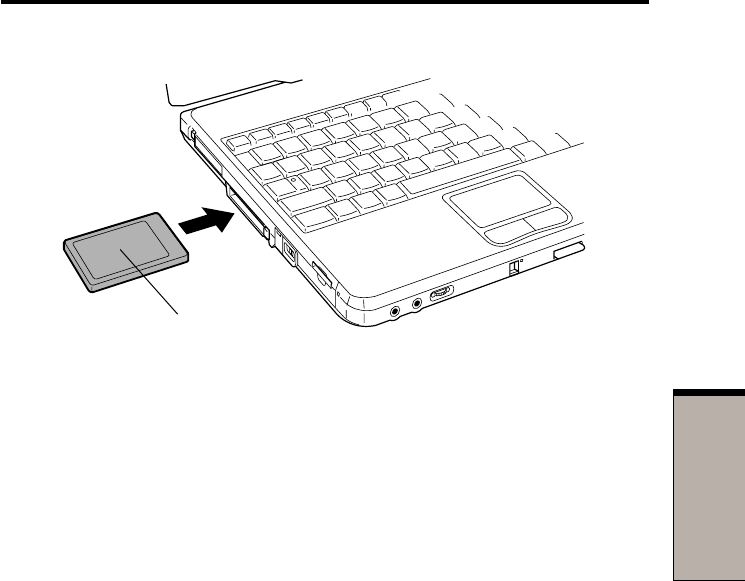
8-3
OO
OO
O
PTIONALPTIONAL
PTIONALPTIONAL
PTIONAL
D D
D D
D
EVICESEVICES
EVICESEVICES
EVICES
PC cards
PC
CARD
Figure 8-1 Inserting the PC card
After installing the card, refer to the card’s manual and check the configuration in
Windows to make sure it is appropriate for your card.
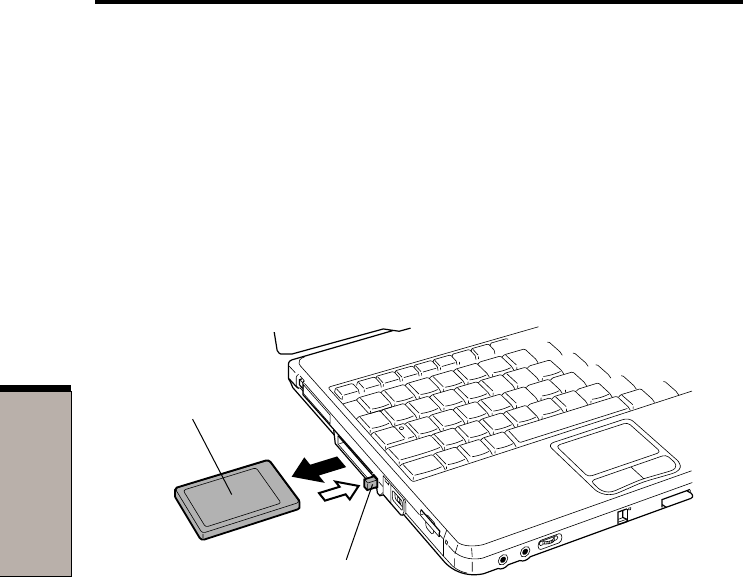
8-4
User’s Manual
OO
OO
OPTIONALPTIONAL
PTIONALPTIONAL
PTIONAL D D
D D
DEVICESEVICES
EVICESEVICES
EVICES
Removing a PC card
To remove the PC card, follow the steps below:
1. Click the Safety Remove Hardware icon on the Task Bar.
2. Click PC card.
3. Press the PC card eject button to extend it.
4. Press the extended eject button to pop the card out slightly.
5. Pinch the PC card and draw it out.
PC
CARD
E
JECT BUTTON
Figure 8-2 Removing the PC card
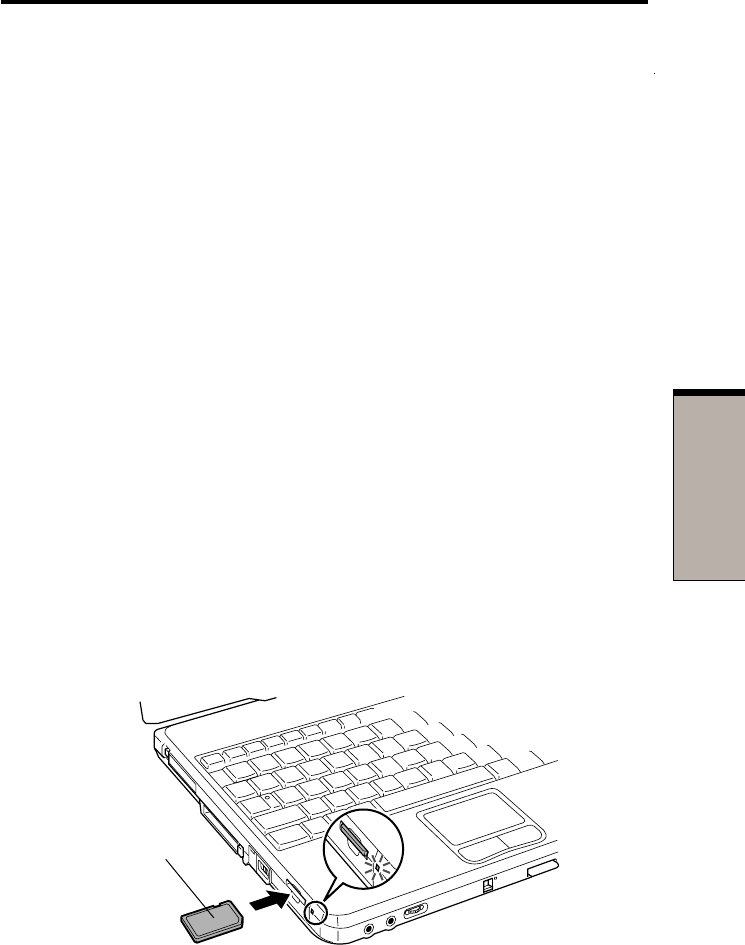
8-5
OO
OO
O
PTIONALPTIONAL
PTIONALPTIONAL
PTIONAL
D D
D D
D
EVICESEVICES
EVICESEVICES
EVICES
SD cards
The computer is equipped with an SD card slot that can accommodate Secure
Digital flash memory cards with various capacities SD cards let you easily transfer
data from devices, such as digital cameras and Personal Digital Assistants, that use
SD card flash-memory. The cards have a high level of security and copy protection
features.
The slot cannot accommodate MultiMedia cards.
CAUTION: Keep foreign objects out of the SD card slot. A pin or similar
object can damage the computer’s circuitry.
NOTE: SD memory cards comply with SDMI (Secure Digital Music
Initiative), which is a technology adapted to prevent unlawful copy of
playback of digital music. For this reason, you cannot copy or playback
protected material an another computer or other device. You may not use
the reproduction of any copyrighted material except for your personal
enjoyment.
Installing an SD card
To install an SD card, follow the steps below.
1. Insert the SD card.
2. Press gently to ensure a firm connection.
SD
CARD
Figure 8-3 Inserting an SD card
CAUTION: Make sure the SD card is oriented properly before you insert
it.
SD cards
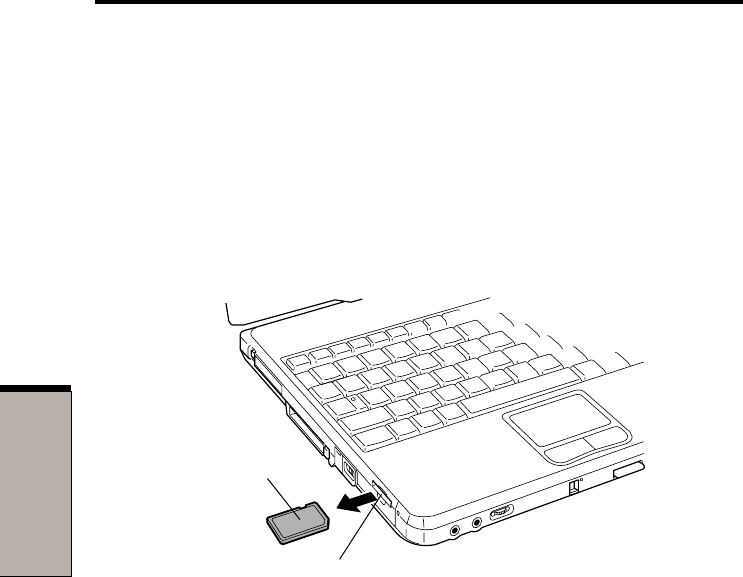
8-6
User’s Manual
OO
OO
OPTIONALPTIONAL
PTIONALPTIONAL
PTIONAL D D
D D
DEVICESEVICES
EVICESEVICES
EVICES
Removing an SD card
To remove an SD card, follow the steps below:
1. Click the Safety Remove Hardware icon on the Task Bar.
2. Point to SD card and click.
3. Push in the card and release it to pop the card out slightly.
4. Pinch the SD card and draw it out.
SD CARD
SD CARD INDICATOR
Figure 8-4 Removing an SD card
CAUTION: Make sure the SD card indicator is out before you remove
the card or turn off the computer’s power. If you remove the card or turn
off the power while the computer is accessing the card you may lose data
or damage the card.
SD card care
CAUTION: Set the write-protect switch to the lock position, if you do not
want to record data.
1. Do not write in an SD card if the battery power is low. Low power could affect
writing accuracy.
2. Do not remove an AD card while read/write is in progress.
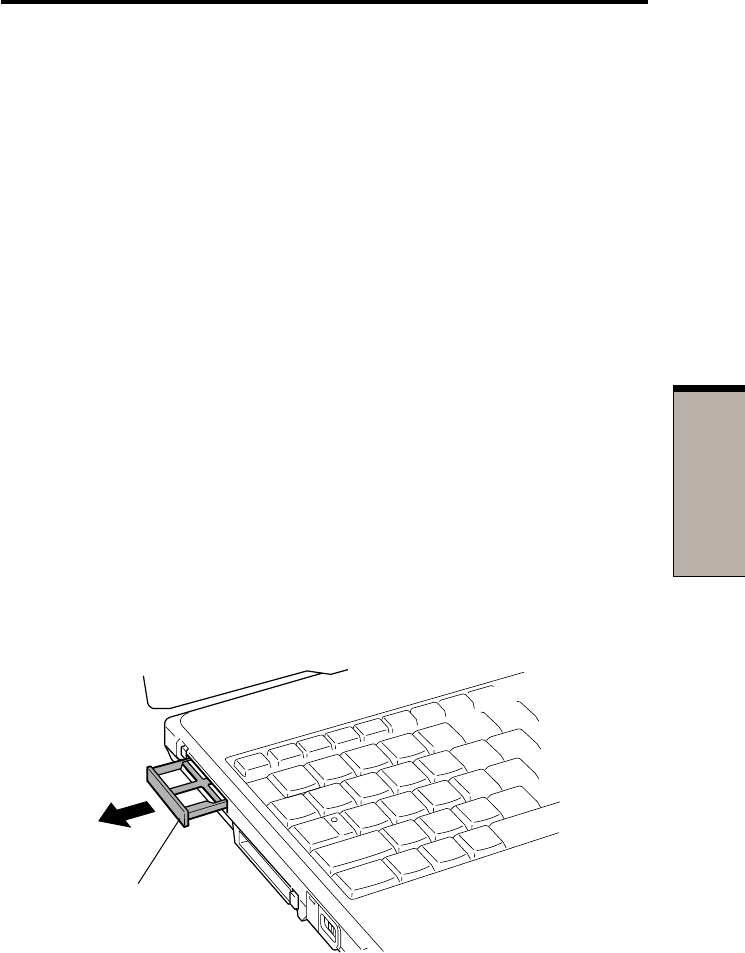
8-7
OO
OO
O
PTIONALPTIONAL
PTIONALPTIONAL
PTIONAL
D D
D D
D
EVICESEVICES
EVICESEVICES
EVICES
Compact Flash
3. The SD card is designed so that it can be installed only one way. Do not try
to force the card into the slot.
4. Do not leave an SD card partially inserted in the slot. Press the SD card until
you hear it click into place.
5. Do not twist or bend SD cards.
6. Do not expose SD cards to liquids or store in humid areas or lay media close to
containers of liquid
7. After using an SD card, return it to its case.
8. Do not touch the metal part or expose it to liquids or let it get dirty.
Compact Flash
This slot accommodates Compact Flash with various memory capacities. You
cannot use Compact Flash that does not conform to CFA specifications. You can
also use Compact Flash I/O module other than memory module
Installing a Compact Flash module
To install a Compact Flash module, follow the steps below.
1. Remove the dummy card from the slot.
2. Insert the Compact flash into the slot.
3. Press gently to ensure a firm connection
D
UMMY CARD
Figure 8-5 Removing the dummy card
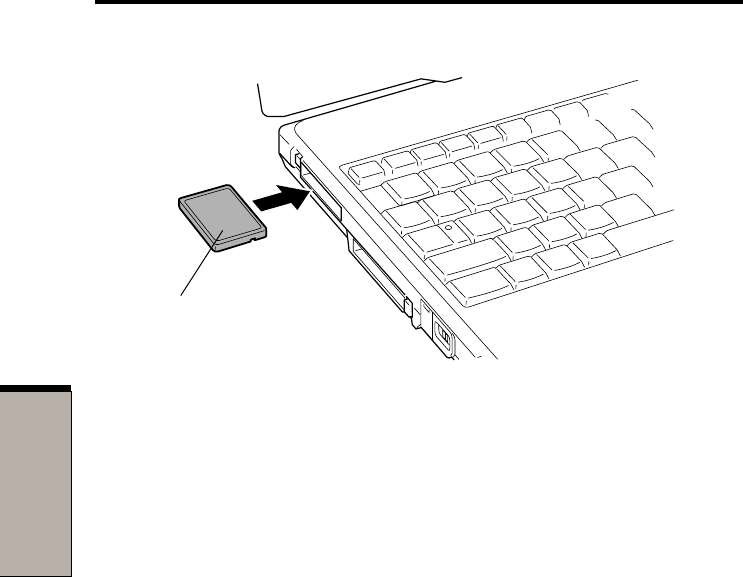
8-8
User’s Manual
OO
OO
OPTIONALPTIONAL
PTIONALPTIONAL
PTIONAL D D
D D
DEVICESEVICES
EVICESEVICES
EVICES
C
OMPACT FLASH
.
Figure 8-6 Inserting a Compact Flash module
Removing a Compact Flash module
To remove a Compact Flash, follow the steps below.
1. Right click (right button of the Touch Pad) on the Compact Flash drive’s icon
and select eject from the pop-up menu.
2. Press the Compact Flash eject button to extend it.
3. Press the extended eject button to pop the compact Flash out slightly.
4. Pinch and pull out the Compact Flash.
5. Insert a dummy card into the slot.
CAUTION: Make sure the Compact Flash indicator is out before you
remove the Compact Flash or turn off the computer’s power. If you
remove the Compact Flash or turn off the power while the computer is
accessing the Compact Flash you may lose data or damage the Compact
Flash.
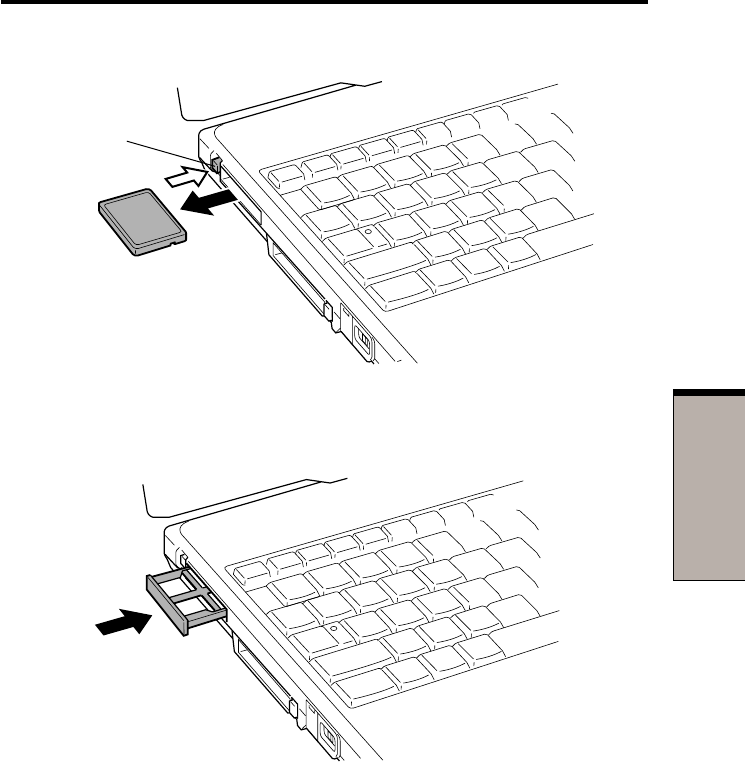
8-9
OO
OO
O
PTIONALPTIONAL
PTIONALPTIONAL
PTIONAL
D D
D D
D
EVICESEVICES
EVICESEVICES
EVICES
Compact Flash
C
OMPACT FLASH
EJECT BUTTON
.
Figure 8-7 Inserting a Compact Flash module
Figure 8-8 Inserting the dummy card

8-10
User’s Manual
OO
OO
OPTIONALPTIONAL
PTIONALPTIONAL
PTIONAL D D
D D
DEVICESEVICES
EVICESEVICES
EVICES
Memory expansion
This computer is equipped with two memory module sockets; Slot A beneath the
keyboard and Slot B in the backside of the computer. You can increase the amount
of RAM to 1024MB by installing an additional memory or replacing default memo-
ries with additional memories.
NOTE: Observe the following instructions according to the model you
purchased.
•Install an additional memory module to Slot B for the computer with
vacant Slot B.
•You can increase the memory amount by replacing the memory
module in Slot A and/or B with a memory module of larger memory
amount when both Slot A and Slot B are occupied. However, replac-
ing of memory module in Slot B is recommended because it is easier to
replace the memory module in Slot B than A.
• It is strongly recommended to leave the replacing of memory module
preinstalled in Slot A to TOSHIBA dealer because the installing or
replacing of memory module in Slot A needs skill.
CAUTION: Use only memory modules approved by TOSHIBA.
CAUTION: Do not try to install or remove a memory module under the
following conditions. You can damage the computer and the module.
Also, data will be lost.
1. The computer is turned on.
2. The computer was shut down using the Standby mode or Hibernation
mode.
3. Wake-up on LAN is enabled.
CAUTION: Do not change the memory module in Slot B while the
computer is in Tablet PC mode.
CAUTION: Be sure to install memory module to Slot A. The computer
does not boot when Slot A is vacant.
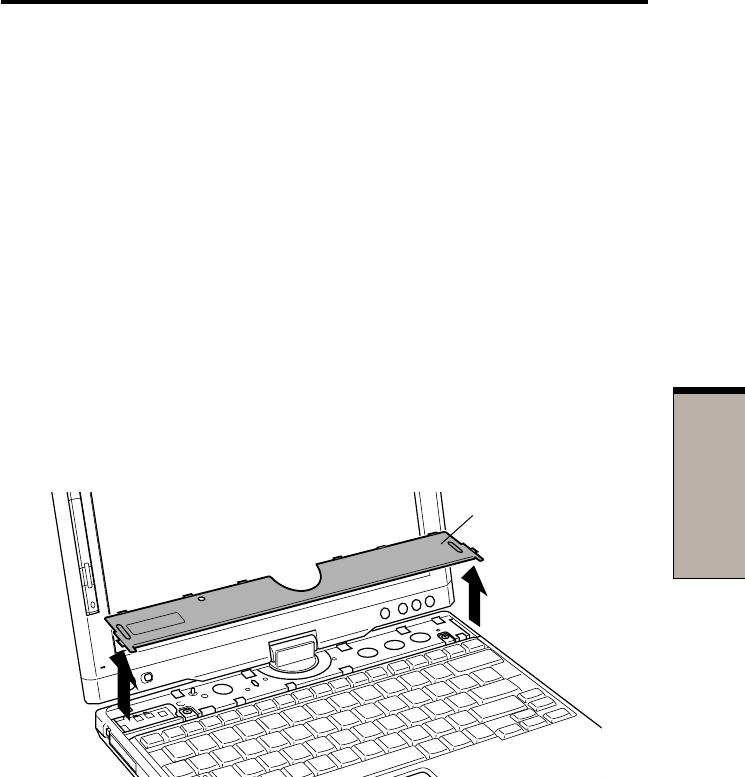
8-11
OO
OO
O
PTIONALPTIONAL
PTIONALPTIONAL
PTIONAL
D D
D D
D
EVICESEVICES
EVICESEVICES
EVICES
NOTE: Use a 0-bit, Phillips screwdriver to remove and fasten screws. Use
of an incorrect screwdriver can damage the screw heads.
Removing and installing memory module in
Slot A
Follow the steps below to remove and install a memory module in Slot A.
1. RTurn the computer’s power off. Make sure the Power indicator is off.
2. Remove AC adaptor and all cables connected to the computer.
3. Turn the computer upside down with the front side of the computer facing to
you and remove the battery pack. Refer to Removing the Battery Pack in
chapter 6; Power and Power-up Modes for the detail.
4. Turn the computer to the normal position and open the display panel. Remove
the keyboard brace. Use thin flat blade driver to remove the brace.
K
EYBOARD BRACE
Figure 8-9 Removing the keyboard brace
Memory expansion
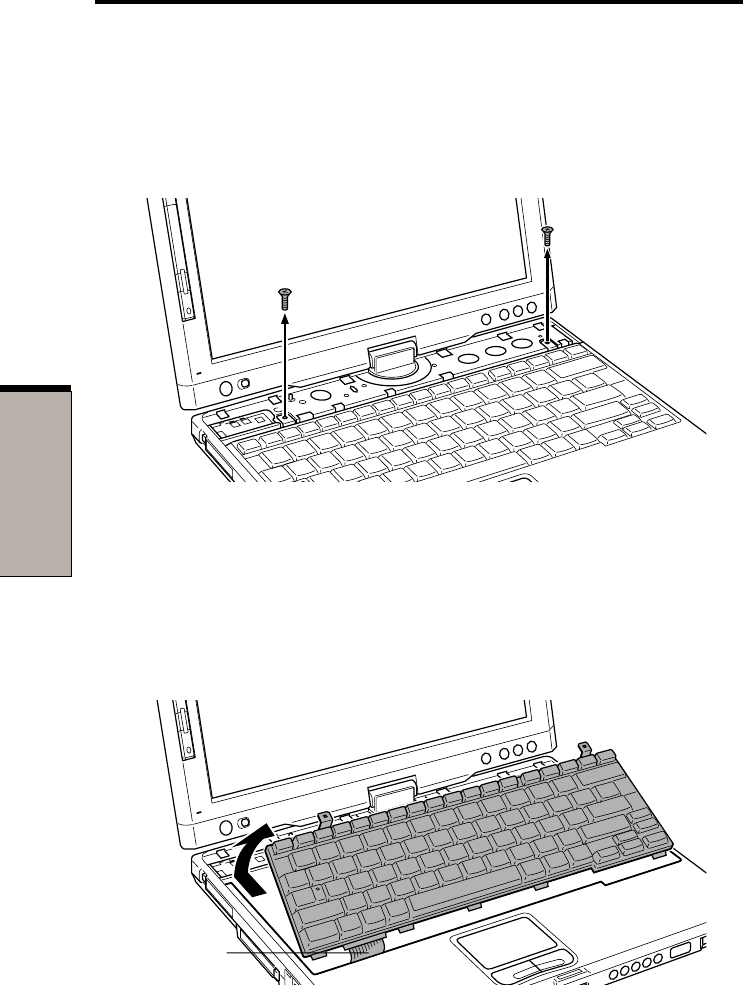
8-12
User’s Manual
OO
OO
OPTIONALPTIONAL
PTIONALPTIONAL
PTIONAL D D
D D
DEVICESEVICES
EVICESEVICES
EVICES
5. Remove two screws (right and left at the both right and left end of the
keyboard) fixing the keyboard.
Figure 8-10 Removing the keyboard (1)
6. Press the keyboard to the other side. Turn the keyboard upside down when a
flat cable appears.
F
LAT
CABLE
Figure 8-11 Removing the keyboard (2)
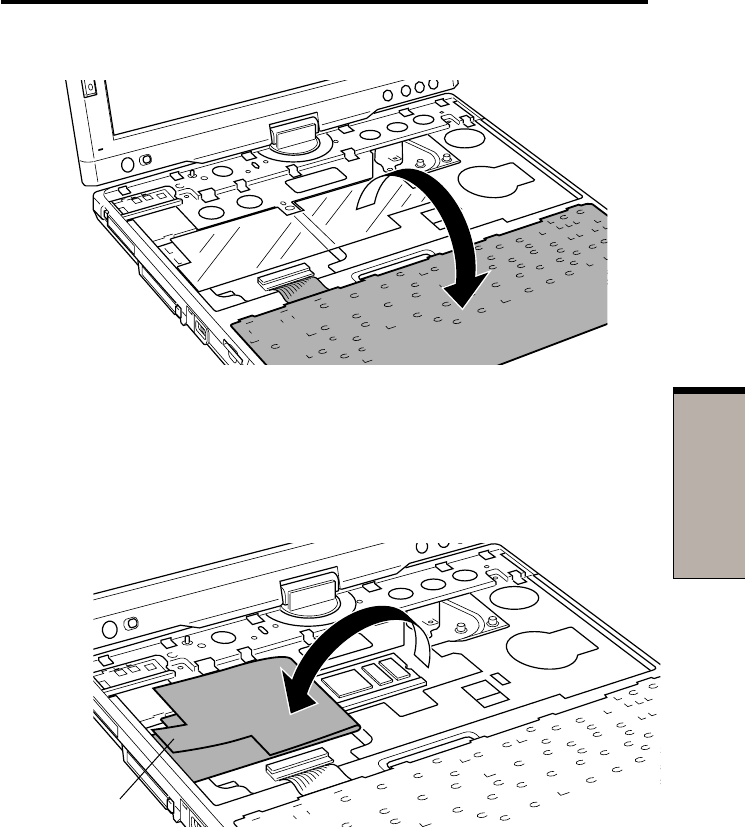
8-13
OO
OO
O
PTIONALPTIONAL
PTIONALPTIONAL
PTIONAL
D D
D D
D
EVICESEVICES
EVICESEVICES
EVICES
Figure 8-12 Removing the keyboard (3)
7. Raise the insulation sheet covering the memory module to appear the module.
INSULATION
SHEET
Figure 8-13 Raising the insulation sheet
Memory expansion
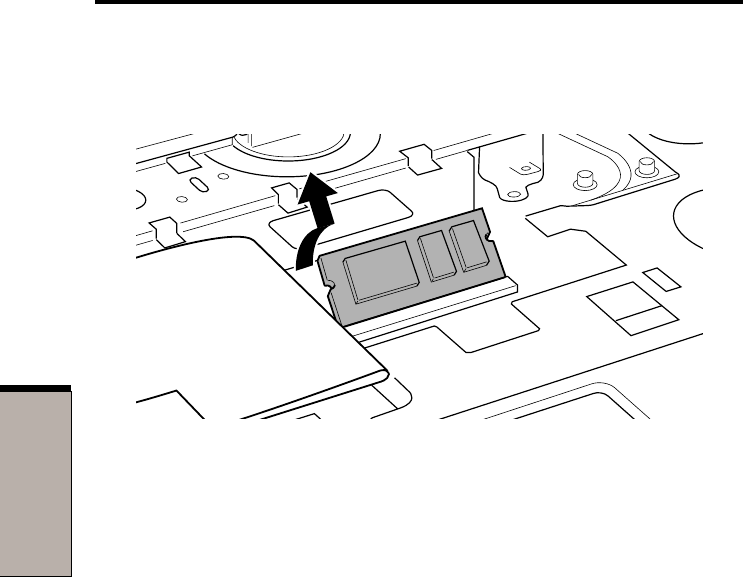
8-14
User’s Manual
OO
OO
OPTIONALPTIONAL
PTIONALPTIONAL
PTIONAL D D
D D
DEVICESEVICES
EVICESEVICES
EVICES
8. Push the latches to the outside to release the module. A spring will force one
end of the module up.
Figure 8-14 Removing the memory module
9. Pinch the module by the sides and pull it out.
CAUTION: Do not touch the connectors on the memory module or on the
computer. Debris on the connectors may cause memory access problems.
10. Insert a new module to the socket and push it downward to lie flat. Latches on
either side will click into place to secure the module.
11. Seat the insulation sheet to cover the module.
12. Insert two tabs into slit of the computer case and seat the keyboard at the
original position. Fix it with two screws removed in 5.
13. Seat the keyboard brace in the original position.
14. Replace the battery pack as described in Chapter 6, Power and Power-up
Modes.
15. Turn the power on and make sure the added memory is recognized. Open
System Properties in the Control Panel and click the General tab.
NOTE: When you view the memory display, the total amount will be
reduced by 16MB, which is used for VRAM.
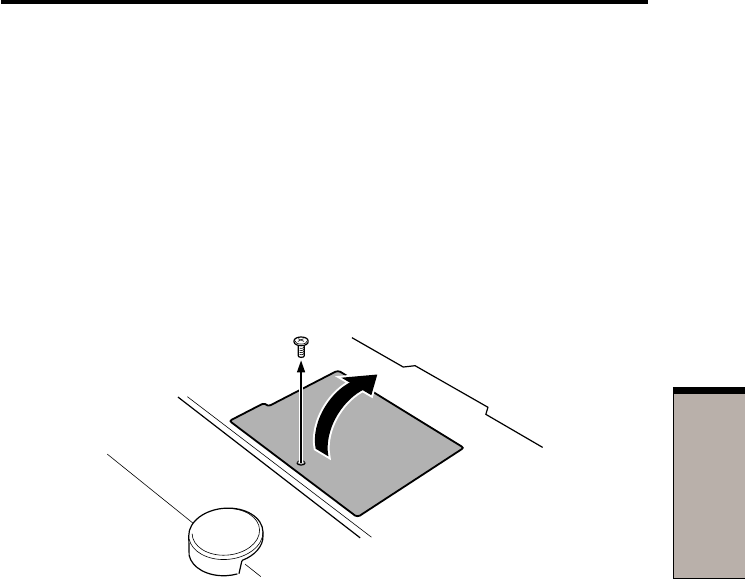
8-15
OO
OO
O
PTIONALPTIONAL
PTIONALPTIONAL
PTIONAL
D D
D D
D
EVICESEVICES
EVICESEVICES
EVICES
Installing memory module in Slot B
Follow the steps below to install a memory module.
1. Set the computer to boot mode and turn off the power.
2. Remove all cables connected to the computer.
3. Turn the computer upside down and remove the battery pack (refer to Chapter
6, Power and Power-Up Modes.)
4. Remove one screw securing the memory module cover.
5. Slide your fingernail or a thin object under the cover and lift it off.
Figure 8-15 Removing the memory module cover
6. Lift one side of the insulator sheet and fit the module’s connectors into the
computer’s connectors at about a 45 degree angle. Press the module carefully
to ensure a firm connection.
CAUTION: Do not touch the connectors on the memory module or on the
computer. Debris on the connectors may cause memory access problems.
7. Push the module down so it lies flat. Latches on either side will click into place
to secure the module.
Memory expansion
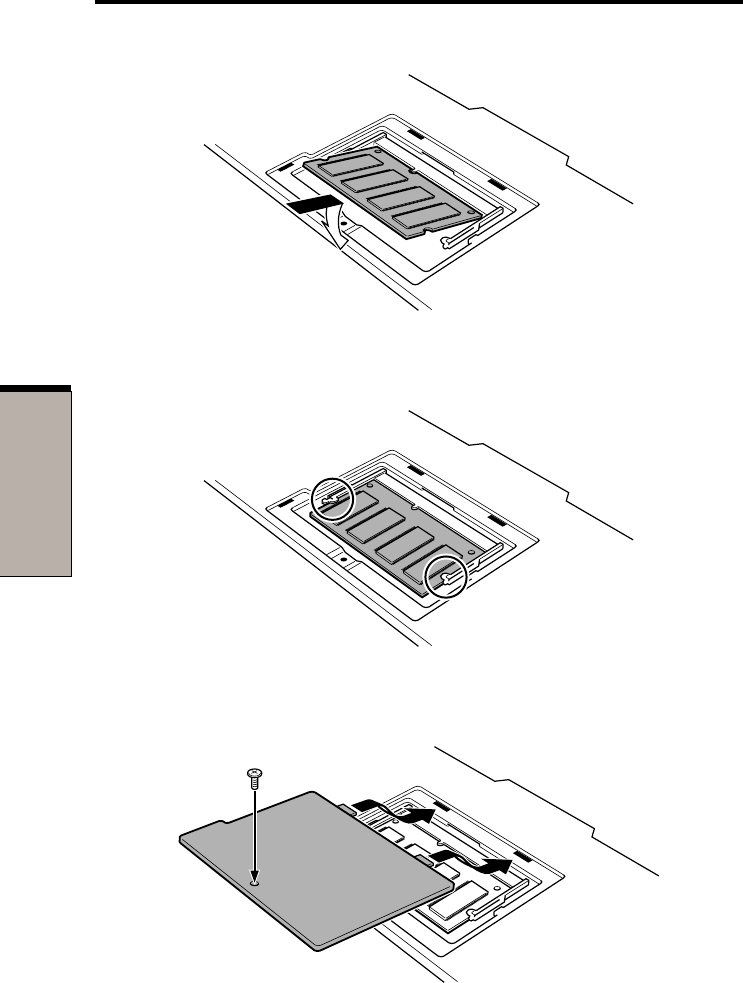
8-16
User’s Manual
OO
OO
OPTIONALPTIONAL
PTIONALPTIONAL
PTIONAL D D
D D
DEVICESEVICES
EVICESEVICES
EVICES
Figure 8-16 Inserting a module (1)
Figure 8-17 Inserting a module (2)
Figure 8-18 Inserting a module (3)

8-17
OO
OO
O
PTIONALPTIONAL
PTIONALPTIONAL
PTIONAL
D D
D D
D
EVICESEVICES
EVICESEVICES
EVICES
8. Seat the cover and secure it with one screw.
9. Replace the battery pack as described in Chapter 6, Power and Power-Up
Modes.
10. Turn the power on and make sure the added memory is recognized. Open
System Properties in the Control Panel and click the General tab.
NOTE: When you view the memory display, the total amount will be
reduced by 16 MB, which is used for VRAM.
Removing memory module in Slot B
To remove the memory module, make sure the computer is in boot mode then:
1. Be sure the power is off and all cables are disconnected from the computer.
2. Turn the computer upside down and remove the battery and one screw
securing the memory module cover.
3. Slide your fingernail or a thin object under the cover and lift it off.
4. Lift one side of the insulator and push the latches to the outside to release the
module. A spring will force one end of the module up.
5. Pinch the module by the sides and pull it out.
CAUTIONS: 1. If you use the computer for a long time, the memory
modules will become hot. In this case, let the memory
modules cool to room temperature before you replace
them.
2. Do not touch the connectors on the memory module or
on the computer. Debris on the connectors may cause
memory access problems.
Memory expansion
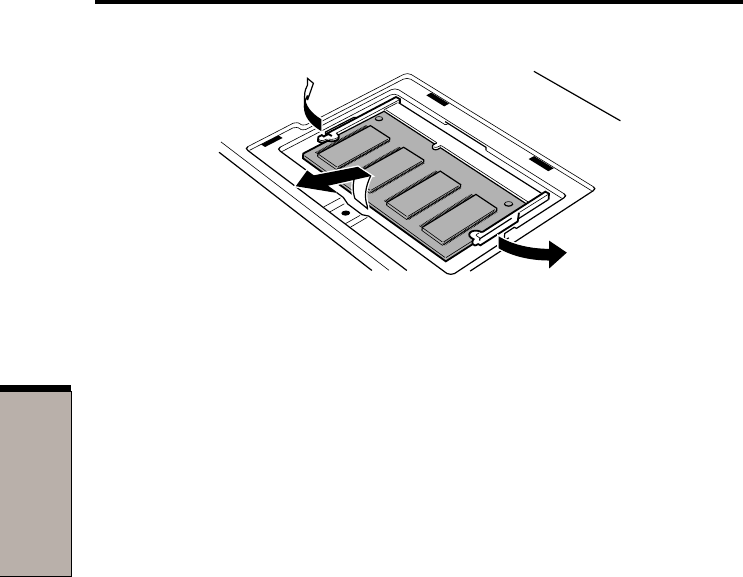
8-18
User’s Manual
OO
OO
OPTIONALPTIONAL
PTIONALPTIONAL
PTIONAL D D
D D
DEVICESEVICES
EVICESEVICES
EVICES
Figure 8-19 Removing the memory module
6. Set the cover and secure it with one screw and replace the battery pack.
Battery Pack
You can increase the portability of the computer with Battery Packs (PA3228U). If
you’re away from an AC power source, you can replace a low battery with a fully
charged one. See Chapter 6, Power and Power-Up Modes.
Universal AC Adaptor
If you frequently transport the computer between different sites such as your home
and office, purchasing an AC adaptor (PA3241 or PA3083) for each location will
reduce the weight and bulk of your carrying load. The AC adaptor (PA3241) is
included in the product when purchased.
Battery Charger
The battery charger (PA3091U) provides a convenient way to charge battery packs
without requiring the use your computer. The battery charger holds up to two
Lithium-ion battery packs.

8-19
OO
OO
O
PTIONALPTIONAL
PTIONALPTIONAL
PTIONAL
D D
D D
D
EVICESEVICES
EVICESEVICES
EVICES
USB FDD Kit
The 3 1/2" external diskette drive module can be connected to the USB port. For
details on connecting the 3 1/2" external diskette drive module, refer to Chapter 4,
Operating Basics.
External monitor
An external analog monitor can be connected to the external monitor port on the
computer. The computer supports VGA and Super VGA video modes. To connect a
monitor, follow the steps below.
1. Turn the computer off.
2. Connect the monitor to the external monitor port.
3. Turn the monitor’s power on.
4. Turn the computer on.
When you turn on the power, the computer automatically recognizes the monitor
and determines whether it is color or monochrome.
To change the display settings, press Fn + F5. If you disconnect the monitor
before you turn the computer off, be sure to press Fn + F5 to switch to the internal
display. Refer to Chapter 5, The Keyboard, for details on using hot keys to change
the display setting.
USB FDD Kit
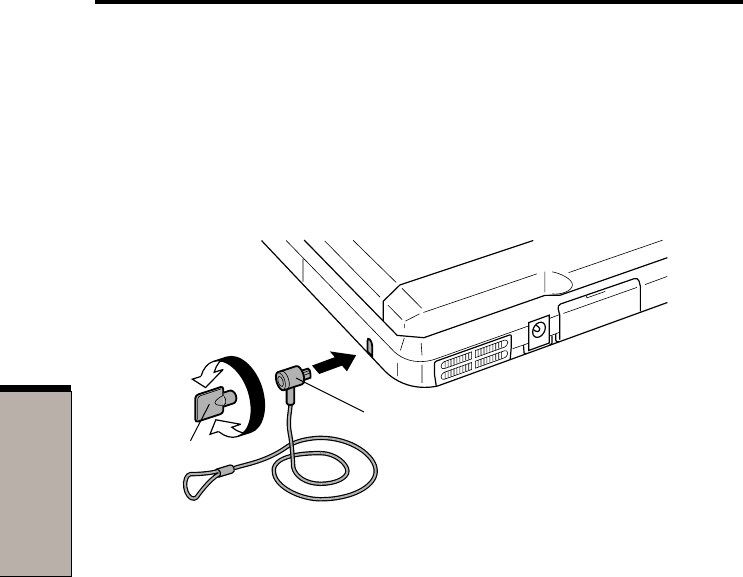
8-20
User’s Manual
OO
OO
OPTIONALPTIONAL
PTIONALPTIONAL
PTIONAL D D
D D
DEVICESEVICES
EVICESEVICES
EVICES
Security lock
A security lock enables you to anchor your computer to a desk or other heavy
object to help prevent unauthorized removal of the computer.
Attach one end of a cable to the desk and the other end to the security lock slot on
the left side of the computer.
SECURITY LOCK
KEY
Figure 8-20 Security lock

T
ROUBLESHOOTING
Chapter 9
Troubleshooting
Problem solving process .................................................................... 9-1
Preliminary checklist........................................................................... 9-1
Analyzing the problem ........................................................................ 9-2
Hardware and system checklist......................................................... 9-3
System start-up .................................................................................. 9-3
Self test .............................................................................................. 9-4
Power ................................................................................................. 9-4
Password ............................................................................................ 9-7
Keyboard ............................................................................................ 9-8
LCD panel ........................................................................................... 9-8
Hard disk drive .................................................................................... 9-9
Diskette drive .................................................................................... 9-10
Infrared port ....................................................................................... 9-10
Pointing device .................................................................................. 9-11
PC card ............................................................................................ 9-14
SD card ............................................................................................ 9-14
Compact Flash ................................................................................. 9-15
Monitor ............................................................................................. 9-15
Sound system .................................................................................. 9-16
USB .................................................................................................. 9-16
Modem ............................................................................................. 9-17
LAN .................................................................................................. 9-19
Wireless LAN.................................................................................... 9-19
Bluetooth .......................................................................................... 9-20
TOSHIBA support .............................................................................. 9-21
Before you call .................................................................................. 9-21
Where to write .................................................................................. 9-21

TROUBLESHOOTING

9-1
TT
TT
T
ROUBLESHOOTINGROUBLESHOOTING
ROUBLESHOOTINGROUBLESHOOTING
ROUBLESHOOTING
Chapter 9
Troubleshooting
TOSHIBA designed the computer for durability. However, should problems occur,
following the procedures in this chapter can help to determine the cause.
All readers should become familiar with this chapter. Knowing what might go
wrong can help prevent problems from occurring.
Problem solving process
Resolving problems will be much easier if you observe the following guidelines:
❑Stop immediately when you recognize a problem exists. Further action may
result in data loss or damage. You may destroy valuable problem-related
information that can help solve the problem.
❑Observe what is happening. Write down what the system is doing and what
actions you performed immediately before the problem occurred. If you have a
printer attached, print a copy of the screen using PrtSc.
The questions and procedures offered in this chapter are meant as a guide, they are
not definitive problem solving techniques. Many problems can be solved simply,
but a few may require help from your dealer. If you find you need to consult your
dealer or others, be prepared to describe the problem in as much detail as possible.
Preliminary checklist
Consider the simplest solution first. The items in this checklist are easy to fix and
yet can cause what appears to be a serious problem.
❑Make sure you turn on all peripheral devices before you turn on the computer.
This includes your printer and any other external device you are using.
❑Before you attach an external device, turn the computer off. When you turn the
computer back on it recognizes the new device.
❑Make sure all options are set properly in the setup program.
❑Check all cables. Are they correctly and firmly attached? Loose cables can
cause signal errors.
❑Inspect all connecting cables for loose wires and all connectors for loose pins.
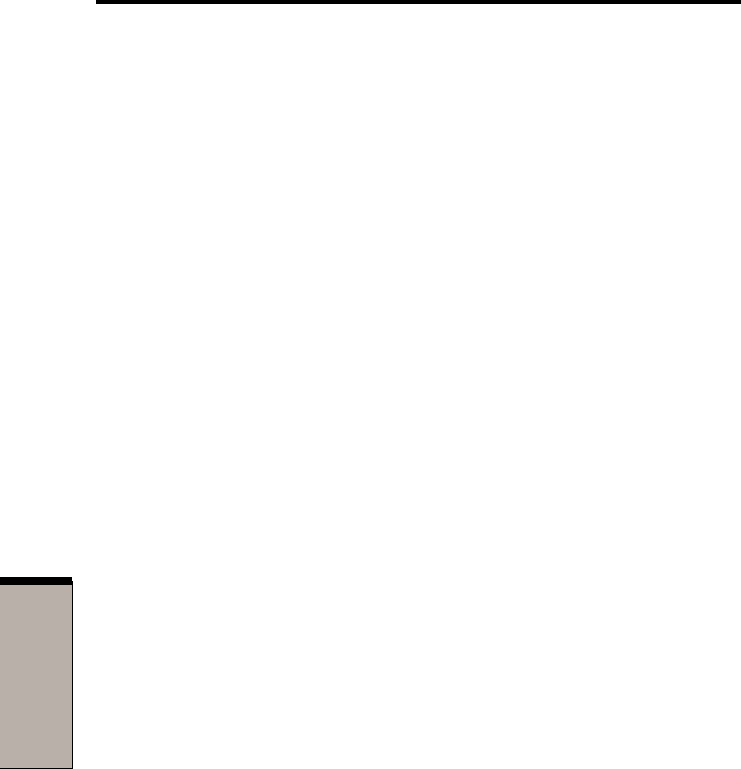
User's Manual
9-2
TT
TT
TROUBLESHOOTINGROUBLESHOOTING
ROUBLESHOOTINGROUBLESHOOTING
ROUBLESHOOTING
❑Check that your diskette is correctly inserted and that the diskette’s write
protect tab is correctly set.
Make notes of your observations and keep them in a permanent error log. This will
help you describe your problems to your dealer. If a problem recurs, the log will
help you identify the problem faster.
Analyzing the problem
Sometimes the system gives clues that can help you identify why it is malfunction-
ing. Keep the following questions in mind:
❑Which part of the system is not operating properly: keyboard, diskette drives,
hard disk drive, printer, display. Each device produces different symptoms.
❑Is the operating system configuration set properly? Check the configuration
options.
❑What appears on the display screen? Does it display any messages or random
characters? Print a copy of the screen if you have a printer attached. Look up
the messages in the software and operating system documentation. Check that
all connecting cables are correctly and firmly attached. Loose cables can cause
erroneous or intermittent signals.
❑Do any icons light? Which ones? What color are they? Do they stay on or
blink? Write down what you see.
❑Do you hear any beeps? How many? Are they long or short? Are they high
pitched or low? Is the computer making any unusual noises? Write down what
you hear.
Record your observations so you can describe them to your dealer.
Software The problems may be caused by your software or diskette.
If you cannot load a software package, the media (usually
a diskette) may be damaged or the program might be
corrupted. Try loading another copy of the software.
If an error message appears while you are using a software
package, check the software documentation. These
documents usually include a problem solving section or a
summary of error messages.
Next, check any error messages in the OS documentation.

9-3
TT
TT
T
ROUBLESHOOTINGROUBLESHOOTING
ROUBLESHOOTINGROUBLESHOOTING
ROUBLESHOOTING
Hardware If you cannot find a software problem, check your hard-
ware. First run through the items in the preliminary
checklist above. If you still cannot correct the problem, try
to identify the source. The next section provides checklists
for individual components and peripherals.
Hardware and system checklist
This section discusses problems caused by your computer’s hardware or attached
peripherals. Basic problems may occur in the following areas:
❑System start-up ❑PC card
❑Self test ❑SD card
❑Power ❑Compact Flash
❑Password ❑Monitor
❑Keyboard ❑Sound system
❑LCD panel ❑USB
❑Hard disk drive ❑Modem
❑Diskette drive ❑LAN
❑Infrared port ❑Wireless LAN
❑Pointing device ❑Bluetooth
System start-up
When the computer does not start properly, check the following items:
❑Self Test
❑Power Sources
❑Power-on Password
Hardware and system checklist
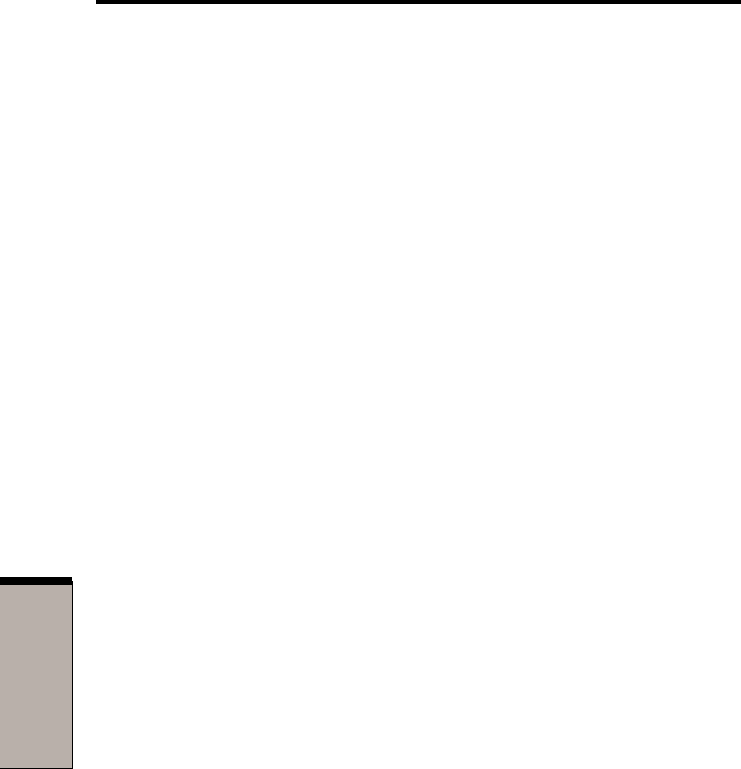
User's Manual
9-4
TT
TT
TROUBLESHOOTINGROUBLESHOOTING
ROUBLESHOOTINGROUBLESHOOTING
ROUBLESHOOTING
Self test
When the computer starts up, the self-test will be run automatically, and the
following will be displayed:
In Touch with Tomorrow
TOSHIBA
This message remains on the screen for a few seconds.
If the self test is successful, the computer tries to load the operating system.
Depending on how the Boot Priority is set in the HW Setup program, the computer
tries to load first from drive A then from drive C, or first from drive C then from drive
A.
If any of the following conditions are present, the self test failed:
❑The computer stops and does not proceed to display information or messages.
❑A beep sounds, and after a few seconds no new messages appear.
❑Random characters appear on the screen, and the system does not function
normally.
❑The screen displays an error message.
Turn off the computer and check all cable connections. If the test fails again, contact
your dealer.
Power
When the computer is not plugged into an AC adaptor, the Battery Pack is the
primary power source. However, your computer has a number of other power
resources, including intelligent power supply and Real Time Clock battery. These
resources are interrelated and any one could affect apparent power problems. This
section provides check lists for AC adaptor and the main battery. If you cannot
resolve a problem after following them, the cause could lie with another power
resource. In such case, contact your dealer.

9-5
TT
TT
T
ROUBLESHOOTINGROUBLESHOOTING
ROUBLESHOOTINGROUBLESHOOTING
ROUBLESHOOTING
Overheating power down
If the computer’s internal temperature becomes too high, the computer will automati-
cally enter Hibernation or Resume mode and shut down.
Problem Procedure
Computer shuts down Leave the computer off until the DC IN indicator
and DC IN indicator stops blinking.
blinks orange
NOTE: It is recommended to leave the computer
off until the its interior reaches room temperature
even though the DC IN indicator stops blinking.
If the computer has reached room temperature
and still does not start, or if it starts but shuts
down quickly contact your dealer.
Computer shuts down Indicates a problem with the heat dispersal
and its DC IN indicator system. Please contact your dealer.
is flashing in green
AC power
If you have trouble turning on the computer with the AC adaptor connected, check
the DC IN indicator. Refer to Chapter 6, Power and Power-Up Modes for more
information.
Problem Procedure
AC adaptor doesn’t Check the connections. Make sure the cord is
power the computer firmly connected to the computer and a power
(DC IN indicator does outlet.
not glow green)
Hardware and system checklist
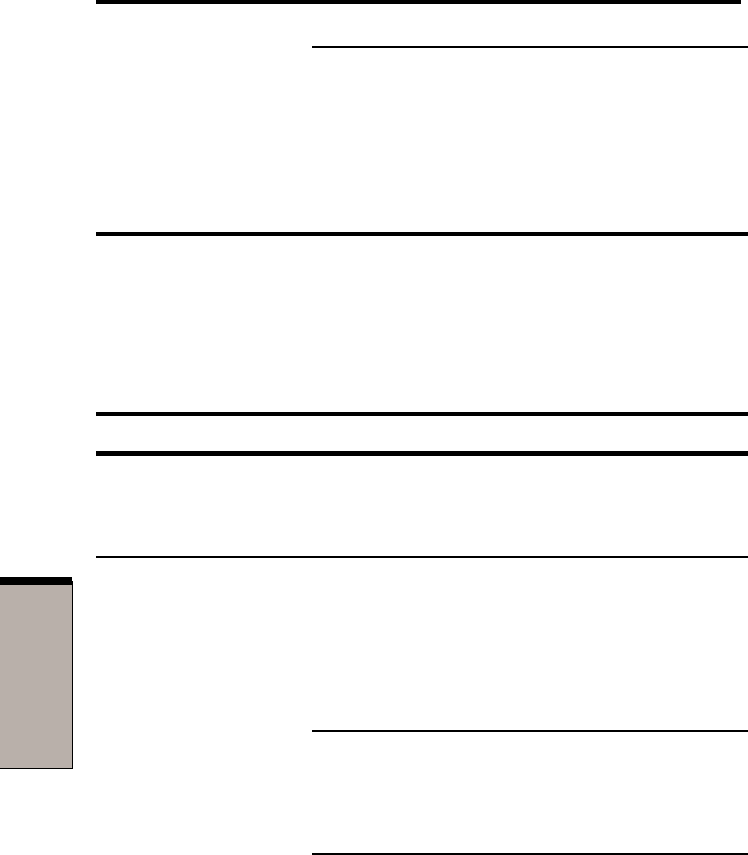
User's Manual
9-6
TT
TT
TROUBLESHOOTINGROUBLESHOOTING
ROUBLESHOOTINGROUBLESHOOTING
ROUBLESHOOTING
Check the condition of the cord and terminals. If
the cord is frayed or damaged, replace it. If the
terminals are soiled, wipe them with cotton or a
clean cloth.
If the AC adaptor still does not power the com-
puter, contact your dealer.
Battery
If you suspect a problem with the battery, check the DC IN indicator as well as the
Battery indicator. For information on indicators and battery operation see Chapter
6, Power and Power-Up Modes.
Problem Procedure
Battery doesn’t The battery may be discharged. Connect the AC
power the computer adaptor to charge the battery.
Battery doesn’t If the battery is completely discharged, it will not
charge when the AC begin charging immediately. Wait a few minutes.
adaptor is attached
(Battery indicator If the battery still does not charge, make sure
does not glow in the outlet of the AC adaptor is supplying power.
orange.) Test it by plugging in an appliance.
Check whether the battery is hot or cold to the
touch. If the battery is too hot or too cold, it will
not charge properly. Let it reach room tempera-
ture.
Unplug the AC adaptor and remove the battery to
make sure the terminals are clean. If necessary
wipe them with a soft dry cloth dipped in alcohol.
Connect the AC adaptor and replace the battery.
Make sure it is securely seated.

9-7
TT
TT
T
ROUBLESHOOTINGROUBLESHOOTING
ROUBLESHOOTINGROUBLESHOOTING
ROUBLESHOOTING
Hardware and system checklist
Check the Battery indicator. If it does not glow, let
the computer charge the battery for at least 20
minutes. If the Battery indicator glows after 20
minutes, let the battery continue to charge at least
another 20 minutes before turning on the com-
puter.
If the indicator still does not glow, the battery may
be at the end of its operating life. Replace it.
If you do not think the battery is at the end of its
operating life, see your dealer.
Battery doesn’t If you frequently recharge a partially charged
power the computer battery, the battery might not charge to its full
as long as expected potential. Fully discharge the battery, then try to
charge it again.
Check the power consumption settings in Power
Saver utility. Consider using a power saving
mode.
Password
Problem Procedure
Cannot enter Refer to the Password section in
password Chapter 7, HW Setup and Passwords.
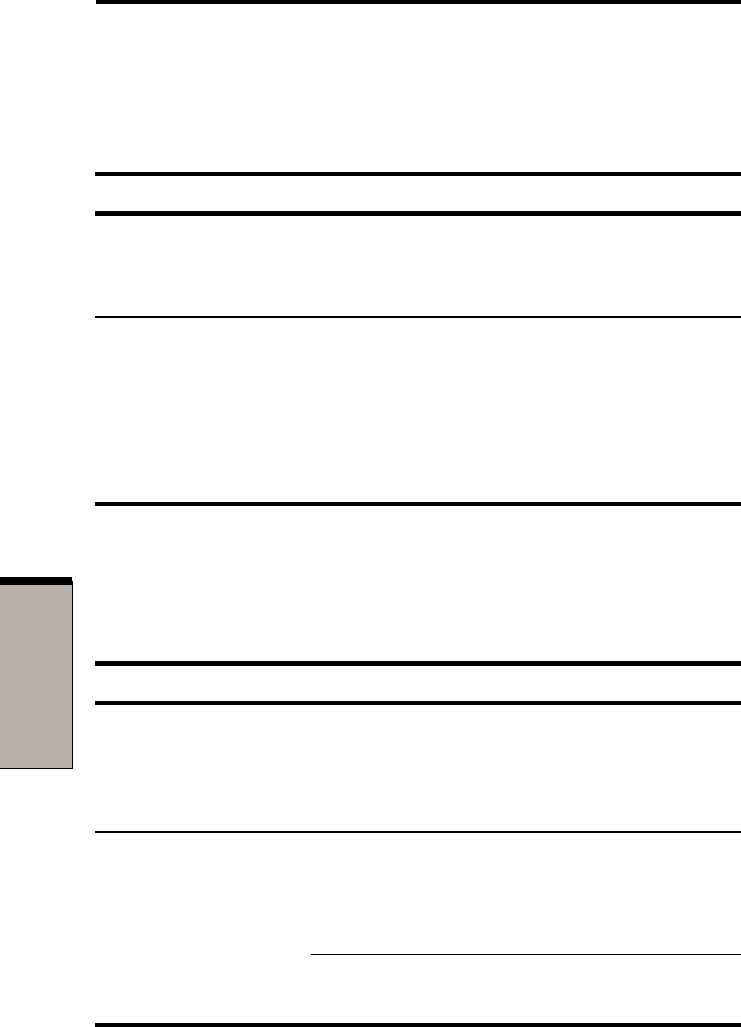
User's Manual
9-8
TT
TT
TROUBLESHOOTINGROUBLESHOOTING
ROUBLESHOOTINGROUBLESHOOTING
ROUBLESHOOTING
Keyboard
Keyboard problems can be caused by your setup configuration. For more informa-
tion refer to Chapter 5, The Keyboard.
Problem Procedure
Some letter keys Check that the numeric keypad overlay is not
produce numbers selected. Press Fn + F10 and try typing again.
Output to screen Make sure the software you are using is not
is garbled remapping the keyboard. Remapping involves
reassigning the meaning of each key. See your
software’s documentation.
If you are still unable to use the keyboard,
consult your dealer.
LCD panel
Apparent LCD problems may be related to the computer’s setup. Refer to Chapter
7, HW Setup and Passwords, for more information.
Problem Procedure
No display Press hotkeys Fn + F5 to change the display
priority, to make sure it is not set for an external
monitor.
Problems above Refer to your software’s documentation to
remain unresolved determine if the software is causing the
or other problems difficulty.
occur
Run the diagnostic test.
Contact your dealer if the problems continue.
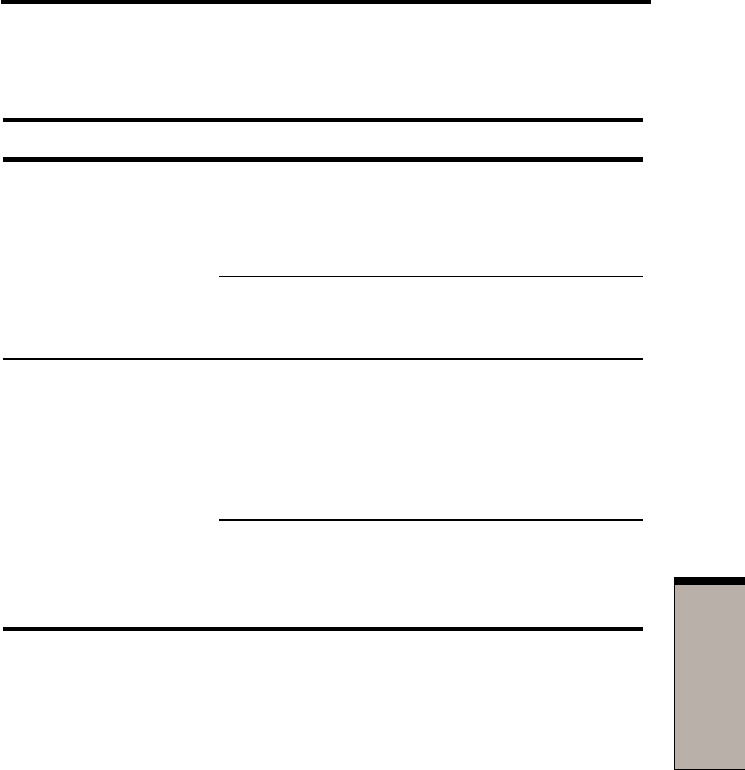
9-9
TT
TT
T
ROUBLESHOOTINGROUBLESHOOTING
ROUBLESHOOTINGROUBLESHOOTING
ROUBLESHOOTING
Hard disk drive
Problem Procedure
Computer does not Check if a diskette is in the diskette drive. If a
boot from hard disk diskette is inserted, remove it and reboot.
drive
There may be a problem with your operating
system files. Refer to your OS documentation.
Slow performance Your files may be fragmented. Run SCANDISK
and defragmenter to check the condition of
your files and disk. Refer to your OS documen-
tation or online HELP for information on running
SCANDISK and the defragmenter.
As a last resort, reformat the hard disk. Then,
reload the operating system and other files.
If problems persist, contact your dealer.
Hardware and system checklist
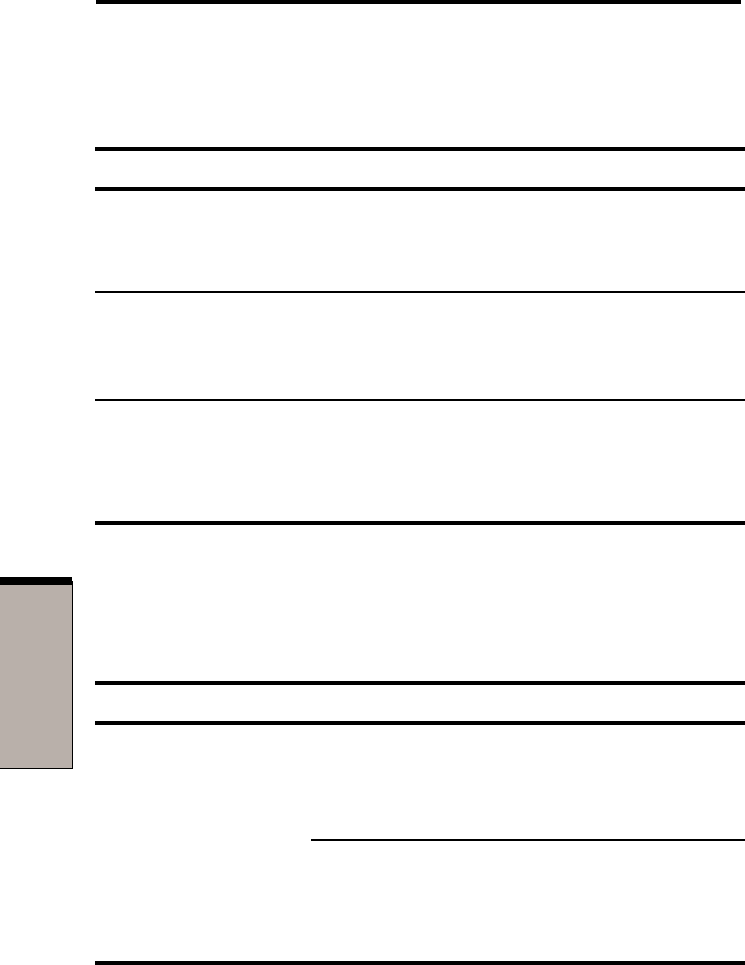
User's Manual
9-10
TT
TT
TROUBLESHOOTINGROUBLESHOOTING
ROUBLESHOOTINGROUBLESHOOTING
ROUBLESHOOTING
Diskette drive
For more information, refer to Chapter4, Operating Basics.
Problem Procedure
Drive does not There may be a faulty cable connection. Check
operate the connection to the computer and to the drive.
Some programs run The software or hardware configuration may be
correctly but others causing a problem. Make sure the hardware
do not configuration matches your software needs.
You cannot access Try another diskette. If you can access the
the external diskette, the original diskette (not the drive) is
3 1/2" diskette drive probably causing the problem.
If problems persist, contact your dealer.
Infrared port
Refer also to the documentation for your IrDA compatible device and related
software.
Problem Procedure
Infrared devices do Check that the device is connected to an
not work as expected electric outlet. Make sure the outlet is supplying
power by plugging in an appliance.
Make sure there is no obstruction blocking
communication between the computer and the
target device.
If problems persist, contact your dealer.
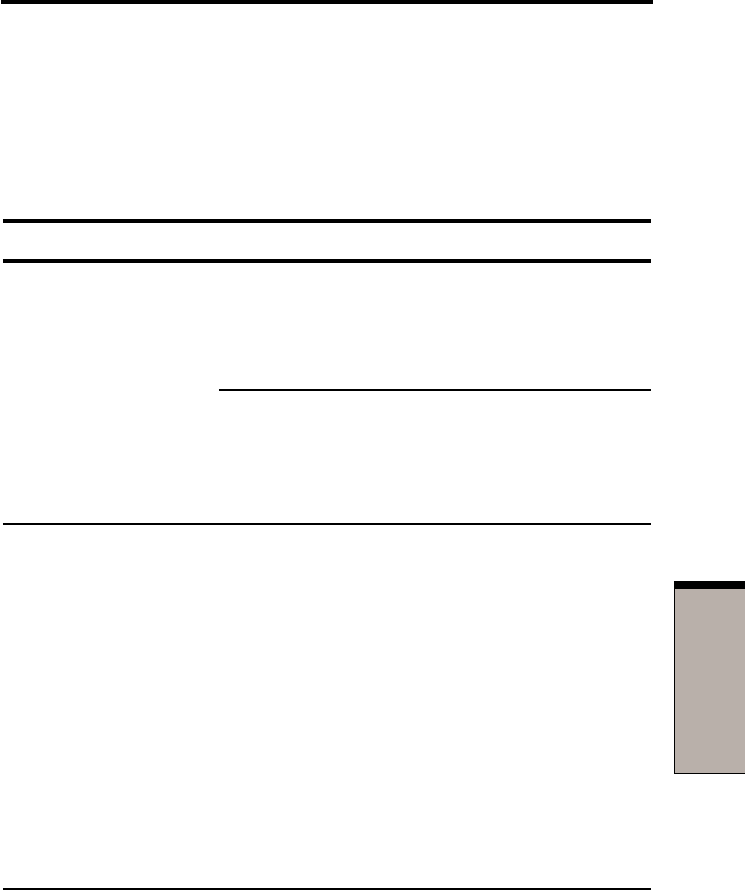
9-11
TT
TT
T
ROUBLESHOOTINGROUBLESHOOTING
ROUBLESHOOTINGROUBLESHOOTING
ROUBLESHOOTING
Pointing device
If you are using a USB mouse, also refer to the USB section in this chapter and to
your mouse documentation.
Pen (Stylus)
Problem Procedure
On-screen pointer The system might be busy. If the pointer is
does not respond to shaped as an hourglass, wait for it to resume
Pen operation its normal shape and try again to move it.
The Pen might be set unable to use.
Press Fn + F9 keys to change Pen setting to
enabled.
Pen and on-screen Adjust the coordinate axis in the following
pointer do not move procedure.
in the same manner
1. Open the Control Panel and click Printer
and other Hardware.
2. Click the Tablet and Pen setting.
3. Select screen orientation with "Adjust" in
"Setting" tab.
4. Click "Adjust" button.
5. Click the cross in adjustment screen and click
"OK".
Unable input from Adjust the setting in the following procedure.
Pen
1. Open the Control Panel and click Printer
and other Hardware.
2. Click the Tablet and Pen setting.
Hardware and system checklist
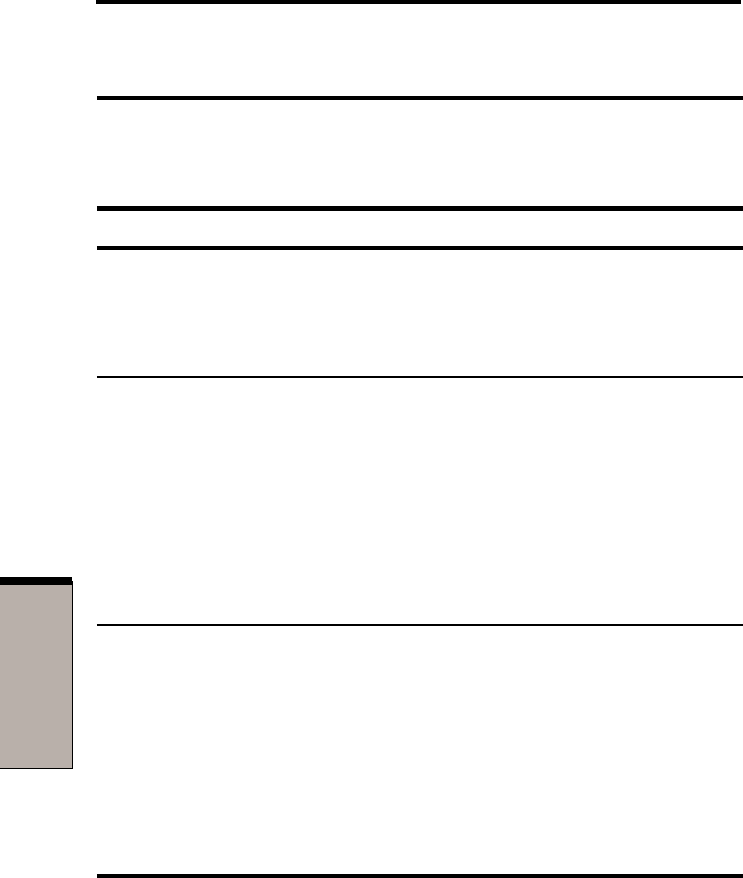
User's Manual
9-12
TT
TT
TROUBLESHOOTINGROUBLESHOOTING
ROUBLESHOOTINGROUBLESHOOTING
ROUBLESHOOTING
3. Adjust setting of each item of "Pen options"
tab and click "OK".
Touch Pad
Problem Procedure
On-screen pointer The system might be busy. If the pointer is
does not respond to shaped as an hourglass, wait for it to resume
Pad operation its normal shape and try again to move it.
Double-tapping Try changing the double-click speed setting in
does not work the mouse control utility.
1. Open the Control Panel, select the Mouse
icon and press Enter.
2. Click the Buttons tab.
3. Set the double-click speed as instructed and
click OK.
The mouse pointer Try changing the speed setting in the mouse
moves too fast or control utility.
too slow
1. Open the Control Panel, select the Mouse
icon and press Enter.
2. Click the Pointer Options tab.
3. Set the speed as instructed and click OK.
If problems persist, contact your dealer.
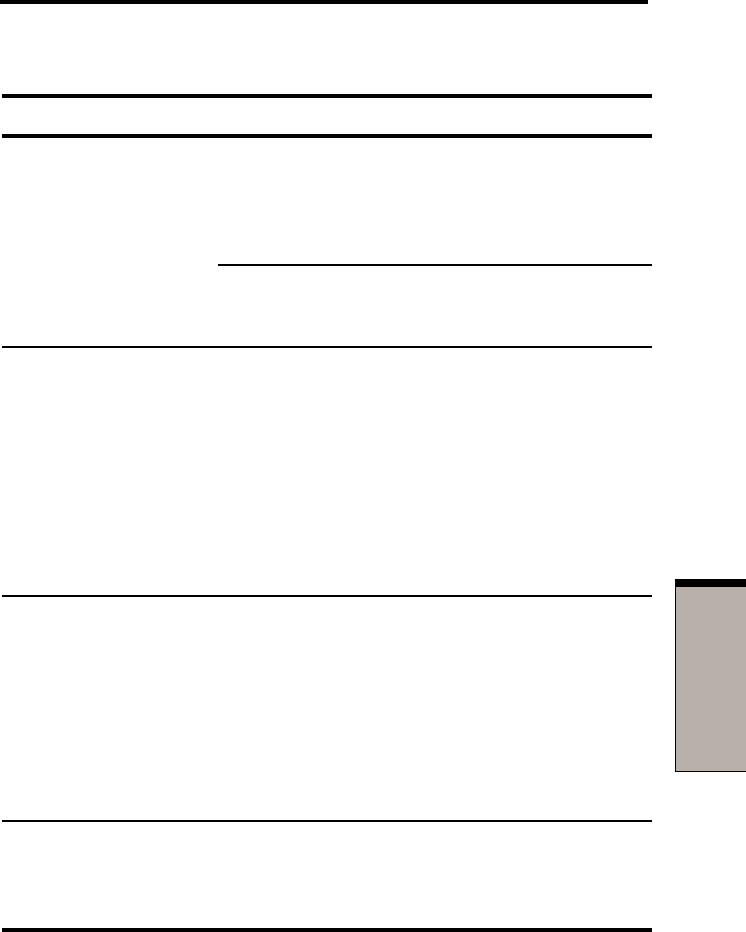
9-13
TT
TT
T
ROUBLESHOOTINGROUBLESHOOTING
ROUBLESHOOTINGROUBLESHOOTING
ROUBLESHOOTING
USB mouse
Problem Procedure
On-screen pointer The system might be busy. If the pointer is
does not respond to shaped as an hourglass, wait for it to resume
mouse operation its normal shape and try again to move it.
Make sure the mouse is properly connected to
the USB port.
Double-clicking Try changing the double-click speed setting in
does not work the mouse control utility.
1. Open the Control Panel, select the Mouse
icon and press Enter.
2. Click the Buttons tab.
3. Set the double-click speed as instructed and
click OK.
The mouse pointer Try changing the speed setting in the mouse
moves too fast or control utility.
too slow
1. Open the Control Panel, select the Mouse
icon and press Enter.
2. Click the Pointer Options tab.
3. Set the speed as instructed and click OK.
The mouse pointer The mouse might be dirty. Refer to your mouse
moves erractically documentations for instructions on cleaning.
If problems persist, contact your dealer.
Hardware and system checklist
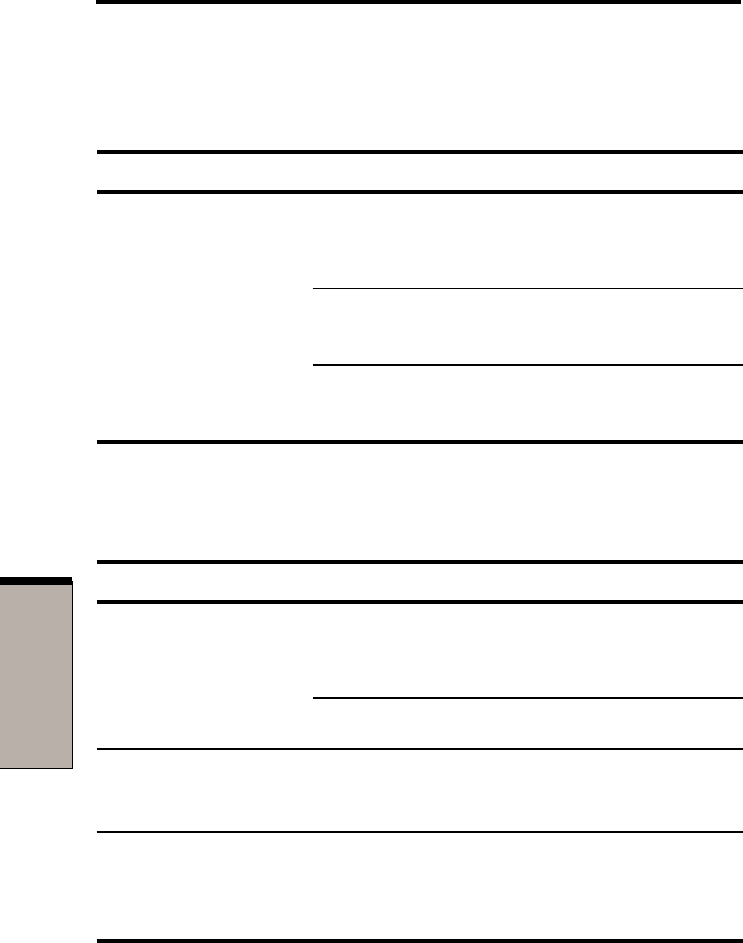
User's Manual
9-14
TT
TT
TROUBLESHOOTINGROUBLESHOOTING
ROUBLESHOOTINGROUBLESHOOTING
ROUBLESHOOTING
PC card
Refer also to Chapter 8, Optional Devices.
Problem Procedure
PC card Reseat the PC card to make sure it is firmly
error occurs connected.
Make sure the connection between the external
device and the card is firm.
Check the card’s documentation.
If problems persist, contact your dealer.
SD card
Refer also to Chapter 8, Optional Devices.
Problem Procedure
SD card Reseat the SD card to make sure it is firmly
error occurs connected.
Check the card’s documentation.
You cannot write Make sure the card is not write protected.
in an SD card
You cannot read Make sure the target file is on the SD Card
a file inserted in the slot.
If problems persist, contact your dealer.

9-15
TT
TT
T
ROUBLESHOOTINGROUBLESHOOTING
ROUBLESHOOTINGROUBLESHOOTING
ROUBLESHOOTING
Compact Flash
Refer also to Chapter 8, Optional Devices.
Problem Procedure
Compact Flash Reseat the Compact Flash to make sure it is
error occurs firmly connected.
Check the card’s documentation.
You cannot read Make sure the target file is on the Compact
a file Flash inserted in the slot.
If problems persist, contact your dealer.
Monitor
Refer also to Chapter 8, Optional Devices, and to your monitor’s documentation.
Problem Procedure
Monitor does not Make sure that the external monitor’s power
turn on switch is on. Confirm that the external monitor’s
power cable is plugged into a working power
outlet.
No display Try adjusting the contrast and brightness controls
on the external monitor.
Press hotkeys Fn + F5 to change the display
priority and make sure it is not set for the internal
display.
Hardware and system checklist
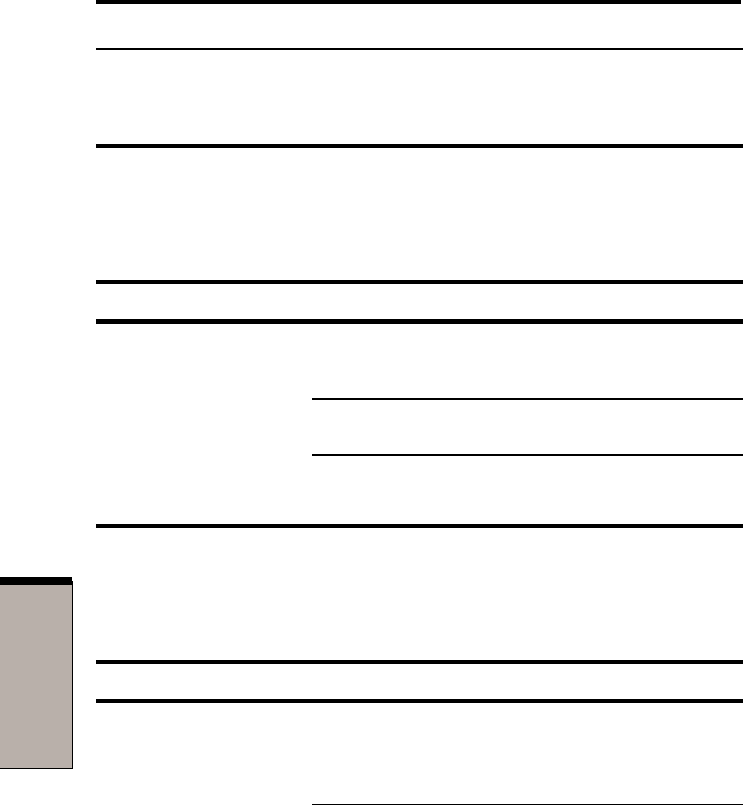
User's Manual
9-16
TT
TT
TROUBLESHOOTINGROUBLESHOOTING
ROUBLESHOOTINGROUBLESHOOTING
ROUBLESHOOTING
Display error occurs Check that the cable connecting the external
monitor to the computer is attached firmly.
If problems persist, contact your dealer.
Sound system
Refer also to documentation for your audio devices.
Problem Procedure
No sound is heard Adjust the volume control dial.
Check the software volume settings.
Make sure the headphone connection is secure.
If problems persist, contact your dealer.
USB
Refer also to your USB device’s documentation.
Problem Procedure
USB device does Check for a firm cable connection between the
not work USB ports on the computer and the USB device.
Make sure the USB device drivers are properly
installed. Refer to your Windows documentation
for information on checking the drivers.
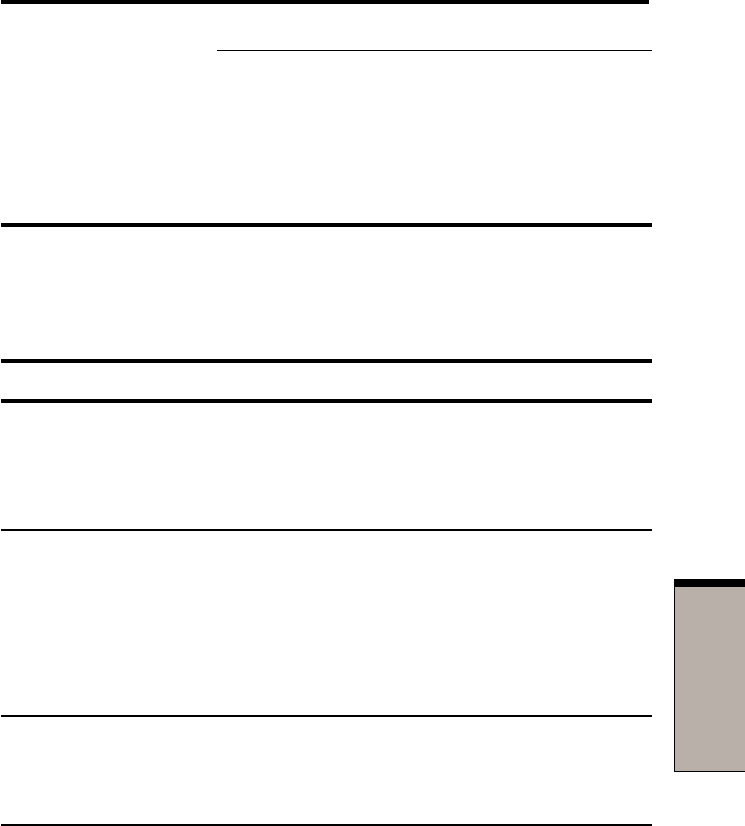
9-17
TT
TT
T
ROUBLESHOOTINGROUBLESHOOTING
ROUBLESHOOTINGROUBLESHOOTING
ROUBLESHOOTING
If you are using an operating system that does not
support USB, you can still use a USB mouse
and/or USB keyboard. If these devices do not
work, make sure the USB KB/Mouse Legacy
Emulation item in HW Setup is set to Enabled.
If problems persist, contact your dealer.
Modem
Refer to the online help files for Appendix C and D.
Problem Procedure
Communication Make sure the computer’s internal modem
software can’t settings are correct. Refer to Modem
initialize modem Properties in the Control Panel.
You can hear a dial If the call is going through a PBX machine, make
tone but can’t make sure the communication application’s tone dial
a call detection feature is disabled.
You can also use the ATX command. Refer to the
online help files for Appendix C, AT Commands.
You place a call, Make sure the settings are correct in your
but a connection communications application.
can’t be made
After making a call Make sure the tone or pulse selection in your
you can’t hear a ring communications application is set correctly.
You can also use the ATD command. Refer to the
online help files for Appendix C, AT Commands.
Hardware and system checklist
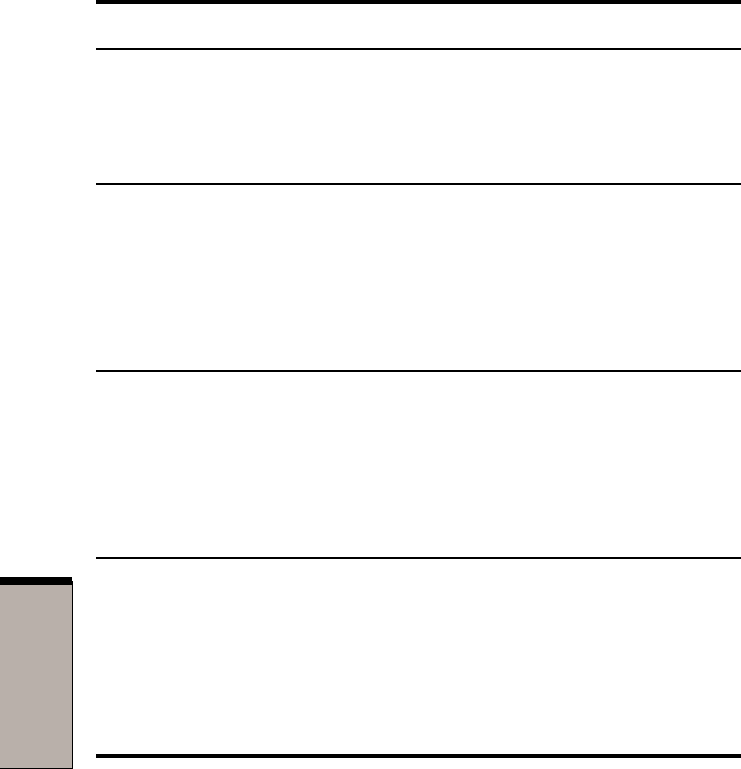
User's Manual
9-18
TT
TT
TROUBLESHOOTINGROUBLESHOOTING
ROUBLESHOOTINGROUBLESHOOTING
ROUBLESHOOTING
Communication is The computer will automatically cut off
cut off unexpectedly communication when connection with the carrier
is not successful for a set time interval. Try
lengthening this time interval.
A CONNECT display Check the error control setting in your
is quickly replaced by communications application.
NO CARRIER
You can also use the AT\N command. Refer to
the online help files for Appendix C, AT Com-
mands.
Character display In data transmission, make sure the parity bit
becomes garbled and stop bit settings correspond with those
during a of the remote computer.
communication
Check the flow control and communication
protocol.
You cannot receive Check the rings before auto answer setting in
an incoming call your communications application.
You can also use the ATS0 command. Refer to
the online help files for Appendix D, S-registers.
If problems persist, contact your dealer.
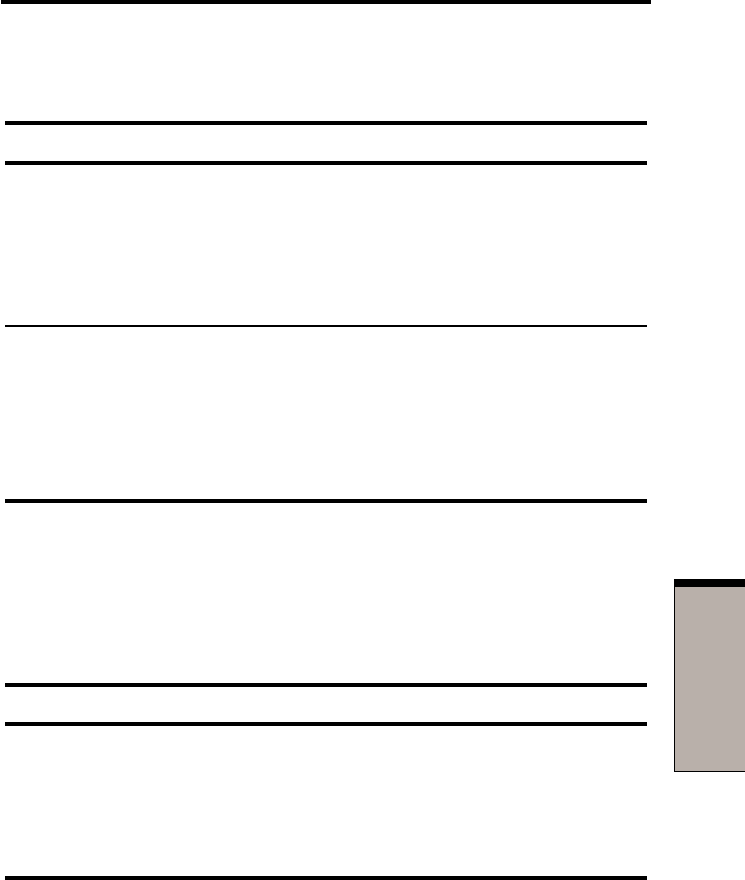
9-19
TT
TT
T
ROUBLESHOOTINGROUBLESHOOTING
ROUBLESHOOTINGROUBLESHOOTING
ROUBLESHOOTING
LAN
Problem Procedure
Cannot access LAN Check for a firm cable connection between the
LAN jack and the LAN HUB.
If problems persist, consult your LAN administra-
tor.
Wake-up on LAN Make sure the AC adaptor is connected. The
does not work Wake-up on LAN function consumes power even
when the system is off.
If problems persist, consult your LAN administra-
tor.
Wireless LAN
If the following procedures do not restore LAN access, consult your LAN adminis-
trator. For more information on wireless communication, refer to Chapter 4,
Operating Basics.
Problem Procedure
Cannot access Make sure the computer’s wireless
Wireless LAN communication switch is set to on.
If problems persist, consult your LAN administra-
tor.
Hardware and system checklist
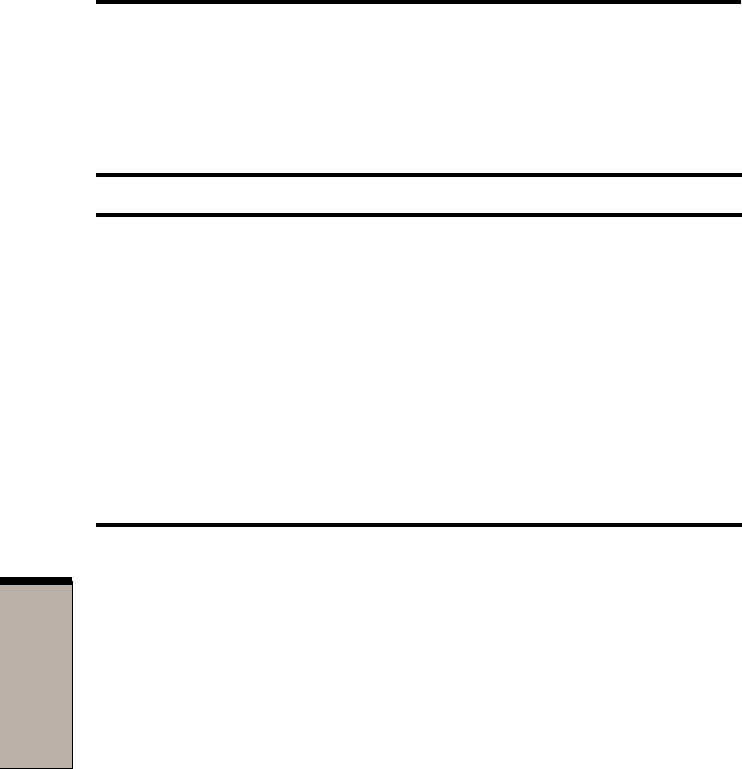
User's Manual
9-20
TT
TT
TROUBLESHOOTINGROUBLESHOOTING
ROUBLESHOOTINGROUBLESHOOTING
ROUBLESHOOTING
Bluetooth
For more information on wireless communication, refer to Chapter 4, Operating
Basics.
Problem Procedure
Cannot access Make sure the computer’s wireless
Bluetooth device communication switch is set to on.
Make sure the Bluetooth Manager is running and
the power to the Bluetooth device is turned on.
Make sure no optional Bluetooth PC card is
installed in the computer. The built-in Bluetooth
function and an optional Bluetooth PC card
cannot operate simultaneously .
If problems persist, contact your dealer.
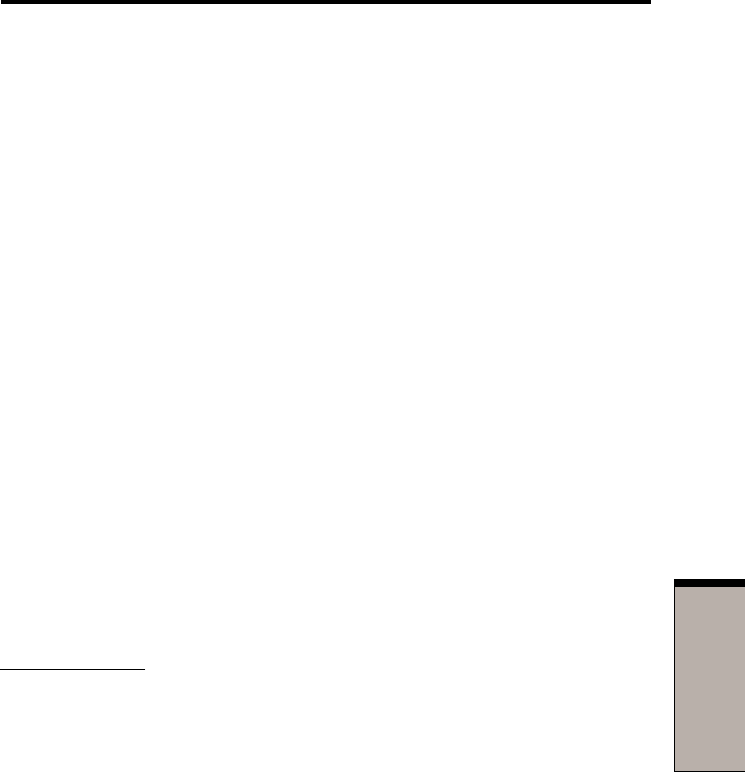
9-21
TT
TT
T
ROUBLESHOOTINGROUBLESHOOTING
ROUBLESHOOTINGROUBLESHOOTING
ROUBLESHOOTING
TOSHIBA support
If you require any additional help using your computer or if you are having
problems operating the computer, you may need to contact TOSHIBA for addi-
tional technical assistance.
Before you call
Some problems you experience may be related to software or the operating system.
It is important to investigate other sources of assistance first. Before contacting
TOSHIBA, try the following:
❑Review troubleshooting sections in the documentation for software and
peripheral devices.
❑If a problem occurs when you are running software applications, consult the
software documentation for troubleshooting suggestions. Call the software
company’s technical support for assistance.
❑Consult the dealer you purchased your computer and/or software from. They
are your best sources for current information and support.
Where to write
If you are still unable to solve the problem and suspect that it is hardware related,
write to TOSHIBA at the nearest location listed on the below.
Outside of Europe
Australia
TOSHIBA Australia Pty. Ltd.
Information Systems Division
84-92 Talavera Road
North Ryde N.S.W. 2113
Sydney
Canada
TOSHIBA of Canada Ltd.
191 McNabb Street,
Markham, Ontario
L3R 8H2
China
TOSHIBA Computer Systems
(Shanghai) Co., Ltd.Bldg.33, No.35,
Jinzang Road,
Pudong New Area,
Shanghai,
P.R. China 201206
Singapore
TOSHIBA Singapore Pte. Ltd.
438B Alexandra Road #06-01
Alexandra Technopark
Singapore 119968
TOSHIBA support
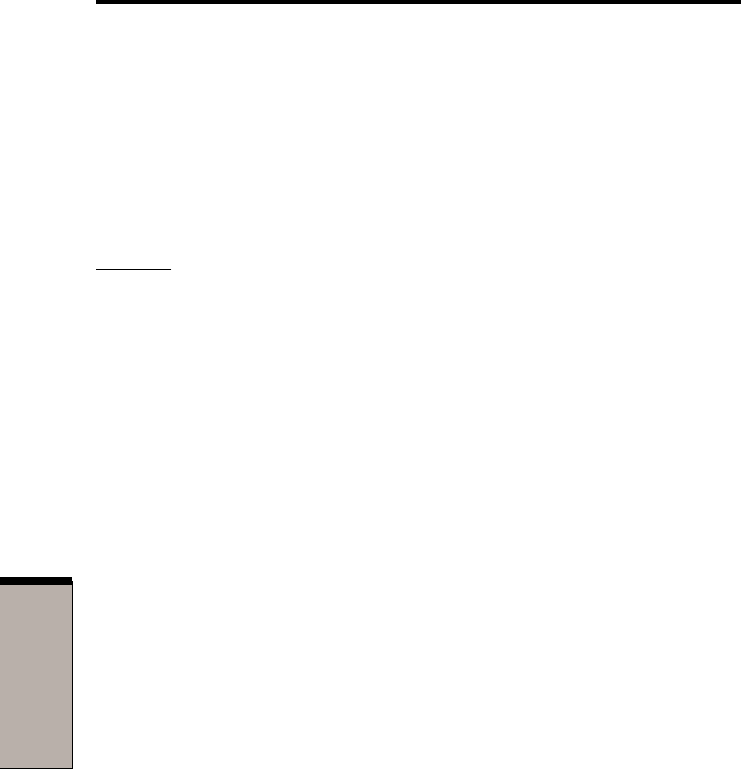
User's Manual
9-22
TT
TT
TROUBLESHOOTINGROUBLESHOOTING
ROUBLESHOOTINGROUBLESHOOTING
ROUBLESHOOTING
United States of America
TOSHIBA America Information
Systems, Inc.
9740 Irvine Boulevard
Irvine, California 92618
USA
In Europe
Germany & Austria
TOSHIBA Europe (I.E.) GmbH
Geschäftsbereich,
Deutschland-Österreich
Hammfelddamm 8,
D-41460 Neuss, Germany
France
TOSHIBA Systèms France S.A.
7, Rue Ampère B.P. 131,
92804 Puteaux Cedex
Netherlands
TOSHIBA Information Systems,
Benelux B.V.
Rivium Boulevard
41 2909 LK Capelle a/d IJssel
Spain
TOSHIBA Information Systems,
ESPAÑA
Parque Empresarial San Fernando
Edificio Europa, la Planta,
Escalera A 28830 Madrid
United Kingdom
TOSHIBA Information Systems (U.K.)
Ltd.
TOSHIBA Court
Weybridge Business Park
Addlestone Road
Weybridge, Surrey KT15 2UL
The Rest of Europe
TOSHIBA Europe (I.E.) GmbH
Geschäftsbereich,
Deutschland-Österreich
Hammfelddamm 8,
D-41460 Neuss, Germany

A
PPENDIXES
Appendixes
Appendix A
Specifications .....................................................................................A-1
Appendix B
Display Controller and Modes ...........................................................B-1
Appendix C
AT Commands ....................................................................................C-1
Appendix D
S-registers ...........................................................................................D-1
Appendix E
V.90 ...................................................................................................... E-1
Appendix F
Wireless LAN ....................................................................................... F-1
Appendix G
AC Power Cord and Connectors....................................................... G-1
Appendix H
Internal Modem Guide .......................................................................H-1
Appendix I
Parts Numbers ..................................................................................... I-1

APPENDIXES

A-1
A
PPENDIX
A
Appendix A
Specifications
This appendix summarizes the computer’s technical specifications.
Physical Dimensions
Size
With TFT display 289 (w) x 229 (d) x 14.9/19.1 (h) millimeters (does not include
the thicker part of the bottom of the computer)
Weight
Hard disk Memory Display Kilograms
20 GB 256 MB 12" XGA-TFT about 1.8 kg
Environmental Requirements
Ambient Relative
Conditions temperature humidity
Operating 5°C (41°F) to 35°C (95°F) 20% to 80%
Nonoperating -20°C (-4°F) to 65°C (149°F) 10% to 90%
Thermal Gradient 20°C per hour maximum
Wet-bulb temperature 26°C maximum
Conditions Altitude (from sea level)
Operating -60 to 3,000 meters
Nonoperating -60 to 10,000 meters maximum
Power Requirements
AC adaptor 100- 240 volts AC
50 or 60 hertz (cycles per second)

A-2
APPENDIX A
User's Manual
Computer 15 VDC
3.0 amperes
Built-in Modem
Network control unit (NCU)
Type of NCU AA
Type of line Telephone line (analog only)
Type of dialing Pulse
Tone
Control command AT commands
EIA-578 commands
Monitor function Computer’s speaker
Communication specifications
Communication Data: Full duplex
system Fax: Half duplex
Communication Data
protocol ITU-T-Rec V.21/V.22/V.22bis/V.32
(Former CCITT) /V.32bis/V.34/V.90
Bell 103/212A
Fax
ITU-T-Rec V.17/V.29/V.27ter
(Former CCITT) /V.21 ch2
Communication Data transmission and reception
speed 300/1200/2400/4800/7200/9600/12000/14400/
16800/19200/21600/24000/26400/28800/31200/
33600 bps
Data reception only with V.90
28000/29333/30666/32000/33333/34666/36000/
37333/38666/40000/41333/42666/44000/45333/
46666/48000/49333/50666/52000/53333/54666/56000
bps
Fax
2400/4800/7200/9600/12000/14400 bps
Error correcting MNP class 4 and ITU-T V.42
Data compression MNP class 5 and ITU-T V.42bis

B-1
A
PPENDIX
B
Appendix B
Display Controller and
Modes
Display controller
The display controller interprets software commands into hardware commands that
turn particular pels on or off.
The controller is an advanced Video Graphics Array (VGA) that provides Super
VGA (SVGA) and Extended Graphics Array (XGA) support for the internal LCD and
external monitors. The displays up to 1024 x 768 (XGA). The controller also sup-
ports simultaneous display on the internal LCD and on an external monitor.
A high-resolution external monitor connected to the computer can display up to
1600 horizontal and 1200 vertical pixels and up to 64K colors.
The display controller also controls the video mode, which uses industry standard
rules to govern the screen resolution and the maximum number of colors that can be
displayed on screen.
Software written for a given video mode will run on any computer that supports the
mode.
The computer’s display controller supports all VGA and SVGA modes, the most
widely used industry standards.
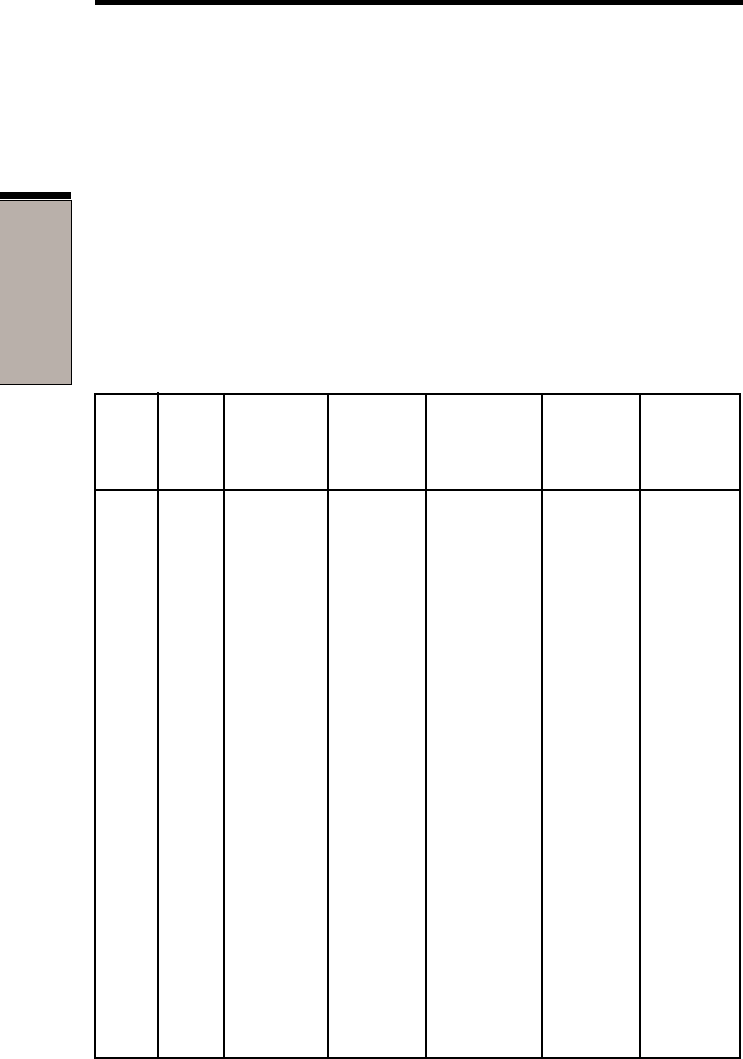
User's Manual
B-2
APPENDIX B
Video modes
The computer supports video modes defined in the table below. If your application
offers a selection of mode numbers that do not match the numbers on the table,
select a mode based on mode type, resolution, character matrix, number of colors
and refresh rates. Also, consider the following points:
❑If your software supports both graphics and text modes, the screen display
may appear to operate faster using a text mode.
❑The LCD’s highest graphics resolution is 1024 horizontal x 768 vertical lines.
❑If a resolution greater than the display’s physical capacity is selected, the
display driver renders a virtual display.
Table Video modes (Landscape)
Video Type Resolution Character LCD CRT Scanning
mode matrix colors colors frequency
(pels) Vertical
0, 1 VGA 40 x 25 8 x 8 16 of 256K 16 of 256K 70Hz
Text Characters
2, 3 VGA 80 x 25 8 x 8 16 of 256K 16 of 256K 70Hz
Text Characters
0*, 1* VGA 40 x 25 8 x 14 16 of 256K 16 of 256K 70Hz
Text Characters
2*, 3* VGA 80 x 25 8 x 14 16 of 256K 16 of 256K 70Hz
Text Characters
0+, 1+ VGA 40 x 25 8(9) x 16 16 of 256K 16 of 256K 70Hz
Text Characters
2+, 3+ VGA 80 x 25 8(9) x 16 16 of 256K 16 of 256K 70Hz
Text Characters
4, 5 VGA 320 x 200 8 x 8 4 of 256K 4 of 256K 70Hz
Grph Pixels
6 VGA 640 x 200 8 x 8 2 of 256K 2 of 256K 70Hz
Grph Pixels
7 VGA 80 x 25 8(9) x 14 Mono Mono 70Hz
Text Characters
7+VGA 80 x 25 8(9) x 16 Mono Mono 70Hz
Text Characters

B-3
A
PPENDIX
B
Table Video modes continued (Landscape)
Video Type Resolution Character LCD CRT Scanning
mode matrix colors colors frequency
(pels) Vertical
D VGA 320 x 200 8 x 8 16 of 256K 16 of 256K 70Hz
Grph Pixels
E VGA 640 x 200 8 x 8 16 of 256K 16 of 256K 70Hz
Grph Pixels
F VGA 640 x 350 8 x 14 Mono Mono 70Hz
Grph Pixels
10 VGA 640 x 350 8 x 14 16 of 256K 16 of 256K 70Hz
Grph Pixels
11 VGA 640 x 480 8 x 16 2 of 256K 2 of 256K 60Hz
Grph Pixels
12 VGA 640 x 480 8 x 16 16 of 256K 16 of 256K 60Hz
Grph Pixels
13 VGA 320 x 200 8 x 8 256 of 256K 256 of 256K 70Hz
Grph Pixels
SVGA 640 x 480 256 of 256K 256 of 256K 60Hz
Grph Pixels 75Hz
85Hz
SVGA 800 x 600 256 of 256K 256 of 256K 60Hz
Grph Pixels 75Hz
85Hz
SVGA 1024 x 768 256 of 256K 256 of 256K 60Hz
Grph Pixels 75Hz
85Hz
SVGA 1280 x 1024 256 of 256K 256 of 256K 60Hz
Grph Pixels 75Hz
85Hz
SVGA 1600 x 1200 256 of 256K 256 of 256K 60Hz
Grph Pixels
Appendix B
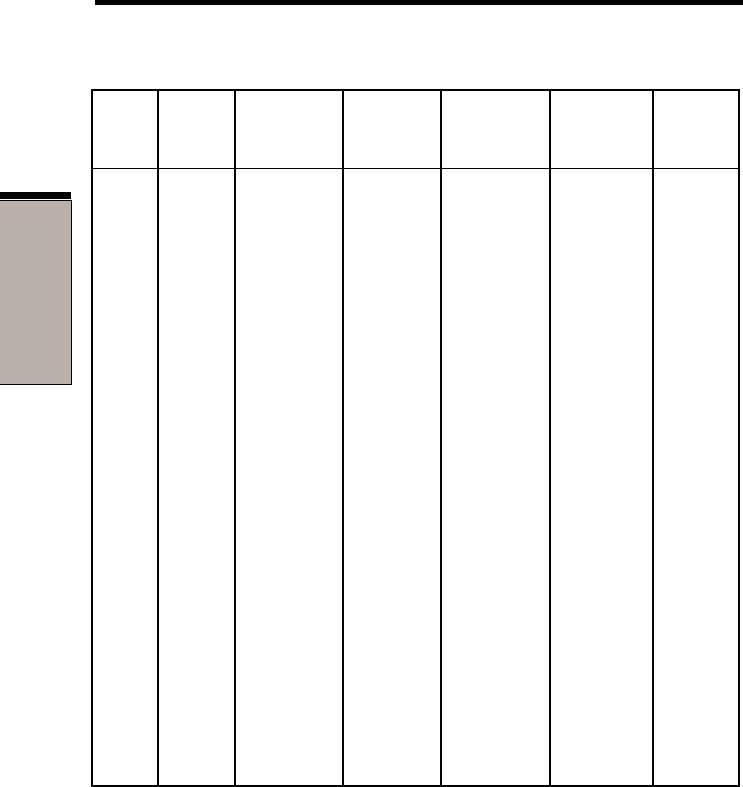
User's Manual
B-4
APPENDIX B
Table Video modes continued (Landscape)
Video Type Resolution Character LCD CRT Scanning
mode matrix colors colors frequency
(pels) Vertical
SVGA 640 x 480 64K of 64K 64K of 64K 60Hz
Grph Pixels 75Hz
85Hz
SVGA 800 x 600 64K of 64K 64K of 64K 60Hz
Grph Pixels 75Hz
85Hz
SVGA 1024 x 768 64K of 64K 64K of 64K 60Hz
Grph Pixels 75Hz
85Hz
SVGA 1280 x 1024 64K of 64K 64K of 64K 60Hz
Grph Pixels 75Hz
85Hz
SVGA 1600 x 1200 64K of 64K 64K of 64K 60Hz
Grph Pixels
SVGA 640 x 480 16M of 16M 16M of 16M 60Hz
Grph Pixels 75Hz
85Hz
SVGA 800 x 600 16M of 16M 16M of 16M 60Hz
Grph Pixels 75Hz
85Hz
SVGA 1024 x 768 16M of 16M 16M of 16M 60Hz
Grph Pixels 75Hz
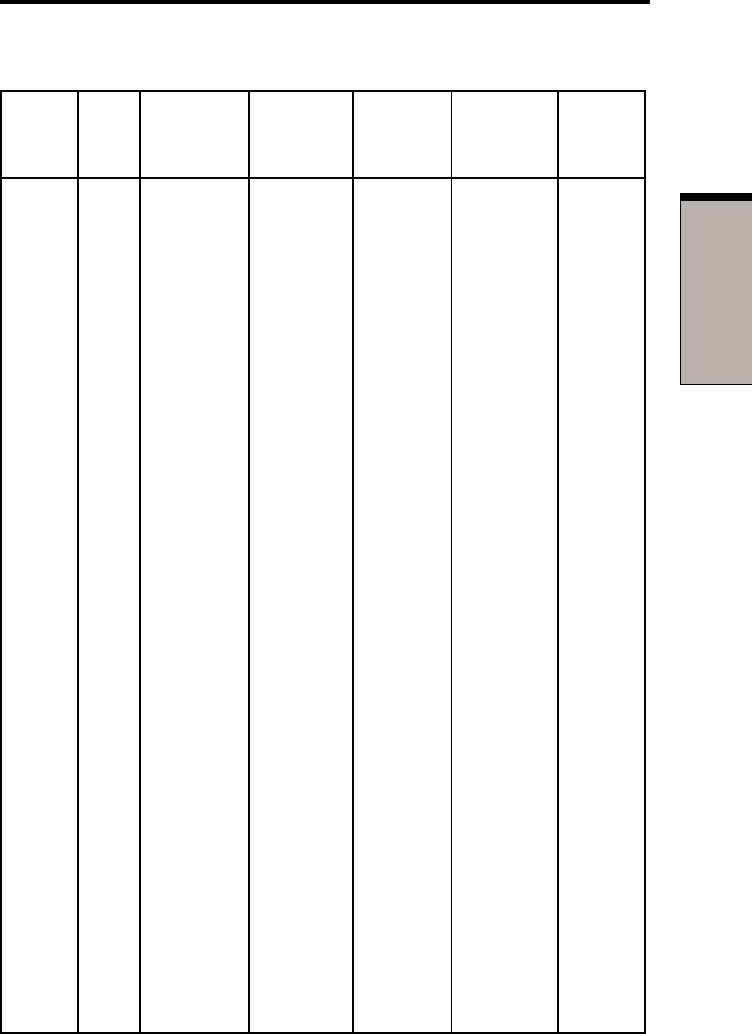
B-5
A
PPENDIX
B
Table Video modes (Portrait)
Video Type Resolution Character LCD CRT Scanning
mode matrix colors colors frequency
(pels) Vertical
0, 1 VGA 25 x 40 8 x 8 16 of 256K 16 of 256K 70Hz
Text Characters
2, 3 VGA 25 x 80 8 x 8 16 of 256K 16 of 256K 70Hz
Text Characters
0*, 1* VGA 25 x 40 8 x 14 16 of 256K 16 of 256K 70Hz
Text Characters
2*, 3* VGA 25 x 80 8 x 14 16 of 256K 16 of 256K 70Hz
Text Characters
0+, 1+ VGA 25 x 40 8(9) x 16 16 of 256K 16 of 256K 70Hz
Text Characters
2+, 3+ VGA 25 x 80 8(9) x 16 16 of 256K 16 of 256K 70Hz
Text Characters
4, 5 VGA 200 x 320 8 x 8 4 of 256K 4 of 256K 70Hz
Grph Pixels
6 VGA 200 x 640 8 x 8 2 of 256K 2 of 256K 70Hz
Grph Pixels
7 VGA 25 x 80 8(9) x 14 Mono Mono 70Hz
Text Characters
7+VGA 25 x 80 8(9) x 16 Mono Mono 70Hz
Text Characters
D VGA 200 x 320 8 x 8 16 of 256K 16 of 256K 70Hz
Grph Pixels
E VGA 200 x 640 8 x 8 16 of 256K 16 of 256K 70Hz
Grph Pixels
F VGA 350 x 640 8 x 14 Mono Mono 70Hz
Grph Pixels
10 VGA 350 x 640 8 x 14 16 of 256K 16 of 256K 70Hz
Grph Pixels
11 VGA 480 x 640 8 x 16 2 of 256K 2 of 256K 60Hz
Grph Pixels
Appendix B
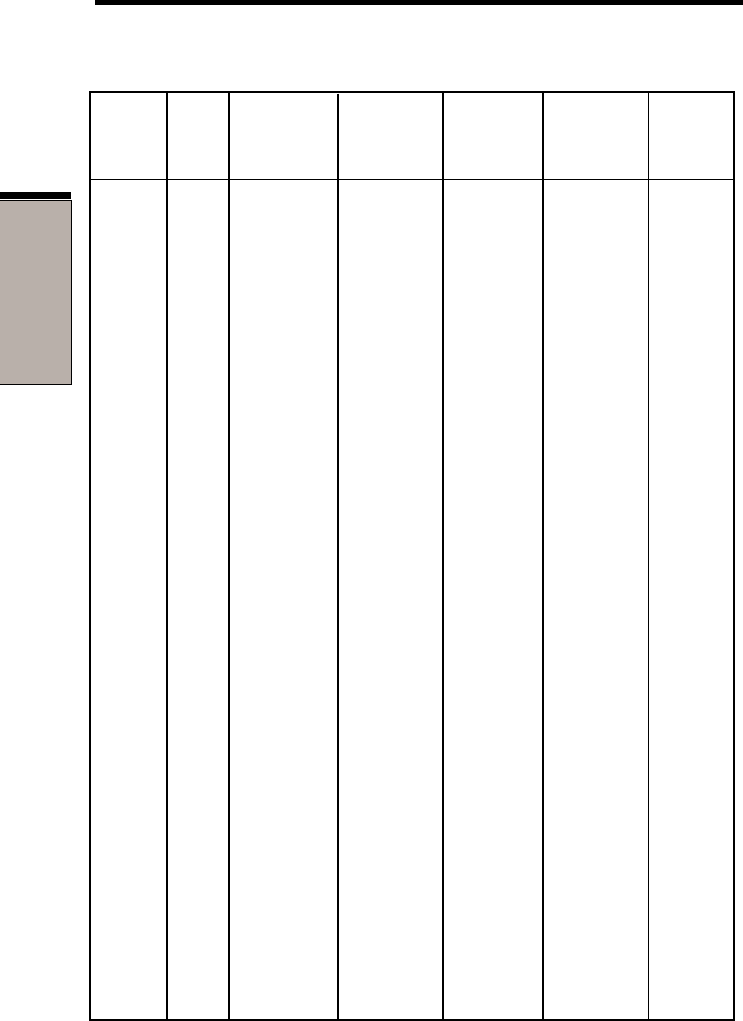
User's Manual
B-6
APPENDIX B
Table Video modes continued (Portrait)
Video Type Resolution Character LCD CRT Scanning
mode matrix colors colors frequency
(pels) Vertical
12 VGA 480 x 640 8 x 16 16 of 256K 16 of 256K 60Hz
Grph Pixels
13 VGA 200 x 320 8 x 8 256 of 256K 256 of 256K 70Hz
Grph Pixels
SVGA 480 x 640 256 of 256K 256 of 256K 60Hz
Grph Pixels 75Hz
85Hz
SVGA 600 x 800 256 of 256K 256 of 256K 60Hz
Grph Pixels 75Hz
85Hz
SVGA 768 x 1024 256 of 256K 256 of 256K 60Hz
Grph Pixels 75Hz
85Hz
SVGA 1024 x 1280 256 of 256K 256 of 256K 60Hz
Grph Pixels 75Hz
85Hz
SVGA 1200 x 1600 256 of 256K 256 of 256K 60Hz
Grph Pixels
SVGA 480 x 640 64K of 64K 64K of 64K 60Hz
Grph Pixels 75Hz
85Hz
SVGA 600 x 800 64K of 64K 64K of 64K 60Hz
Grph Pixels 75Hz
85Hz
SVGA 768 x 1024 64K of 64K 64K of 64K 60Hz
Grph Pixels 75Hz
85Hz
SVGA 1024 x 1280 64K of 64K 64K of 64K 60Hz
Grph Pixels 75Hz
85Hz
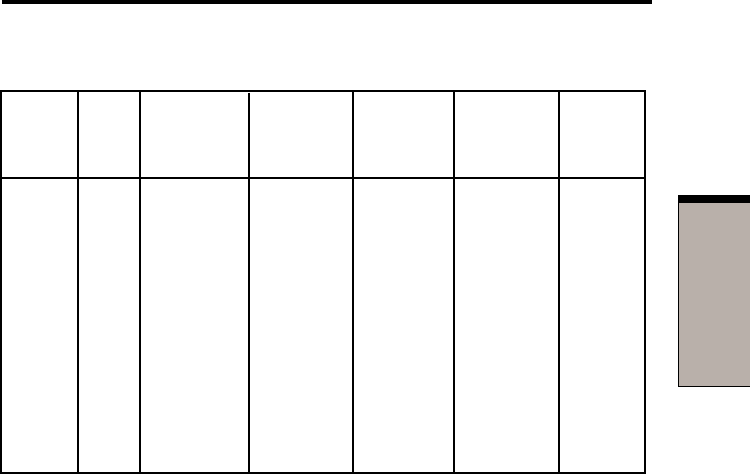
B-7
A
PPENDIX
B
Table Video modes continued (Portrait)
Video Type Resolution Character LCD CRT Scanning
mode matrix colors colors frequency
(pels) Vertical
SVGA 1200 x 1600 64K of 64K 64K of 64K 60Hz
Grph Pixels
SVGA 480 x 640 16M of 16M 16M of 16M 60Hz
Grph Pixels 75Hz
85Hz
SVGA 600 x 800 16M of 16M 16M of 16M 60Hz
Grph Pixels 75Hz
85Hz
SVGA 768 x 1024 16M of 16M 16M of 16M 60Hz
Grph Pixels 75Hz
Appendix B

User's Manual
B-8
APPENDIX B

C-1
A
PPENDIX
C
Appendix C
AT Commands
In most cases, you will not need to type AT commands manually. However,
there might be some occasions when you will need to do so.
For details on AT commands, refer to the online manual.

User's Manual
C-2
APPENDIX C

D-1
A
PPENDIX
D
Appendix D
S-registers
S-registers contain the settings that determine how a number of functions of the
internal modem operate. The contents of the registers are changed automatically
when you modify corresponding settings in your communication software. If
you choose, however, you can display and edit the contents of the registers
manually when the modem is in command mode.
For details on S-registers, refer to the online manual.

User's Manual
D-2
APPENDIX D
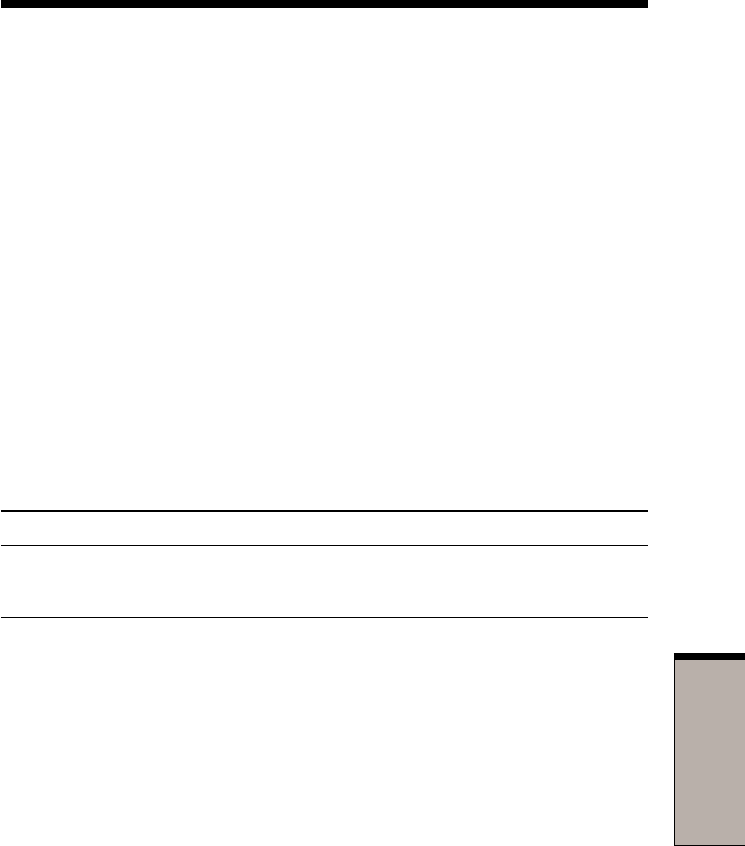
E-1
A
PPENDIX
E
Appendix E
V.90
The TOSHIBA internal modem uses V.90 technology. The modem is capable of
downstream speeds of 56Kbps (kilobits per second) when connected to an Internet
service provider that supports V.90. As with any modem, the actual throughput
(speed of data transfer) depends on analog telephone line conditions, which can
vary considerably. Therefore, many users will experience throughput in the range of
32-44Kbps under normal telephone line conditions. Upstream data flows at the V.34
rate.
NOTE: V.90 rates can be achieved only when one V.90 capable modem
is connected to another. The TOSHIBA Internal modem will select
automatically V.34 if the remote modem lacks V.90 capability or if a
combination of network and/or phone line conditions prevent V.90
connection.
V.90 mode
Function Transmission speed
Data V.90 From 56K (maximum) to 28Kbps (minimum)
Reception only
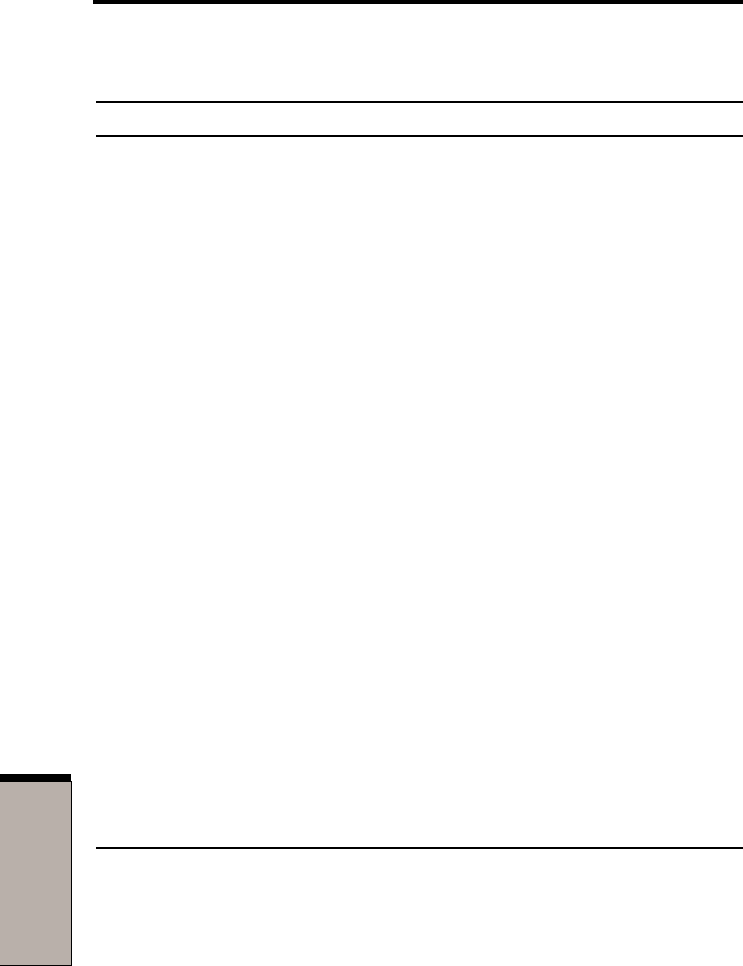
User's Manual
E-2
APPENDIX E
Table E-1 Result codes for a V.90 connection
No. Result code Description
70 CONNECT 32000 EC* Connection at 32000 bits/s
72 CONNECT 36000 EC* Connection at 36000 bits/s
74 CONNECT 40000 EC* Connection at 40000 bits/s
76 CONNECT 44000 EC* Connection at 44000 bits/s
78 CONNECT 48000 EC* Connection at 48000 bits/s
80 CONNECT 52000 EC* Connection at 52000 bits/s
82 CONNECT 56000 EC* Connection at 56000 bits/s
100 CONNECT 28000 EC* Connection at 28000 bits/s
101 CONNECT 29333 EC* Connection at 29333 bits/s
102 CONNECT 30666 EC* Connection at 30666 bits/s
103 CONNECT 33333 EC* Connection at 33333 bits/s
104 CONNECT 34666 EC* Connection at 34666 bits/s
105 CONNECT 37333 EC* Connection at 37333 bits/s
106 CONNECT 38666 EC* Connection at 38666 bits/s
107 CONNECT 41333 EC* Connection at 41333 bits/s
108 CONNECT 42666 EC* Connection at 42666 bits/s
109 CONNECT 45333 EC* Connection at 45333 bits/s
110 CONNECT 46666 EC* Connection at 46666 bits/s
111 CONNECT 49333 EC* Connection at 49333 bits/s
112 CONNECT 50666 EC* Connection at 50666 bits/s
113 CONNECT 53333 EC* Connection at 53333 bits/s
114 CONNECT 54666 EC* Connection at 54666 bits/s
*EC stands for the Error Control method, which appears only when the extended
result codes configuration option is enabled. EC is replaced by one of the
following symbols, depending on the error control method used.
V42bis V.42 error control and V.42bis data compression
V42 V.42 error control only
NoEC No error control protocol

E-3
A
PPENDIX
E
AT Command
-V90=* V.90 Dial Line Rate
-V90 sets the maximum V.90 downstream that the modem attempts to
connect.
-V90=0 V.90 disabled
-V90=1 V.90 enabled: automatic speed selection - maximum modem speed
(default)
Appendix E

User's Manual
E-4
APPENDIX E

F-1
AA
AA
A
PPENDIXPPENDIX
PPENDIXPPENDIX
PPENDIX
F F
F F
F
Appendix F
Wireless LAN
In some markets, the computer is equipped with a Wireless LAN mini-PCI card that
is compatible with other LAN systems based on Direct Sequence Spread Spectrum
radio technology that complies with the IEEE 802.11 Standard (Revision B). It
supports data transfer up to 11 Mbit/s. It has Frequency Channel Selection (2.4
GHz) and allows roaming over multiple channels.
For a description of Wireless LAN features and TOSHIBA Wireless LAN card
specifications, refer to the online manual.
For details on Wireless LAN settings, refer to the LAN Card Settings help file.
These reference has the latest information.

F-2
User’s Manual
AA
AA
APPENDIXPPENDIX
PPENDIXPPENDIX
PPENDIX F F
F F
F

G-1
AA
AA
A
PPENDIXPPENDIX
PPENDIXPPENDIX
PPENDIX
G G
G G
G
Appendix G
AC Power Cord and
Connectors
The power cord’s AC input plug must be compatible with the various international
AC power outlets and the cord must meet the standards for the country/region in
which it is used. All cords must meet the following specifications:
Length: Minimum 2 meters
Wire size: Minimum 0.75 mm2
Current rating: Minimum 2.5 amperes
Voltage rating: 125 or 250 VAC
(depending on country/region’s power standards)
Certification agencies
U.S. and Canada: UL listed and CSA certified
No. 18 AWG, Type SVT or SPT-2 two conductor
Europe:
Austria: OVE Italy: IMQ
Belgium: CEBEC The Netherlands: KEMA
Denmark: DEMKO Norway: NEMKO
Finland: SETI Sweden: SEMKO
France: UTE Switzerland: SEV
Germany: VDE United Kingdom: BSI
Australia: AS
Japan: DENANHO
In Europe, power cords must be VDE type, H05VVH2-F and two conductor.
For the United States and Canada, plug configuration must be a 2-15P (250 V) or 1-
15P (125 V) as designated in the U.S. National Electrical code handbook and the
Canadian Electrical Code Part II.
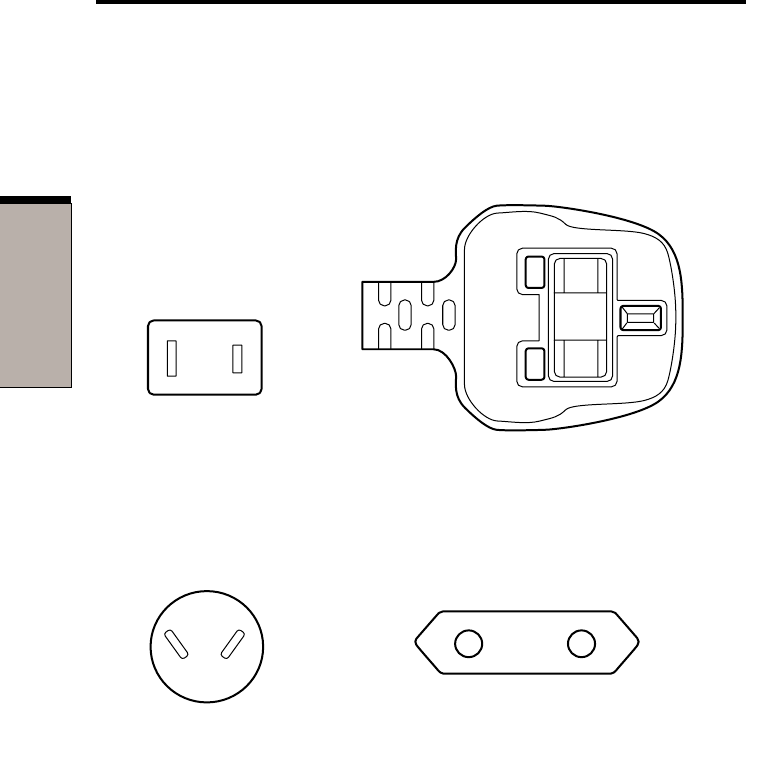
G-2
User's Manual
AA
AA
APPENDIXPPENDIX
PPENDIXPPENDIX
PPENDIX G G
G G
G
The following illustrations show the plug shapes for the U.S.A. and Canada, the
United Kingdom, Australia and Europe.
USA and Canada United KingdomUSA and Canada United Kingdom
USA and Canada United KingdomUSA and Canada United Kingdom
USA and Canada United Kingdom
Australia EuropeAustralia Europe
Australia EuropeAustralia Europe
Australia Europe
BS approved
UL approved
CSA approved
AS approved Approved by the
appropriate agency

H-1
AA
AA
A
PPENDIXPPENDIX
PPENDIXPPENDIX
PPENDIX
H H
H H
H
Appendix H
Internal Modem Guide
This appendix describes how to install and the remove the internal modem.
CAUTIONS: 1. Do not remove the base cover except to remove or
install the internal modem or to check the PTT label.
2. Do not disassemble the computer beyond the steps
described in this instruction or touch any components
not specifically described.
3. Always remove the Battery Pack and disconnect the AC
Adaptor before removing the base cover.
4. Be careful not to drop any screws or other foreign
matter into the computer. Metal or other foreign matter
can damage the computer.
Installing the internal modem
NOTE: The internal modem is preinstalled. The following is for informa-
tion only.
To install the modem board, follow the steps below.
1. Save your data, quit Windows and turn off the power.
2. Disconnect the AC Adaptor and any other peripheral devices.
3. Turn the computer upside down.
4. Remove one screw securing the modem socket cover.
5. Lift off the modem socket cover.
6. Connect the modem cable to the modem board.
7. Remove two screws from the modem board socket.
8. Align the connectors and seat the modem board.
9. Secure the modem board with the two screws removed in step 7.
10. Seat the modem socket cover and secure it with one screw.
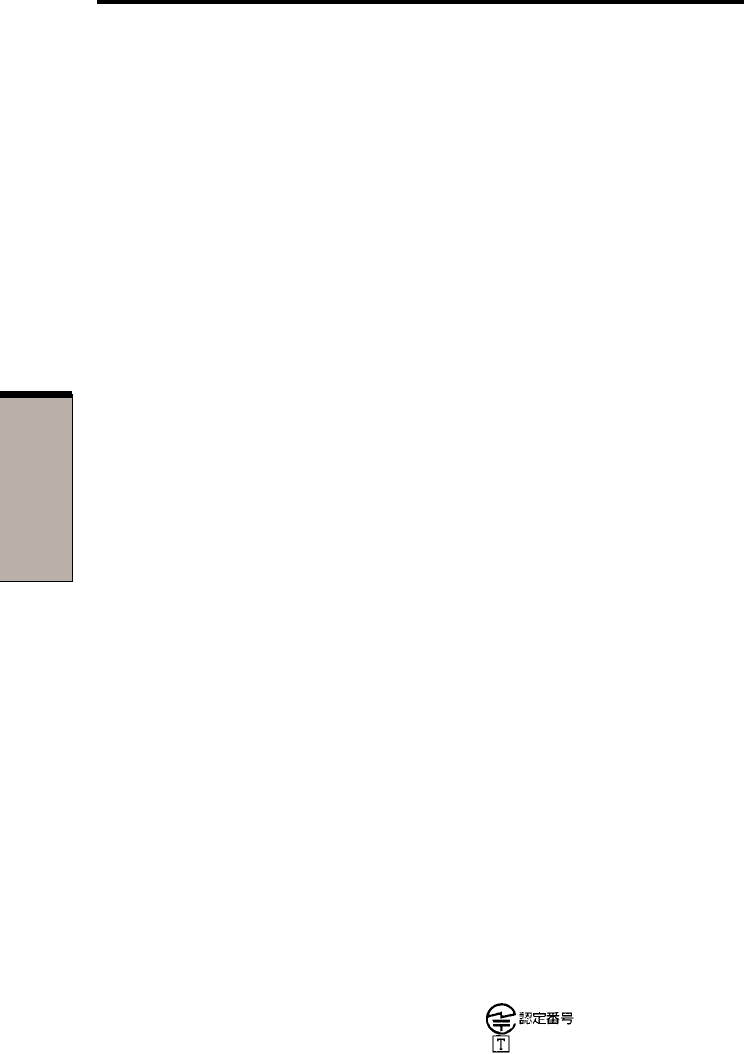
H-2
User’s Manual
AA
AA
APPENDIXPPENDIX
PPENDIXPPENDIX
PPENDIX H H
H H
H
Removing the internal modem
To remove the internal modem.
1. Save your data, quit Windows and turn off the power.
2. Disconnect the AC Adaptor and any other peripheral devices.
3. Turn the computer upside down.
4. Remove the battery.
5. Remove one screw securing the modem socket cover.
6. Lift off the modem socket cover.
7. Remove two screws securing the modem board. Store the screws in a safe
place. Be careful not to lose them
8. Disconnect the modem board and lift it out.
9. Disconnect the modem cable.
10. Seat the modem socket cover and secure it with one screw.
The internal modem is approved by Japan Approvals Institute for Telecommu-
nications Equipment. A00-0940JP

A
PPENDIX
I
I-1
Appendix I
Parts Numbers
The computer configuration and parts numbers, printed on a label on the bottom of
the computer, indicate the CPU, LCD, memory, HDD and communication devices.
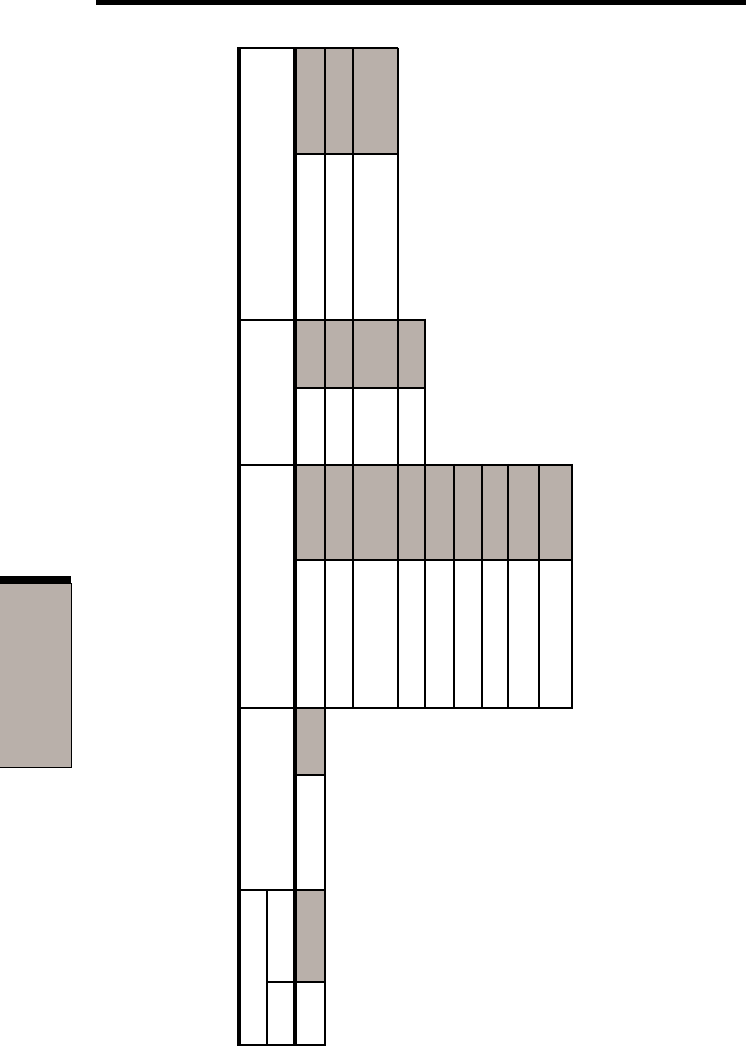
APPENDIX I
User's Manual
I-2
Configurations
The following table shows the computer configuration indicated on a label. Shaded areas indicate abbreviations used on the label.
The explanations are to the left of the shading. Abbreviations are not limited to those in this chart. They may change without
notice.
CPU LCD Memory HDD Communication
Pentium III
1330 P1330 12"TFT-XGA 12TX 128MB 128M 20G 20 Wireless LAN WL
128MB+128MB 256M 30G 30 Bluetooth BT
256MB 256M 40G 40 Wireless LAN WL/BT
/Bluetooth
256MB+128M 384M 60G 60
256MB+256MB 512M
512MB 512M
512MB+128MB 640M
512MB+256MB 768M
512MB+512MB 1024M
* Figures indicate the CPU operating speed in megahertz. For example, P1330 means Mobile Intel® Pentium® III processor
1.33 GHz-M .

G
LOSSARY
Glossary-1
Glossary
The terms in this glossary cover the topics discussed in this manual. Alternate
naming is included for reference.
Abbreviations
AC: alternating current
ANSI: American National Standards
Institute
APM: advanced power manager
ASCII: American Standard Code for
Information Interchange
BIOS: basic input output system
CMOS: complementary metal-oxide
semiconductor
CPU: central processing unit
CRT: cathode ray tube
DAA: Data Access Arrangement
DC: direct current
DDC: display data channel
DMA: direct memory access
DOS: disk operating system
DVI: Digital Visual Interface
ECP: extended capabilities port
EGA: enhanced graphics adaptor
FDD: floppy disk drive
FIR: fast infrared
HDD: hard disk drive
IDE: integrated drive electronics
I/O: input/output
IrDA: Infrared Data Association
IRQ: interrupt request
KB: kilobyte
LCD: liquid crystal display
LED: light emitting diode
LSI: large scale integration
MDA: monochrome display adaptor
MS-DOS: Microsoft Disk Operating
System
OCR: optical character recognition
(reader)
PCB: printed circuit board
PCI: peripheral component intercon-
nect
RAM: random access memory
RGB: red, green, and blue
ROM: read only memory
RTC: real time clock.
SCSI: small computer system
interface
SIO: serial input/output
SVGA: super video graphics adaptor
TFT: thin-film transistor
UART: universal asynchronous
receiver/transmitter
USB: Universal Serial Bus

GLOSSARY
Glossary-2
ANSI: American National Standards
Institute. An organization established
to adopt and define standards for a
variety of technical disciplines. For
example, ANSI defined the ASCII
standard and other information
processing requirements.
antistatic: A material used to prevent
the buildup of static electricity.
application: A group of programs
that together are used for a specific
task such as accounting, financial
planning, spreadsheets, word process-
ing, and games, etc.
ASCII: American Standard Code for
Information Interchange. ASCII code
is a set of 256 binary codes that
represent the most commonly used
letters, numbers, and symbols.
async: Short for asynchronous.
asynchronous: Lacking regular time
relationship. As applied to computer
communications, asynchronous refers
to the method of transmitting data that
does not require a steady stream of bits
to be transmitted at regular time
intervals.
AUTOEXEC.BAT: A batch file that
executes a series of MS-DOS com-
mands and programs each time you
start the computer.
(Abbreviations continued)
VESA: Video Electronic Standards
Association
VGA: video graphics array
VRT: voltage reduction technology
A
adaptor: A device that provides an
interface between two dissimilar
electronic devices. For example, the
AC adaptor modifies the power from a
wall outlet for use by the computer.
This term also refers to the add-in
circuit cards that control external
devices, such as video monitors and
magnetic tape devices.
allocate: To assign a space or
function for a specific task.
alphanumeric: Keyboard characters
including letters, numbers and other
symbols, such as punctuation marks or
mathematical symbols.
alternating current (AC): Electric
current that reverses its direction of
flow at regular intervals.
analog signal: A signal whose
characteristics such as amplitude and
frequency vary in proportion to (are
an analog of) the value to be transmit-
ted. Voice communications are analog
signals.
adaptor

G
LOSSARY
Glossary-3
B
backup: A duplicate copy of files kept
as a spare in case the original is
destroyed.
batch file: A file that can be executed
from the system prompt containing a
sequence of operating system com-
mands or executable files. See also
AUTOEXEC.BAT.
binary: The base two number system
composed of zeros and ones (off or
on), used by most digital computers.
The right most digit of a binary
number has a value of 1, the next a
value of 2, then 4, 8, 16, and so on.
For example, the binary number 101
has a value of 5. See also ASCII.
BIOS: Basic Input Output System.
The firmware that controls data flow
within the computer. See also firm-
ware.
bit: Derived from “binary digit,” the
basic unit of information used by the
computer. It is either zero or one.
Eight bits is one byte. See also byte.
board: A circuit board. An internal
card containing electronic components,
called chips, which perform a specific
function or increase the capabilities of
the system.
boot: Short for bootstrap. A program
that starts or restarts the computer.
The program reads instructions from a
storage device into the computer’s
memory.
bps: Bits per second. Typically used
to describe the data transmission
speed of a modem.
buffer: The portion of the computer’s
memory where data is temporarily
stored. Buffers often compensate for
differences in the rate of flow from
one device to another.
bus: An interface for transmission of
signals, data or electric power.
byte: The representation of a single
character. A sequence of eight bits
treated as a single unit; also the
smallest addressable unit within the
system.
C
cache memory: High speed memory
which stores data that increases
processor speed and data transfer rate.
When the CPU reads data from main
memory, it stores a copy of this data in
cache memory. The next time the CPU
needs that same data, it looks for it in
the cache memory rather than the main
memory, which saves time. The
computer has two cache levels. Level
one is incorporated into the processor
and level two resides in external
memory.
cache memory

GLOSSARY
Glossary-4
capacity: The amount of data that can
be stored on a magnetic storage
device such as a diskette (floppy
disk) or hard disk. It is usually
described in terms of kilobytes (KB),
where one KB = 1024 bytes and
megabytes (MB), where one MB =
1024 KB.
card: Synonym for board. See board.
CardBus: An industry standard bus
for 32-bit PC Cards.
CD-ROM: A Compact Disk-Read
Only Memory is a high capacity disk
that can be read from but not written
to. The CD-ROM drive uses a laser,
rather than magnetic heads, to read
data from the disk.
character: Any letter, number,
punctuation mark, or symbol used by
the computer. Also synonymous with
byte.
chassis: The frame containing the
computer.
chip: A small semiconductor contain-
ing computer logic and circuitry for
processing, memory, input/output
functions and controlling other chips.
CMOS: Complementary Metal-Oxide
Semiconductor. An electronic circuit
fabricated on a silicon wafer that
requires very little power. Integrated
circuits implemented in CMOS
technology can be tightly packaged
and are highly reliable.
cold start: Starting a computer that is
currently off (turning on the power).
commands: Instructions you enter at
the terminal keyboard that direct the
actions of the computer or its periph-
eral devices.
communications: The means by
which a computer transmits and
receives data to and from another
computer or device.
compatibility: 1) The ability of one
computer to accept and process data in
the same manner as another computer
without modifying the data or the
media upon which it is being trans-
ferred. 2) the ability of one device to
connect to or communicate with
another system or component.
components: Elements or parts (of a
system) which make up the whole
(system).
computer program: A set of instruc-
tions written for a computer that
enable it to achieve a desired result.
computer system: A combination of
hardware, software, firmware, and
peripheral components assembled to
process data into useful information.
configuration: The specific compo-
nents in your system (such as the
terminal, printer, and disk drives) and
the settings that define how your
system works. You use the HW Setup
program to control your system
configuration.
capacity

G
LOSSARY
Glossary-5
control keys: A key or sequence of
keys you enter from the keyboard to
initiate a particular function within a
program.
controller: Built-in hardware and
software that controls the functions of
a specific internal or peripheral device
(e.g. keyboard controller).
co-processor: A circuit built into the
processor that is dedicated to intensive
math calculations.
CPS: Characters per second. Typi-
cally used to indicate the transmission
speed of a printer.
CPU: Central processing unit. The
portion of the computer that interprets
and executes instructions.
CRT: Cathode Ray Tube. A vacuum
tube in which beams projected on a
fluorescent screen-producing luminous
spots. An example is the television
set.
cursor: A small, blinking rectangle or
line that indicates the current position
on the display screen.
D
data: Information that is factual,
measurable or statistical that a
computer can process, store, or
retrieve.
data access arrangement: Circuitry
that isolates a modem or other device
from telephone lines.
data bits: A data communications
parameter controlling the number of
bits (binary digits) used to make up a
byte. If data bits = 7 the computer can
generate 128 unique characters. If
data bits = 8 the computer can
generate 256 unique characters.
DC: Direct Current. Electric current
that flows in one direction. This type
of power is usually supplied by
batteries.
default: The parameter value
automatically selected by the system
when you or the program do not
provide instructions. Also called a
preset value.
delete: To remove data from a disk
or other data storage device. Synony-
mous with erase.
device driver: A program that
controls communication between a
specific peripheral device and the
computer. The CONFIG.SYS file
contains device drivers that MS-DOS
loads when you turn the computer on.
dialog box: A window that accepts
user input to make system settings or
record other information.
disk drive: The device that randomly
accesses information on a disk and
copies it to the computer’s memory. It
also writes data from memory to the
disk. To accomplish these tasks, the
unit physically rotates the disk at high
speed past a read-write head.
disk drive

GLOSSARY
Glossary-6
disk storage: Storing data on magnetic
disk. Data is arranged on concentric
tracks much like a phonograph record.
diskette: A removable disk that stores
magnetically encoded data used on a
microcomputer. Also called floppy
disk.
display: A CRT, plasma screen, LCD,
or other image producing device used
to view computer output.
documentation: The set of manual
and/or other instructions written for the
users of a computer system or applica-
tion. Computer system documentation
typically includes procedural and
tutorial information as well as system
functions.
DOS: Disk operating system. See
operating system.
driver: A software program, generally
part of the operating system, that
controls a specific piece of hardware
(frequently a peripheral device such as
a printer or mouse).
E
echo: To send back a reflection of the
transmitted data to the sending device.
You can display the information on the
screen, or output it to the printer, or
both. When a computer receives back
data it transmitted to a CRT (or other
peripheral device) and then retransmits
the data to printer, the printer is said to
echo the CRT.
erase: See delete.
escape: 1) A code ( ASCII code 27),
signaling the computer that what
follows are commands; used with
peripheral devices such as printers and
modems. 2) A means of aborting the
task currently in progress.
escape guard time: A time before and
after an escape code is sent to the
modem which distinguishes between
escapes that are part of the transmit-
ted data, and escapes that are in-
tended as a command to the modem.
execute: To interpret and execute an
instruction.
Extended Capability Port: An industry
standard that provides a data buffer,
switchable forward and reverse data
transmission, and run length encoding
(RLE) support.
F
fast infrared: An industry standard
that enables cableless infrared serial
data transfer at speeds of up to 4
Mbps.
file: A collection of related informa-
tion; a file can contain data, programs,
or both.
firmware: A set of instructions built
into the hardware which controls and
directs a microprocessor’s activities.
fixed disk: See hard disk.
disk storage

G
LOSSARY
Glossary-7
floppy disk: See diskette.
floppy disk drive (FDD): An electrome-
chanical device that reads and writes to
floppy disks. See also diskette.
Fn-esse: A TOSHIBA utility that lets
you assign functions to hotkeys.
folder: An icon in Windows used to
store documents or other folders.
format: The process of readying a
blank disk for its first use. Formatting
establishes the structure of the disk
that the operating system expects
before it writes files or programs onto
the disk.
function keys: The keys labeled F1
through F12 that tell the computer to
perform certain functions.
G
gigabyte (GB): A unit of data
storage equal to 1024 megabytes.
See also megabyte.
GND: Ground. An RS-232C signal
used in the exchange of data between a
computer and serial device.
graphics: The use of drawings,
pictures, or other images, such as
charts or graphs, to present informa-
tion.
H
hard disk: A non-removable disk
usually referred to as drive C. The
factory installs this disk and only a
trained engineer can remove it for
servicing. Also called fixed disk.
hard disk drive (HDD): An electro-
mechanical device that reads and
writes a hard disk. See also hard disk.
hardware: The physical electronic
and mechanical components of a
computer system: typically, the
computer itself, external disk drives,
etc. See also software and firmware.
hertz: A unit of wave frequency that
equals one cycle per second.
hexadecimal: The base 16 numbering
system composed of the digits 0
through 9 and the letters A, B, C, D,
E, and F.
host computer: The computer that
controls, regulates, and transmits
information to a device or another
computer.
hot dock/undock: Connecting or
disconnecting a device to or from the
computer while the computer’s power
is turned on.
hotkey: The computer’s feature in
which certain keys in combination
with the extended function key, Fn,
can be used to set system parameters,
such as speaker volume.
hotkey

GLOSSARY
Glossary-8
HW Setup: A TOSHIBA utility that
lets you set the parameters for various
hardware components.
I
icon: A small graphic image displayed
on the screen or in the indicator panel.
In Windows, an icon represents an
object that the user can manipulate.
infrared port: A cableless communi-
cations capable of using infrared
signals to send serial data.
input: The data or instructions you
provide to a computer, communication
device or other peripheral device from
the keyboard or external or internal
storage devices. The data sent (or
output) by the sending computer is
input for the receiving computer.
instruction: Statements or commands
that specify how to perform a particu-
lar task.
interface: 1) Hardware and/or
software components of a system
used specifically to connect one
system or device to another. 2) To
physically connect one system or
device to another to exchange
information. 3) The point of contact
between user, the computer, and the
program, for example, the keyboard or
a menu.
interrupt request: A signal that gives
a component access to the processor.
I/O: Input/output. Refers to accep-
tance and transfer of data to and from
a computer.
I/O devices: Equipment used to
communicate with the computer and
transfer data to and from it.
J
jumper: A small clip or wire that
allows you to change the hardware
characteristics by electrically connect-
ing two points of a circuit.
K
K: Taken from the Greek word kilo,
meaning 1000; often used as equiva-
lent to 1024, or 2 raised to the 10th
power. See also byte and kilobyte.
KB: See kilobyte.
keyboard: An input device containing
switches that are activated by manu-
ally pressing marked keys. Each
keystroke activates a switch that
transmits a specific code to the
computer. For each key, the transmit-
ted code is, in turn, representative of
the (ASCII) character marked on the
key.
HW Setup

G
LOSSARY
Glossary-9
.
M
main board: See motherboard.
megabyte (MB): A unit of data
storage equal to 1024 kilobytes. See
also kilobyte.
megahertz: A unit of wave frequency
that equals 1 million cycles per
second. See also hertz.
menu: A software interface that
displays a list of options on the
screen. Also called a screen.
microprocessor: A hardware compo-
nent contained in a single integrated
circuit that carries out instructions.
Also called the central processing unit
(CPU), one of the main parts of the
computer.
mode: A method of operation, for
example, the boot mode or the resume
mode.
modem: Derived from modulator/
demodulator, a device that converts
(modulates) digital data for transmis-
sion over telephone lines and then
converts modulated data (demodu-
lates) to digital format where received.
monitor: A device that uses rows and
columns of pixels to display alphanu-
meric characters or graphic images.
See CRT.
monitor
kilobyte (KB): A unit of data storage
equal to 1024 bytes. See also byte
and megabyte.
L
level 2 cache: See cache.
Light Emitting Diode (LED): A
semiconductor device that emits light
when a current is applied.
Liquid Crystal Display (LCD): Liquid
crystal sealed between two sheets of
glass coated with transparent con-
ducting material. The viewing-side
coating is etched into character
forming segments with leads that
extend to the edge of the glass.
Applying a voltage between the glass
sheets darkens the liquid crystal to
provide contrast to lighted portions of
the display.
LSI: Large Scale Integration. 1) A
technology that allows the inclusion of
up to 100,000 simple logic gates on a
single chip. 2) An integrated circuit
that uses the large scale integration.

GLOSSARY
Glossary-10
motherboard: A name sometimes used
to refer to the main printed circuit
board in processing equipment. It
usually contains integrated circuits
that perform the processor’s basic
functions and provides connectors for
adding other boards that perform
special functions. Sometimes called a
main board.
N
non-system disk: A formatted
diskette (floppy disk) you can use to
store programs and data but you
cannot use to start the computer. See
system disk.
nonvolatile memory: Memory, usually
read-only (ROM), that is capable of
permanently storing information.
Turning the computer’s power off
does not alter data stored in nonvola-
tile memory.
numeric keypad overlay: A feature
that allows you to use certain keys on
the keyboard to perform numeric
entry, or to control cursor and page
movement.
O
OCR: Optical Character Recognition
(reader). A technique or device that
uses laser or visible light to identify
characters and input them into a
storage device.
OCR wand: A device that reads, using
an optical device, hand written or
machine printed symbols into a
computer. See also OCR.
online state: A functional state of a
peripheral device when it is ready to
receive or transmit data.
operating system: A group of
programs that controls the basic
operation of a computer. Operating
system functions include interpreting
programs, creating data files, and
controlling the transmission and
receipt (input/output) of data to and
from memory and peripheral devices.
output: The results of a computer
operation. Output commonly indicates
data 1) printed on paper, 2) displayed
at a terminal, 3) sent through the serial
port of internal modem, or 4) stored on
some magnetic media.
motherboard

G
LOSSARY
Glossary-11
P
parity: 1) The symmetrical relationship
between two parameter values (inte-
gers) both of which are either on or off;
odd or even; 0 or 1. 2) In serial
communications, an error detection bit
that is added to a group of data bits
making the sum of the bits even or odd.
Parity can be set to none, odd, or even.
password: A unique string of charac-
ters used to identify a specific user.
The computer provides various levels
of password protection such as user,
supervisor and eject.
pel: The smallest area of the display
that can be addressed by software.
Equal in size to a pixel or group of
pixels. See pixel.
peripheral component interconnect:
An industry standard 32-bit bus.
peripheral device: An I/O device that
is external to the central processor and/
or main memory such as a printer or a
mouse.
pixel: A picture element. The smallest
dot that can be made on a display or
printer. Also called a pel.
plug and play: A capability with
Windows that enables the system to
automatically recognize connections of
external devices and make the neces-
sary configurations in the computer.
port: The electrical connection
through which the computer sends
and receives data to and from devices
or other computers.
printed circuit board (PCB): A
hardware component of a processor to
which integrated circuits and other
components are attached. The board
itself is typically flat and rectangular,
and constructed of fiberglass, to form
the attachment surface.
program: A set of instructions a
computer can execute that enables it to
achieve a desired result. See also
application.
prompt: A message the computer
provides indicating it is ready for or
requires information or an action from
you.
R
Radio frequency interference (RFI)
shield: A metal shield enclosing the
printed circuit boards of the printer or
computer to prevent radio and TV
interference. All computer equipment
generates radio frequency signals.
The FCC regulates the amount of
signals a computing device can allow
past its shielding. A Class A device is
sufficient for office use. Class B
provides a more stringent classifica-
tion for home equipment use.
TOSHIBA portable computers comply
with Class B computing device
regulations.
Radio frequency interference (RFI) shield

GLOSSARY
Glossary-12
soft key: Key combinations that
emulate keys on the IBM keyboard,
change some configuration options,
stop program execution, and access
the numeric keypad overlay.
software: The set of programs,
procedures and related documentation
associated with a computer system.
Specifically refers to computer
programs that direct and control the
computer system’s activities. See
also hardware.
stop bit: One or more bits of a byte
that follow the transmitted character
or group codes in asynchronous serial
communications.
subpixel: Three elements, one red,
one green and blue (RGB), that make
up a pixel on the color LCD. The
computer sets subpixels indepen-
dently, each may emit a different
degree of brightness. See also pixel.
synchronous: Having a constant time
interval between successive bits,
characters or events.
system disk: A disk that has been
formatted with an operating system.
For MS-DOS the operating system is
contained in two hidden files and the
COMMAND.COM file. You can boot
a computer using a system disk. Also
called an operating system disk.
Random Access Memory (RAM)
Random Access Memory (RAM):
High speed memory within the
computer circuitry that can be read or
written to.
restart: Resetting a computer without
turning it off (also called ‘warm boot’
or ‘soft reset’). To restart the com-
puter, press Ctrl + Alt + Del while the
computer is on. See also boot.
RGB: Red, green, and blue. A device
that uses three input signals, each
activating an electron gun for a
primary additive color (red, green, and
blue) or port for using such a device.
See also CRT.
RJ11: A modular telephone jack.
ROM: Read Only Memory: A
nonvolatile memory chip manufac-
tured to contain information that
controls the computer’s basic opera-
tion. You cannot access or change
information stored in ROM.
S
SCSI: Small Computer System
Interface is an industry standard
interface for connection of a variety of
peripheral devices.
SIO: Serial Input/Output. The
electronic methodology used in serial
data transmission.

G
LOSSARY
Glossary-13
T
terminal: A typewriter-like keyboard
and CRT display screen connected to
the computer for data input/output.
TFT: A color LCD technology that
applies individual transistors to each
pixel enabling fine display control and
excellent screen legibility.
TOSHIBA Power Saver: A TOSHIBA
utility that lets you set the parameters
for various power-saving functions.
Touch pad: A pointing device inte-
grated into the TOSHIBA computer
palm rest.
TTL: Transistor-transistor logic. A
logic circuit design that uses switching
transistors for gates and storage.
U
Universal Serial Bus: This serial
interface lets you communicate with
several devices connected in a chain to
a single port on the computer.
V
VGA: Video graphics array is an
industry standard video adaptor that
lets you run any popular software.
write protection
volatile memory: Random access
memory (RAM) that stores informa-
tion as long as the computer is
connected to a power source.
W
Warm dock/undock: Connecting or
disconnecting a device to or from the
computer while the computer is
suspended.
warm start: Restarting or resetting a
computer without turning it off.
window: A portion of the screen that
can display its own application or
document. Often used to mean a
Microsoft Windows window.
Wireless LAN: A short-range radio
technology designed to simplify
wireless communication with other
LAN systems based on Direct
Sequence Spread Spectrum radio
technology that complies with the
IEEE 802.11 Standard (Revision B).
write protection: A method for
protecting a diskette (floppy disk)
from accidental erasure.

GLOSSARY
Glossary-14

Index-1
I
NDEX
Index
A
AC adaptor 1-4, 2-10
DC IN 15V port 2-4
connecting 3-6
universal 1-10, 8-10
ASCII characters 5-9
Auto power on, See Power
B
Battery, See also Battery Pack
charging 6-8
extending life 6-11
indicator 2-8, 6-4
lock 2-6, 6-12
monitoring capacity 6-9
real time clock 1-4, 6-6
safety precautions 6-7
save mode 1-7
types 6-5
Battery Charger 1-10, 8-11
Battery Pack 1-4, 1-10, 6-5, 8-10
High Capacity 2nd 1-10, 8-10
location 2-5
replacing 6-11
Boot priority 7-7
C
Cache memory
CPU cache 1-3
Level 2 cache 1-3
Charger, See Battery Charger
Cleaning the computer 4-14
Cooling 1-8, 4-15
D
DC IN indicator 2-8, 6-4
Disk indicator 2-8
Diskette care 4-4
Display 1-3, 2-6, See also Video
modes and Monitor external
automatic power off 1-6
controller 1-3, Appendix B
driver 1-9
hinge 2-6
opening 3-5
selection, See Hot keys
Documentation list 1-2
E
Environment 3-2
Equipment checklist 1-1
Equipment setup
general conditions 3-2
placement 3-2
Ergonomics
lighting 3-4
seating and posture 3-3
work habits 3-4
Expansion memory, See Memory
expansion
F
Fn + 1 (volume decrease) 5-4
Fn + 2 (volume increase) 5-4
Fn + Alt (enhanced keyboard simula-
tion) 5-3
Fn + Ctrl (enhanced keyboard simula-
tion) 5-3
Fn + Enter 5-3

Index-2
User's Manual
INDEX
Fn + Esc (sound mute) 5-4
Fn-esse 1-8
Fn + F1 (instant security) 5-4
Fn + F2 (power save mode) 5-5
Fn + F3 (standby) 5-5
Fn + F4 (hibernation) 5-5
Fn + F5 (display selection) 5-5
Fn + F6 (display brightness) 5-6
Fn + F7 (display brightness) 5-6
Fn + F10 (arrow mode) 5-3, 5-7
Fn + F11 (numeric mode) 5-3, 5-8
Fn + F12 (ScrLock) 5-3
Fn Sticky key 5-6
Function Keys 5-2
H
Hard disk drive 1-3
automatic power off 1-6
problems 9-9
Hibernation 1-7, 5-5
Hotkeys 1-6, 5-4
display brightness 5-6
display selection 5-5
hibernation 5-5
instant security 5-4
power save mode 5-5
standby 5-5
sticky key utility 5-6
volume decrease 5-4
volume increase 5-4
HW Setup 1-8
accessing 7-1
Boot Priority 7-7
CPU 7-6
Device Config 7-6
Display 7-6
General 7-4
LAN 7-9
Password 7-4
USB 7-8
window 7-2, 7-3
I
Indicators 2-8, 6-4
Infrared port, See also Ports
problems 9-10
Instant security, See Hot keys
Interfaces, See Ports
Internet button 1-5, 2-6
K
Keyboard 1-4, 5-1
emulating enhanced keyboard 5-2
F1 . . . F12 function keys 5-2
problems 9-8
Typewriter keys 5-1
Keypad overlay 1-6, 5-7
arrow mode 5-7
numeric mode 5-8
temporarily changing modes 5-9
temporarily using normal keyboard
(overlay on) 5-8
temporarily using overlay (overlay
off) 5-9
turning on 5-7
Windows special keys 5-7
L
LAN, See also Wireless LAN 1-5
cable types 4-6
connecting 4-6
disconnecting 4-7
indicator 2-4
jack location 2-4
Network Device Switch 4-8
problems 9-17
Super Long Life scheme 4-10
using 4-6
LCD, See Display, Video modes and
Monitor external
Level 2 cache, See Cache memory
Lock, security, See Security lock

Index-3
I
NDEX
M
Main battery, See Battery Pack
Memory 1-3
expansion 1-10, 8-6
installing 8-7
removing 8-9
slots 1-3
Microphone, See sound system,
microphone
Microprocessor, See Processor
Modem 1-5, 4-10
connecting 4-13
disconnecting 4-14
jack location 2-4
problems 9-15
properties menu 4-11
region selection 4-10
Monitor external 8-12, See also
Video modes and Ports
problems 9-14
Moving the computer 4-14
N
Numeric keypad, See Keypad overlay
O
Operating system, See Windows
Overlay, See Keypad overlay
P
Panel power on/off, See Power
Password
power on 1-7
starting the computer with 6-14
supervisor 1-8, 7-9
user 7-4
PC card 1-5
installing 8-2
location of slots 2-3
problems 9-13
removing 8-4
Ports
DC IN 15V 2-4
docking 2-5
external monitor 1-4, 2-4
headphone, See Sound system
infrared 1-4, 2-3
LAN 2-4
microphone, See Sound system
modem 2-4
USB 1-4, 2-4
Power
auto power on 1-7
button location 2-6
indicator 2-8, 6-5
panel power on/off 1-7
restarting 3-13
turning off 3-8
turning on 3-7
system auto off 1-7
Power cord 1-4, 2-10
Problems
analyzing symptoms 9-2
diskette drive 9-10
hard disk drive 9-9
hardware and system checklist 9-3
infrared port 9-10
keyboard 9-8
LAN 9-17
LCD panel 9-8
modem 9-15
monitor, external 9-14
password 9-7
PC card 9-13
power 9-4
preliminary checklist 9-1
SD card 9-13
self test 9-4
sound system 9-14
support from TOSHIBA 9-18
system start-up 9-3
Touch Pad 9-11
USB 9-15
Index

Index-4
User's Manual
INDEX
USB mouse 9-12
Wireless LAN 9-17
Processor 1-3
R
Real time clock battery, See Battery
Recovery CD-ROM 3-13
S
Screen, See Display
ScrLock (Fn + F12), See Soft keys
SD card 1-5
indicator 2-2
installing 8-5
location of slot 2-2
problems 9-13
removing 8-6
Security lock 1-10
attaching 8-13
location 2-2
Self Test, See Problems
Sensor switch 2-6
Slim Port Replicator 1-10, 8-11
Soft keys 5-2
cursor control mode 5-3
Enter 5-3
numeric mode 5-3
right Alt key 5-3
right Ctrl key 5-3
ScrLock 5-3
Sound system 1-5
drivers 1-9
headphone 1-4, 2-3
microphone 1-4, 2-3
problems 9-14
speaker 2-5
Standby 1-7
System auto off 1-7
T
TOSHIBA Console button 1-5, 2-6
TOSHIBA Console 1-9
TOSHIBA Controls 1-9
TOSHIBA Power Saver 1-8
Touch Pad 1-4, 2-6
control buttons 2-6, 4-1
problems 9-11
using 4-1
Troubleshooting, See Problems
U
Utilities
list 1-8
USB 1-4
location 2-4
problems 9-15
USB FDD Kit 1-10, 8-11
connecting 4-3
disconnecting 4-4
problems 9-10
using 4-2
V
Video modes, Appendix B
Video RAM 1-3
W
Windows XP Professional setup 3-8
Windows 2000 setup 3-8
Wireless communication
indicator 2-8, 4-5
switch 2-3, 4-5
Wireless LAN 1-5
problems 9-17
using 4-5